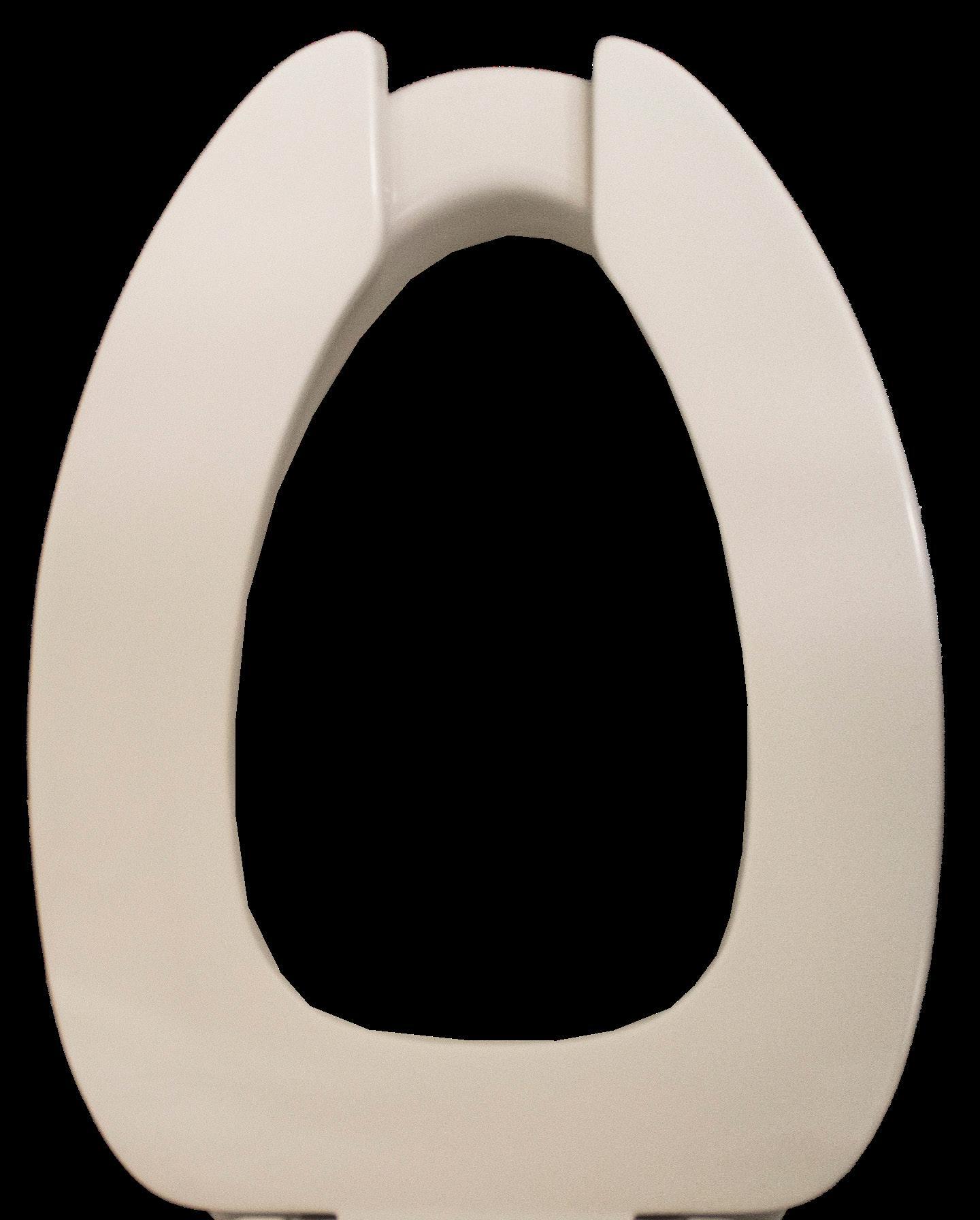












































Vol. CXLV, No. 24
21 Sussex Avenue, Suite 306 Toronto, ON M5S 1J6 (416) 946-7600

thevarsity.ca thevarsitynewspaper @TheVarsity thevarsitypublications the.varsity The Varsity

Eleanor Yuneun Park editor@thevarsity.ca
Editor-in-Chief
Kaisa Kasekamp creative@thevarsity.ca
Creative Director
Kyla Cassandra Cortez managingexternal@thevarsity.ca
Managing Editor, External
Ajeetha Vithiyananthan managinginternal@thevarsity.ca
Managing Editor, Internal
Maeve Ellis online@thevarsity.ca
Managing Online Editor
Ozair Anwar Chaudhry copy@thevarsity.ca
Senior Copy Editor
Isabella Reny deputysce@thevarsity.ca
Deputy Senior Copy Editor
Selia Sanchez news@thevarsity.ca
News Editor
James Bullanoff deputynews@thevarsity.ca
Deputy News Editor
Olga Fedossenko assistantnews@thevarsity.ca
Assistant News Editor
Charmaine Yu opinion@thevarsity.ca
Opinion Editor
Rubin Beshi biz@thevarsity.ca
Business & Labour Editor
Sophie Esther Ramsey features@thevarsity.ca
Features Editor
Divine Angubua arts@thevarsity.ca
Arts & Culture Editor
Medha Surajpal science@thevarsity.ca
Science Editor
Jake Takeuchi sports@thevarsity.ca
Sports Editor
Nicolas Albornoz design@thevarsity.ca
Design Editor
Aksaamai Ormonbekova design@thevarsity.ca
Design Editor
Zeynep Poyanli photos@thevarsity.ca
Photo Editor
Vicky Huang illustration@thevarsity.ca
Illustration Editor
Genevieve Sugrue, Milena Pappalardo video@thevarsity.ca
Video Editors
Emily Shen emilyshen@thevarsity.ca
Front End Web Developer
Andrew Hong andrewh@thevarsity.ca
Back End Web Developer
Razia Saleh utm@thevarsity.ca
UTM Bureau Chief
Urooba Shaikh utsc@thevarsity.ca
UTSC Bureau Chief
Matthew Molinaro grad@thevarsity.ca
Graduate Bureau Chief
Vacant publiceditor@thevarsity.ca
Public Editor
Associate Senior Copy Editors
Asmi Khanna, Damola Omole, Sharon Chan
Associate News Editors
Avin De, Shontia Sanders
Associate Opinion Editors
Caitlin Adams, Ameer N. Vidal
Associate Features Editors
Sofia Moniz, Chris Zdravko
Associate A&C Editors
Mashiyat Ahmed, Ridhi Balani
Associate Science Editors
Mariana Dominguez Rodriguez Social Media Manager
Associate Sports Editors
Medha Barath, Aunkita Roy Associate B&L Editors
Loise Yaneza, Brennan Karunaratne
Associate Design Editors
Jaylin Kim, Chloe Weston, Simona Agostino
Associate Illo Editors
Jason Wang, Kate Wang
Associate Photo Editors
Nidhil Vohra, Jennifer Song
Associate Video Editors
Yan Luk, Sataphon Obra
Associate Web Developers
Cover Vicky Huang, Chloe Weston, Simona Agostino, Jaylin Kim :
BUSINESS OFFICE
Ishir Wadhwa business@thevarsity.ca
Business Manager
Rania Sadik raniasadik@thevarsity.ca
Business Associate
Eva Tsai, Muzna Arif advertising@thevarsity.ca
Advertising Executives
The Varsity acknowledges that our office is built on the traditional territory of several First Nations, including the Huron-Wendat, the Petun First Nations, the Seneca, and most recently, the Mississaugas of the Credit. Journalists have historically harmed Indigenous communities by overlooking their stories, contributing to stereotypes, and telling their stories without their input. Therefore, we make this acknowledgement as a starting point for our responsibility to tell those stories more accurately, critically, and in accordance with the wishes of Indigenous Peoples.
thanks all of our staff for their hard work this year!
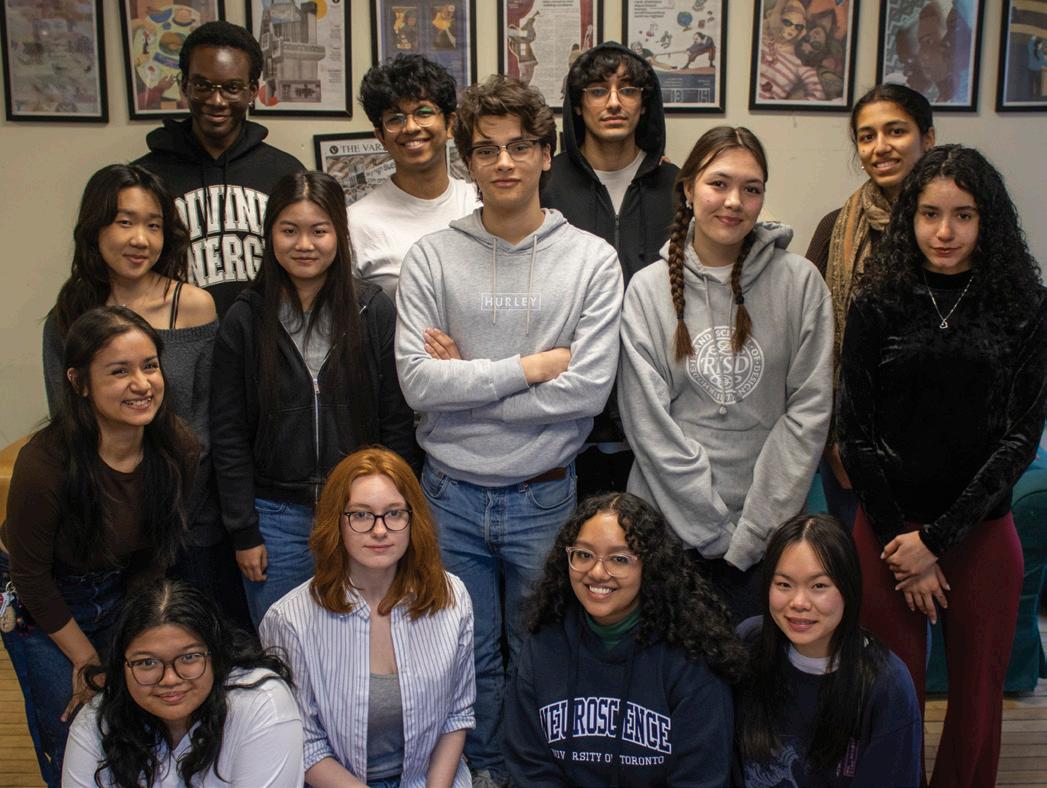
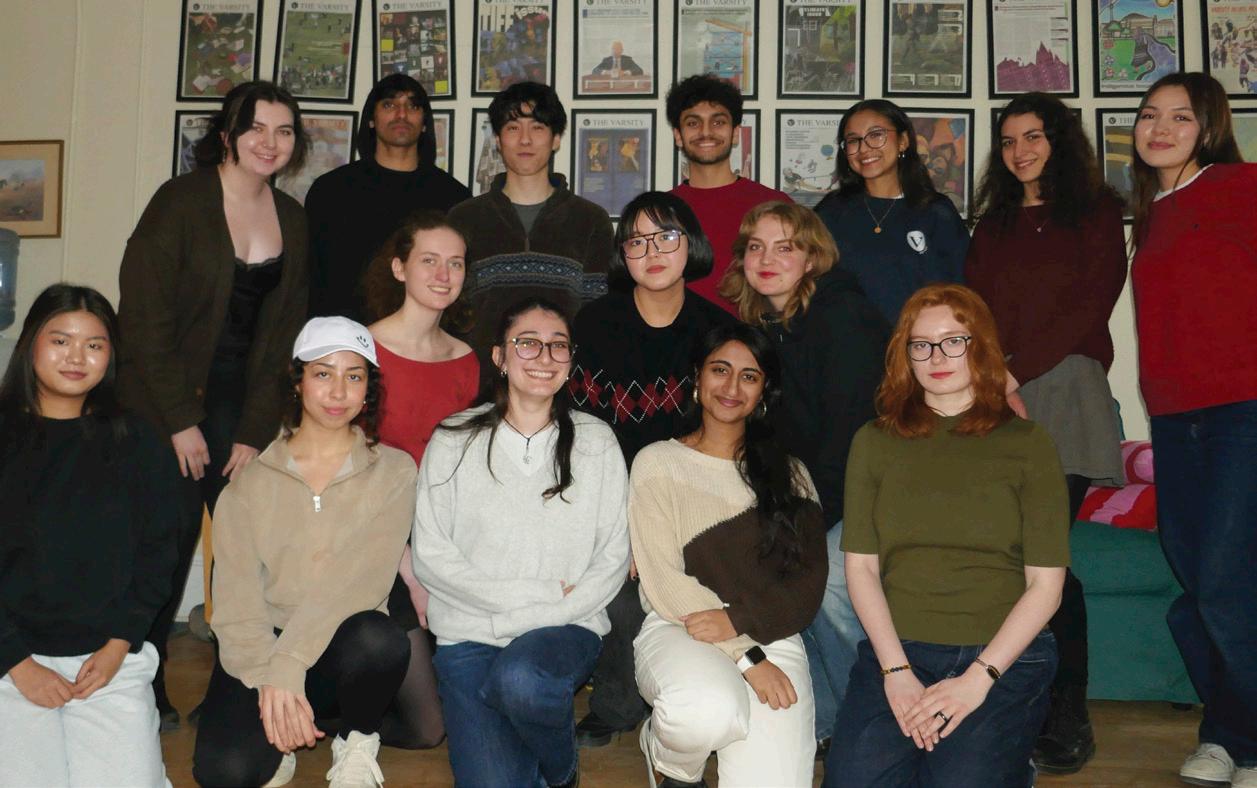
Abby Russchen, Ashley Wong, Elise Corbin, Nabila Irreza, Loise Yaneza, Santhija Jegatheeswaran, Sulaiman Hashim Khan, Xin Wren Shan, Zaneb Asad, Lauren Nicole Robinson, Fang Qing Lu, Jennifer Ahn, Siya Sharma, Benjamin Chapman, Brennan Karunaratne, Suchir Madhira, Taimoore Ibrahim Yousaf, Despina Zakynthinou, Dhritya Nair, Joao Pedro De Souza Domingues, Juliet Pieters, Madiha Syed, Matthew Cancelliere, Nancy Zhang, Raina Proulx-Sanyal, Virag Takacs, Yasmeen Banat, Zoe Eaton, Ahmed Hawamdeh, Ava Reitmaer-Stone, Ayesha Sidiqqui, Emma Dobrovnik, Oleksii Varlamov, Ragini Kaushal, Vesa Lunji, Yousuf Ramahi, Ajeetha Vithiyananthan, Aksaamai Ormobekova, Ameer Najarali Vidal, Andrew Hong, Aryan Chablani, Asmi Khanna, Aunkita Roy, Avin De, Bruno Macia, Caitlin Adams, Callie Zhang, Caroline Ho, Catherine Doan, Charel Suarez, Charlie Bendell, Charmaine Yu, Chloe Weston, Chris Zdravko, Constantine Vrachas Matthaios, Damola Omole, Devin Botar, Divine Angubua, Eleanor Yuneun Park, Emily Shen, Genevieve Sugrue, Isabella Reny, Jake Takeuchi, James Bullanoff, Jason Wang, Jaylin Kim, Jennifer Song, Jessie Schwalb, Jishna Sunkara, Kaisa Kasekamp, Karen Adedeji, Kate Caracci, Kate Wang, Kyla Cassandra Cortez, Loise Yaneza, Madison Truong, Maeve Ellis, Maram Qarmout, Mari Khan, Mariana Dominguez Rodriguez, Mashiyat Ahmed, Matthew Molinaro, Medha Barath, Medha Surajpal, Milena Pappalardo, Nandini Shrotriya, Nicolas Albornoz, Nidhil Vohra, Nora Zolfaghari, Olga Fedossenko, Ozair Chaudhry, Razia Saleh, Ridhi Balani, Rubin Beshi, Selia Sanchez, Sharon Chan, Shontia Sanders, Simona Agostino, Sofia Moniz, Sofia Tarnopolsky, Sophie Esther Ramsey, Urooba Shaikh, Valerie Yao, Vicky Huang, Victor Zhang, Vyusti Magan Shroff, Zeynep Poyanli
Eleanor Yuneun Park
Editor-In-Chief
In my office at 21 Sussex Avenue, Cornelius Brothers & Sister Rose’s Too Late to Turn Back Now often rings in repeat at 2:00 am on a hushed weekday.
The day in question was a late night like any other. Midway through the year, I found myself typing and clicking in my edits to an article way past midnight — deprived of sleep, food, and the willpower to snap me out of The Varsity work and back into long overdue schoolwork. Too Late to Turn Back Now was playing lightly in the background in honour of someone preoccupying my mind at the time.
Then it hit me: I was a woman in love — but with The Varsity
Mind you, this was no romantic realization. It was a humiliating moment of epiphany to realize that the Cornelius Brothers & Sister Rose were singing about my relationship with this newspaper.
I find myself “phoning” Varsity people on Slack at least 10 times a day. This love puts me in misery. And I can’t sleep at night. This feeling just can’t be right. And it’s too late to turn back now.
With another human, the humiliation ritual of falling in love is fortunately an authenticity receipt of the heart and a trailer to a mutually reciprocative relationship to come. With The Varsity, it’s a slightly different story.
Many people who were in a long-term relationship with this paper started because they cared. Whether it be the quality of college dining hall food, U of T’s grading system, sexual violence policy, student union concerns, or even pigeons on campus — there’s something catching our nosy eyes that draws us to the newspaper because we ultimately care.
But when you’re locked in a century-old building every weekend — pouring in hours of writing and editing and poring through the granular details of a meeting minute document — the reason you joined the paper can seem faint. Journalism as an industry is already webbed with
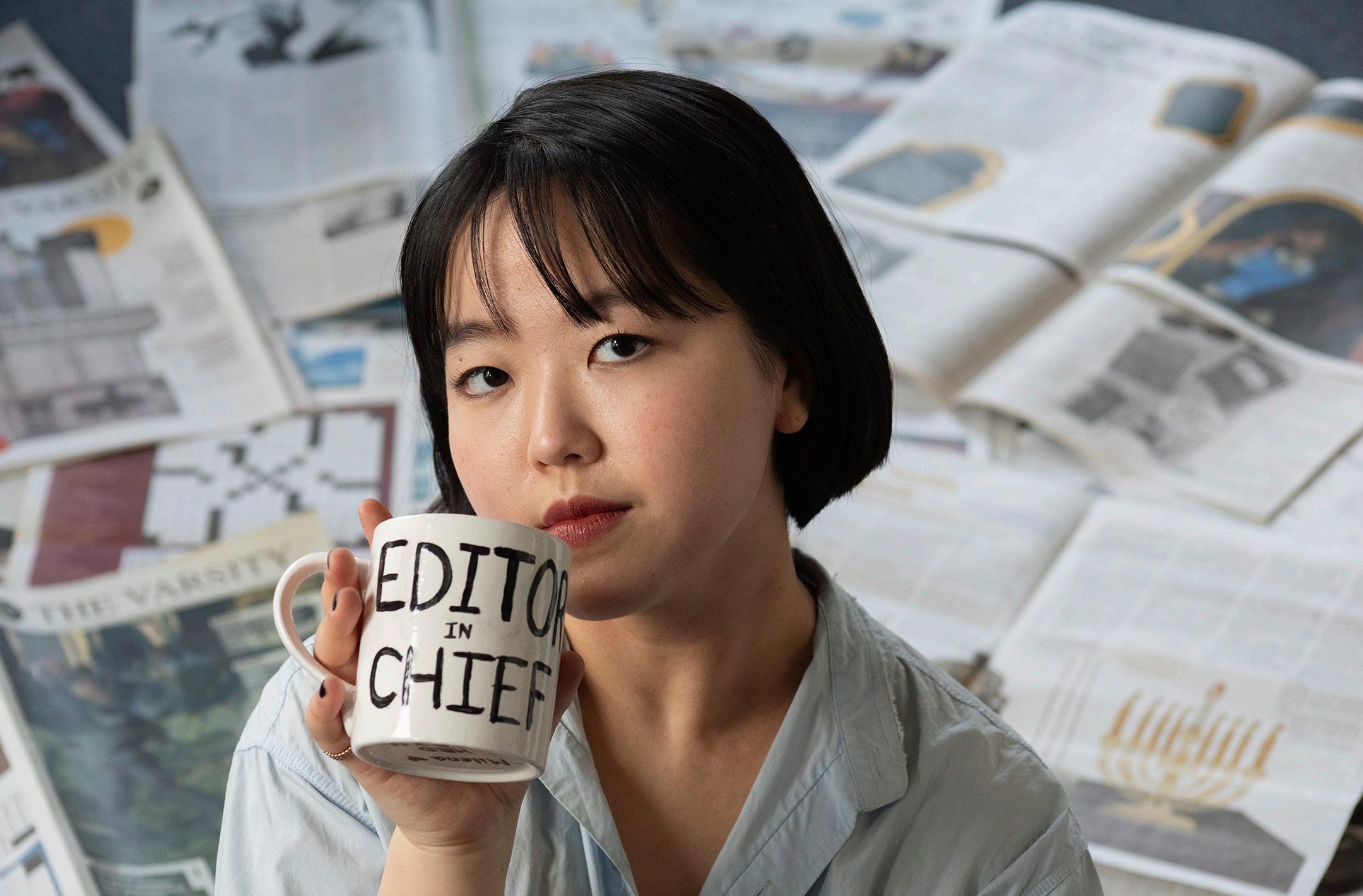
traces of overworked, underpaid, and consistently threatened journalists running to and fro. Student journalism simply follows suit.
This year has particularly been tough for our team. Our second day on the job, even before transitioning into our new positions, started at 4:00 am at King’s College Circle to cover the proPalestine student encampment. Our team was essentially on a two-month-long breaking news cycle, and our Slack channels buzzed throughout days and nights. Everyone was catapulted into their new roles, and this was difficult.
No doubt, our team has been an overwhelmingly powerful and passionate one. I could have never asked for a better team, and it’s important to celebrate our work.
Among The Varsity’s total eight nominations for the Canadian University Press’ John H. McDonald awards for excellence in student journalism, the News team was awarded for their five-day live encampment reporting, and Arts & Culture Editor Divine was awarded for his review of UTM student Treasure Fatile’s exhibition. Creative Director Kaisa
and Features Editor Sophie have published two beautiful magazines, and our Equity Board will soon be publishing our first Visuals Equity guide.
But I’ve also seen how the uniquely challenging year has taken a toll on everyone who diligently clocks into 21 Sussex Avenue every weekend. I know how the tumultuous year has affected me when I realize that the exhaust exhorts me to automatically seek problems to solve, not issues to care about.
To this moment, I don’t have a resolute conclusion to the dilemma of working in a field that people join because they care, only to be burned out from caring. On particularly long, late nights this year, it often seemed on paper like there was not much reciprocity between us and this thing we love. But it does seem to me like that’s the responsibility and weight of paying attention. Especially at a time when there is a menacing sweep on press freedom and university students’ right to free speech in the country south of us, the need to care about what whirls by us every day is essential — even life-saving. It’s never pleasant
to care so much and to squint at every detail, but the effort to squint helps us read the line — and between the lines — better. I guess that’s what love is: understanding the weight and pain of it, rather than simply expecting reciprocity.
Thank you for taking the time to care about The Varsity and what we reported on this year. I hope our love and care for the paper and our community was made clear to you. I’m immensely proud of all that went into creating Volume 145 — the very act which could not have been done without the beloved people who form our paper.
I want to thank our Management team: to the omniscient Ajeetha for her sharp judgments on the most complicated of matters, to Kyla for her warm encouragements to everyone in the office going through it, to Maeve for her commendable professionalism that balances my corny desire to be ‘chill,’ and to Kaisa for her sublime creative vision — and being the best coworker in a best friend one could ask for.
Truly nothing can be done without our copy
team, and for this, I thank Ozair for his levelheaded meticulousness that I could never emulate and Isabella for passionately engaging our copy editors.
Our News team of Selia, James, and Olga was the trifecta of News editors who will never cease to amaze me with their incredible dedication to delivering the U of T community with news when it’s hot. Special thanks to our News bureau chiefs, Urooba, Matthew, and Razia for ensuring our stories were reaching every corner of our campuses and student lives.
I’m so thankful for Charmaine, Rubin, and Divine respectively for innate sensitivity in editing opinion articles, extensively thorough pieces on labour units and student start-ups, and liberating creative arts pieces — but also for having trust in me from the start as Comment Editor.
Sophie delicately protected writers’ most personal stories that can only be told through their lenses, and Jake consistently excited even me — a classic sports neophyte — with ways
to engage our sports coverage with the average reader. Nicolas and Aksaamai’s jubilant energy and playlists breathed life into anyone who walked into the design office, and Vicky’s illustrations and Zeynep’s photos brought aesthetic heaven to The Varsity
Milena and Genevieve both seamlessly boosted our social media and YouTube engagement, and our wonderful Andrew and Emily ensured our news was digitally delivered to you, safe and sound.
It really does take a village to raise a Varsity child. I’m grateful for my parents who had to deal with my 3:00 am calls from emergency rooms, and I am thankful for Nawa, Caroline, Alice, Artie, and Tahmeed for having my back this year during confusing and difficult times. I also couldn’t have asked for more supportive Board Directors than Paul and Ibnul.
I’m thankful for Shernise, who first launched my Varsity years as Associate Comment Editor, and for Jadine for being my role model of an
Asian woman in leadership that I couldn’t find anywhere else.
Next year, The Varsity will operate under Medha’s leadership. As Science Editor, Medha has led not only a strong section but a group of editors and writers who care. I cannot be more confident in passing the editing mouse over to someone who cares about the people behind the story as much as the story itself. It takes a lot for someone to care, but it’s only natural for Medha. The more you care, the more you’ll squint. The more you squint, the more you see. And the more you see, the more you’ll care. By that point, it’s too late to turn back — welcome to The Varsity
This has been way too long of a letter so I’ll sign off anticlimactically. Shout out to Imogen Heap, Linkin Park, Sickmode, Saint Levant, and Lil Wayne for being there for me through this year.
Kasekamp & Ajeetha Vithiyananthan
Creative Director & Managing Editor, Internal
Around four years ago, The Varsity’s creative team first started gathering ideas for a visual equity guide. The guide would set out general concerns and best practices for the illustrations and photography that would bring life, in its full colour, to our pages.
However, it was not until May 2024, with the pro-Palestine student encampment at King’s College Circle, that the Volume 145 creative team felt that The Varsity urgently needed one. Whereas the institutional knowledge of previous management members may have been enough, the new team, starting their jobs two days prior to the encampment, quickly understood that our known processes and practices needed tweaking. Even though our Equity Guide outlines various practices in equitable reporting, we had little written down on how to approach creating visuals while minimizing harm with the student community in mind.
So, after a year of research and deliberation with The Varsity’s Equity Board, the Visuals Equity Guide will launch on April 8.
Every single article at The Varsity — short or feature length — has an accompanying visual. Every visual must aim to not overpower the
narrative of a story, but to complement it. Ultimately, our visuals encompass an eternal digital footprint that must not be held as secondary to any other content published on our website or social media.
The Varsity, as a not-for-profit corporation, doesn’t have to provide sensationalist imagery to pull in and engage our viewers; instead, we have more leeway in working to create equitable visuals, and to concern itself with the pursuit — a must for all publications.
All of our visuals are created by a diverse body of U of T students, with different backgrounds, fields of study, and experience. Beautiful work has been created precisely because of the range of contributors that grace our newspaper pages.
However, even while conducting research this year, we have made mistakes. We recognized how easy it is to illustrate a stereotype without even realizing it exists, or to capture a last-minute photograph that failed to capture the nuances of an article.
We created this guide to streamline our visual processes while keeping equity in mind. In it, you will find general principles, photographyspecific practices, illustration-specific practices, a new policy on website visuals accessibility, and an explanation of our unpublishing process for visuals. To provide more clarity, we have included case studies — examples of what
to pursue or avoid — to supplement the best practices expressed throughout the guide, as well as a reference library with an assortment of online resources that provide further guidance on specific topics.
While the guide describes how to empower instead of diminish its subjects, it is called a guide for a reason. We cannot create an ultra-specific, all-inclusive manual for how to handle each type of article and visual, as they contain vast complexities and concerns.
Instead, the guide serves to highlight the limitations that The Varsity may have, explain how to address them, and seeks to further highlight avenues of harm reduction. By allowing our creatives the freedom to work around these limitations — set to protect and serve the community while practicing journalistic integrity — they can push boundaries and capture student life in its various forms.
We hope that by writing on visual equity, our team, future contributors, and fellow visual journalists will have a guide to practices to include, empower, and fairly depict U of T’s different communities. The Varsity ’s creative team is to continuously work with the document, and our Masthead will refer to it for guidance during the process of planning, creating, and publishing visuals.
Letter from the Opinion Editor: Thank you for sharing your stories with me [Opinion flag] It’s never a boring day at Opinion
Charmaine Yu
Opinion Editor
It’s never not a crazy time for the Opinion section — I certainly did not escape this volume unscathed.
From opining on President Gertler’s meeting at Parliament, to Justin Trudeau’s resignation as Prime Minister, to U of T’s academic tribunal, the Opinion section covered it all. But apart from the big flashy stories, this section was also keen on showcasing the ‘smaller,’ ‘innocuous’ stories: the racialized experience on campus, finding love through a U of T dating app, and of course, pigeons.
If you are reading this letter in print, you might also see my Farcity article that I’ve written on the other side of this paper. As I said in my ironicbut-also-not-ironic humour article and my Letter from the Editor at the beginning of this volume, these personal stories are what I, as a reader and editor, enjoy seeing the most. And, I find that the perceived idea of what neutrality looks like, or must constitute, often obstructs more than assists in the sharing of valuable stories.
I stepped into this role on May 1 last year. On May 2 at 4:00 am, the student encampment at King’s College Circle began. I was quickly met with the realization that Opinion articles on campus protests and the casualties in Israel and Palestine would show no sign of slowing down. I took on this position knowing it would not be easy and
that I’d be replying to angry emails every other weekend. Despite this, I never regretted becoming the Opinion Editor.
The Varsity wrote an Editorial on the encampment, which went on to get nominated by the Canadian University Press for a John H. McDonald award in Opinion writing. We didn’t win, but at least I learned that the first Tim Hortons restaurant to ever exist was in Hamilton, Ontario, where we attended the award ceremony.
It’s always challenging to write about controversial topics. But that’s exactly what the Opinion section is here for: to have difficult conversations.
From Op-eds about hate groups on campus, to analyzing the effectiveness of divestment, to Letters to the Editor about The Varsity’s coverage on the Middle East, the Opinion section had no shortage of commentary about student protests in the past year.
I feel especially grateful for those who have written Letters to the Editor — not only about our content but also about The Varsity’s policies. These serve as an opportunity to tell us how we, as a paper, can improve our coverage and hold ourselves accountable. Though I will be stepping down as Opinion Editor very soon, I would always encourage students and faculty to continue writing us letters.
I cannot emphasize this enough: we want to hear from you.
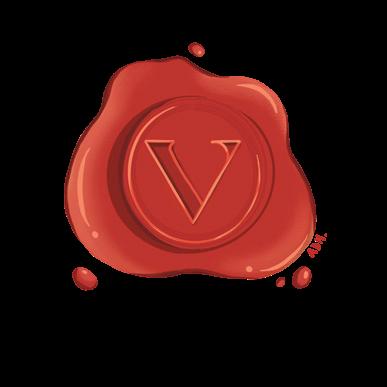
But the guide isn’t complete, yet — nor ever. As a living document, the Visuals Equity Guide is to be continuously worked on and expanded by The Varsity’s Equity Board alongside our Editorial Equity Guide. As previously overlooked equity concerns are reconsidered and new, yet-to-beidentified issues emerge with time and social progress, it’s important that the guide remains as comprehensive and open to discussion as possible to inform our visual direction for the paper and ensure our community members feel seen. We’d like to especially emphasize that latter half: ensuring our community members feel seen. Once the guide is published, we invite you to tell us what you think, both positive and negative, about our guide and visuals. Students, faculty, and staff at U of T from all walks of life are welcome to provide feedback on how to represent them fairly and accurately, and the next Equity Board will be taking all comments and critiques into consideration.
As a paper for the U of T community, we want to make sure that our readers and contributors have an opportunity to shape the paper as they see fit — after all, it’s only equitable.
— Kaisa Kasekamp, Creative Director and Ajeetha Vithiyananthan, Managing Editor, Internal, Volume CXLV
It’s never not a crazy time for the Opinion section.
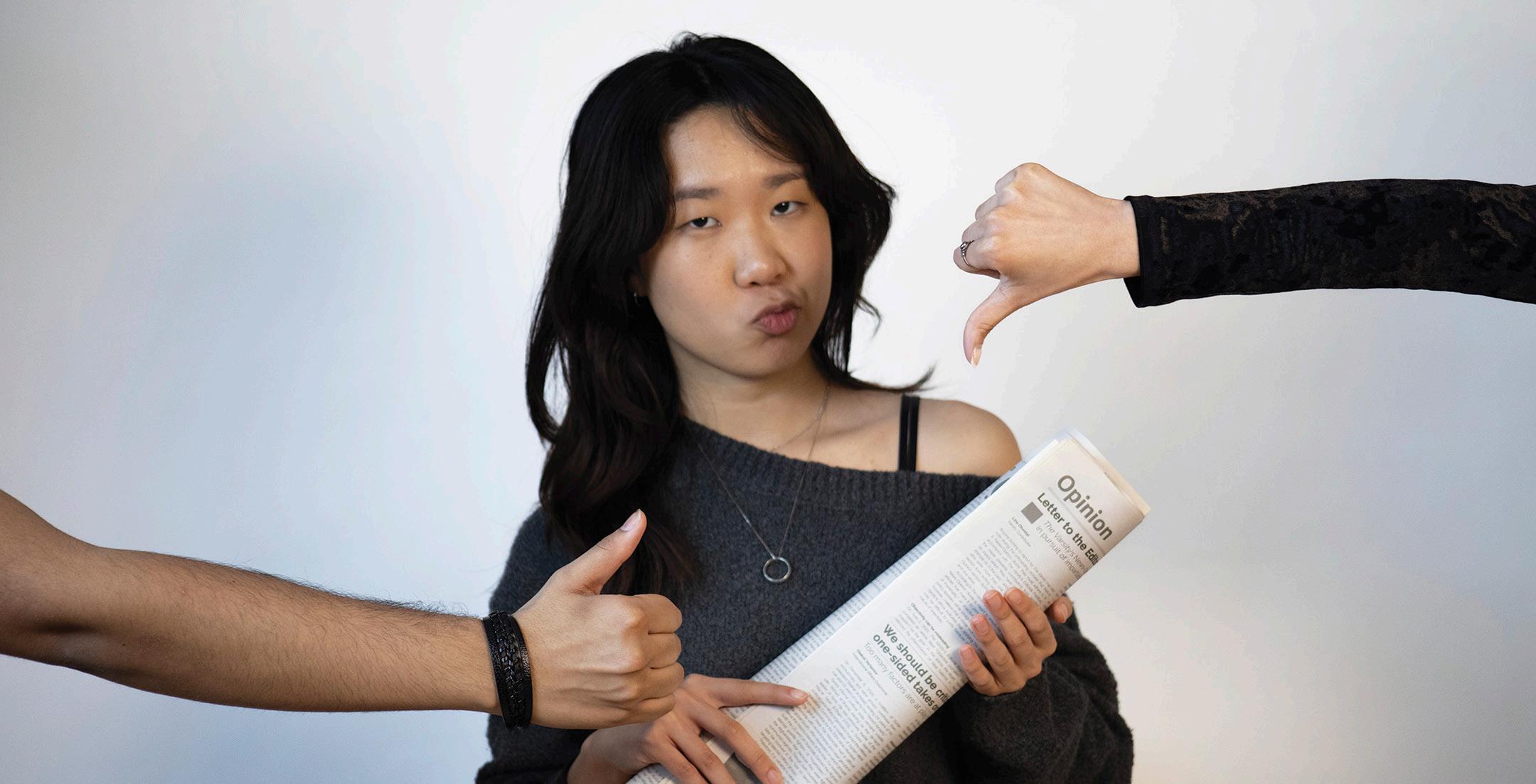
I, of course, could not have done this without the help of a phenomenal team. I need to first thank my Associate Opinion Editors, Shontia Sanders and Avin De. The two anchors of this section were always ready to fill in with lastminute articles or handle edits whenever I had a last-minute assignment to turn in on Quercus.
To Emma Dobrovnik, Ahmed Hawamdeh, Ragini Kaushal, Vesa Lunji, Yousuf Ramahi, Ayesha Siddiqui, Ava Reitmaier Stone, and Oleksii Varlamov — I thank them all for being wonderful columnists who consistently brought their unique takes to the Opinion section.
As Volume 145 comes to an end soon, so will President Meric Gertler’s 12-year term at Simcoe Hall. If you’ve been skimming through this section throughout the volume, you’d probably have noticed that students never seem to run out of things to say about our President.
When Gertler steps out and Melanie Woodin
succeeds him, I can only hope that the Opinion section’s coverage of the U of T President will continue to be as spectacular. I’ll be sure to tune in as an alumna.
I hope that those who have contributed to my section in this volume will continue their time at The Varsity. And I hope that those who are reading this and haven’t yet contributed to our paper will do so in the following volume. I can tell you right now that the pieces that do the best in the Opinion section are the ones specifically about U of T, and I’m sure many of you have thoughts about the university you attend.
It’s a profoundly important thing to share stories and opinions with your peers — I truly believe that. I trust that whoever succeeds me will be an amazing, if not even better, Opinion Editor.
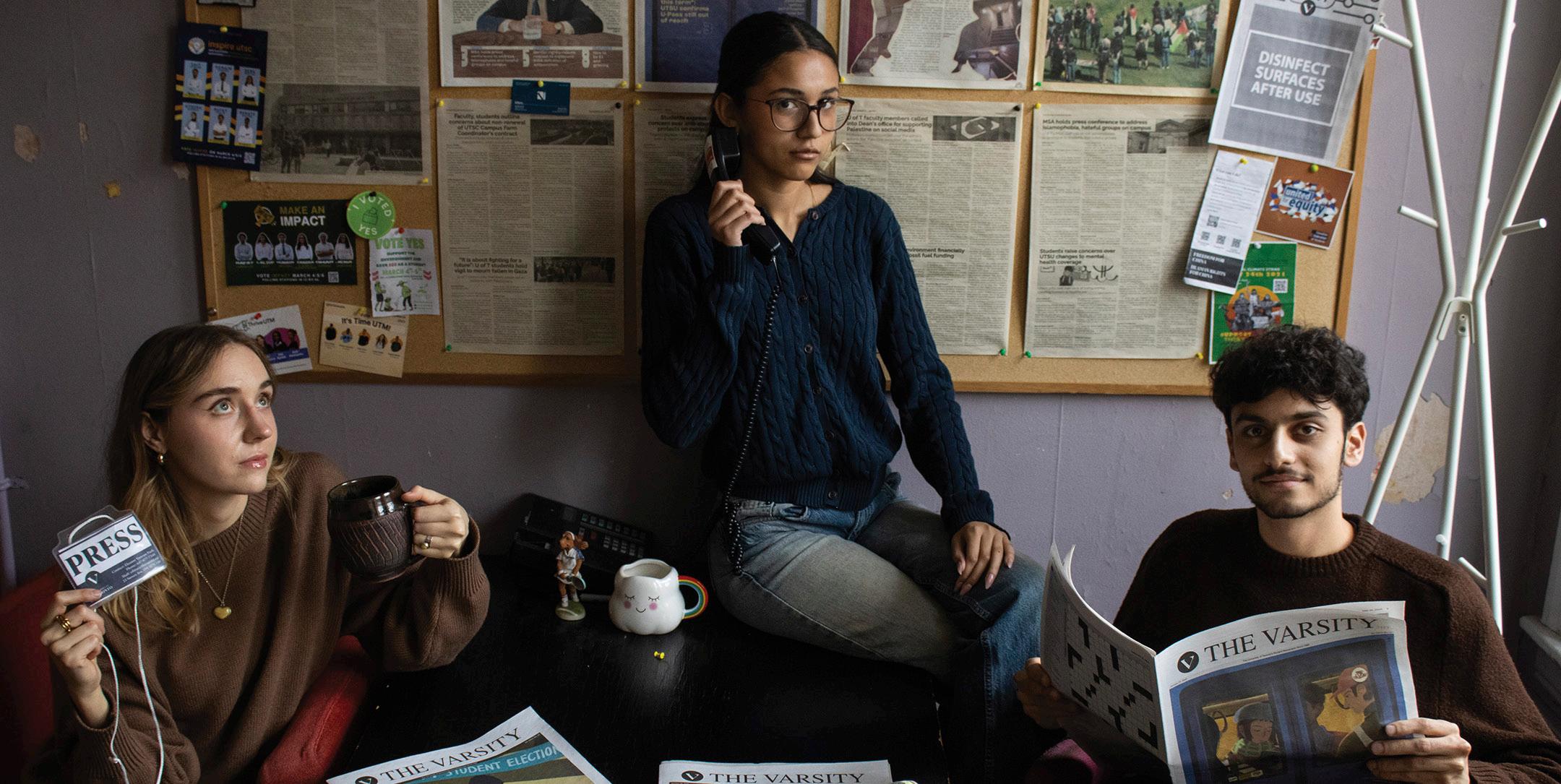
Selia Sanchez, James Bullanoff, Olga Fedossenko News Editor, Deputy News Editor,
Assistant News Editor
This year’s volume started off differently than most. Our news coverage began at King’s College Circle at around 4:00 am, where we proceeded to cover students’ 63-day proPalestine encampment for over two months. It ended with our extensive reporting on U of T’s four student unions — including candidate profiles, debates, and sit-down interviews with the current presidents.
We wrote to you at the start of the year detailing our commitment to making a volume worth reading. Throughout this year, our News team has worked tirelessly to bring you accurate, thoughtful, and timely coverage of the stories that matter to you.
In a year filled with threats to the freedom of
James Bullanoff Deputy News Editor
a look at what’s to come
student publications — from student unions’ efforts to shut down their campus papers to legislation preventing student publications from using social media — the need for student journalism has never been more clear.
Since May, we’ve published over 170 articles.
We’ve reported on student concerns across our campuses, from the future of the UTSC Campus Farm Coordinator’s contract and poor building conditions at the Faculty of Music to tri-campus issues, such as transit, food insecurity, and mental health.
We’ve covered advocacy efforts, such as protesters returning to King’s College Circle for a back-to-school rally, students protesting the Temerty Faculty of Medicine’s “culture of harm,” and faculty members being called into their Dean’s office for supporting Palestine on social media.
We’ve even been there to report on
historical moments at the university, like sitting down with U of T President Meric Gertler for the last time and announcing Melanie Woodin — U of T’s first woman president — named as his successor.
Our reporting has held institutions accountable, amplified student voices, and informed our community about issues affecting them.
As we look ahead, we’re excited to see the incredible journalists who will take our place and their commitment to delivering quality journalism that serves you.
The Varsity has been a home for each of us, and our roles as News Editor, Deputy News Editor, and Assistant News Editor have shaped us. While we’re sad our time is over, we’re excited for what lies ahead.
We thank our three Bureau Chiefs: Urooba, Razia, and Matthew for their hard work in covering our UTSC, UTM, and graduate
student communities. We also thank our three Associate News Editors:
Asmi, and Sharon. They’ve each spent countless hours putting together timely pitches, conducting interviews, and writing up articles.
We also want to thank our wonderful senior copy-editors, Ozair and Isabella, for taking hours out of your days — and nights — to look over our articles. To Ajeetha, our Managing Editor, Internal, for your extensive knowledge and care you put into every piece. And a special thank you to our Editor-inChief Eleanor, we truly could not have done it without you.
Finally, we thank all of our contributors and readers for not only advancing our coverage but taking the time to read our content. We encourage you to keep reading, questioning, and contributing to our reporting.
Here’s to another year of news worth reading.
— Selia Sanchez, News Editor James Bullanoff, Deputy News Editor Olga Fedossenko, Assistant News Editor Volume CXLV
next U of T president Dean, Faculty of Arts & Science announced as school’s first woman president
On March 26, U of T announced that current Dean, Faculty of Arts & Science (FAS) Melanie Woodin has been named the 17th U of T president, succeeding Meric Gertler who has served as U of T’s president since 2013. Woodin is the first woman to hold the role in U of T history.
After a special meeting of the Governing Council, Woodin was appointed for a five-year term effective July 1, following a search for the next president that began in March 2024.
Woodin is a professor with the Department of Cell & Systems Biology and has been the Dean of FAS since 2019. FAS’s current Vice-Dean, Research and Infrastructure, Stephen Wright, will serve as acting Dean for the faculty, effective April 15.
“I am profoundly honoured to accept this appointment to lead an institution that I care about deeply,” said Woodin in a U of T news article.
She joined U of T in 2004 as an assistant professor in the Department of Zoology, following her postdoctoral study at the University of California, Berkeley. In 2017, she was promoted to professor in the Department of Cell & Systems
Biology. She holds a bachelor of science in biology and a master of science in zoology from U of T as well as a PhD in neuroscience from the University of Calgary.
“I am humbled to follow in the footsteps of President Gertler — a distinguished leader whose vision, expertise and dedication have propelled our institution to new heights,” said Woodin in the article. “I will work tirelessly to build on the legacies of the eminent scholars who have guided the university since our founding almost two centuries ago and to deepen U of T’s contribution to human, social and economic well-being.”
Woodin’s previous research explored how neurons communicate and process information, how the strength of that activity affects brain function, and how changes to these mechanisms lead to neurological disorders and diseases.
“Taking on this position is an enormous privilege and a tremendous responsibility. After completing two degrees at U of T and having dedicated over two decades of my career here, I know first-hand that U of T is an unstoppable force for good,” she said in the article.
“I can’t wait to put my energy to work to serve our community and to advocate broadly for Canada’s leading university. I am truly excited by the possibilities before us.”
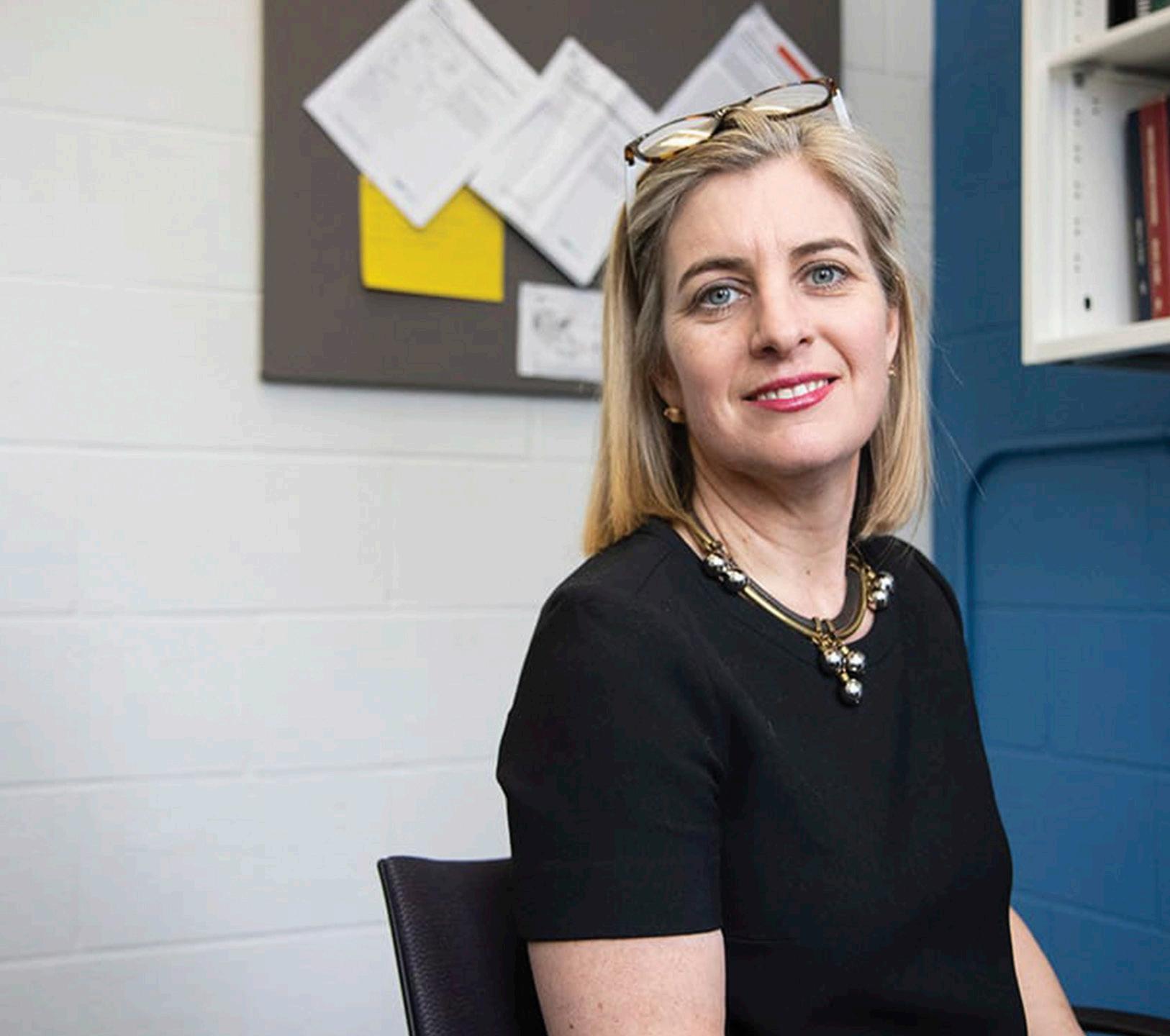
Damola Omole Associate News Editor
As food insecurity remains a critical issue among university students, groups like the U of T Food Coalition are working to address the issue.
U of T Food Coalition is a student-led advocacy group that aims to advance food justice, support local food production, and create anti-capitalist campus food spaces. They are currently working toward making these goals a reality through initiatives such as their weekly free meal program and educational conferences.
The Varsity interviewed students and members of the group to spotlight U of T Food Coalition’s efforts.
Understanding food insecurity Food insecurity manifests in different ways for different people. Many factors can cause food insecurity, including financial hardship, geographic barriers, and systemic inequalities.
According to Statistics Canada’s Canadian Income Survey, the number of people experiencing food insecurity is steadily rising, as 8.7 million Canadians, including 2.1 million children, across the provinces lived in food-insecure households in 2023 — a 26 per cent increase from 2022.
As a whole, racialized people, immigrant families, single-parent families, and postsecondary students are among the most at-risk groups for experiencing food insecurity.
Targeted action
A U of T spokesperson noted in a statement to The Varsity that the university has “one of the most generous student financial aid programs in Canada, offering $330 million in student financial support.” However, the university has no official initiative specifically targeting food insecurity.
So, instead, various student-run resources such as the U of T Food Coalition and the University of Toronto Students’ Union (UTSU) Food Bank are available to assist students facing food insecurity.
Since 2001, the UTSU has run its Food Bank to address food insecurity at UTSG. It offers free food, year-round for all U of T students in need of food.
The U of T Food Coalition is funded by both the UTSU and the University of Toronto Graduate Students’ Union (UTGSU), and hosts its programs every Friday.
In the long-term, the coalition aims to create a student-led café that operates outside of U of T’s current food system and “build a strong voice of UofT campus people and groups organized through food who can influence change from a bottom-up approach.”
Third-year environmental studies and public policy student Marie Kinderman recalled finding the food coalition’s lunch leftovers in the UTSU’s fridge once after her afternoon class.
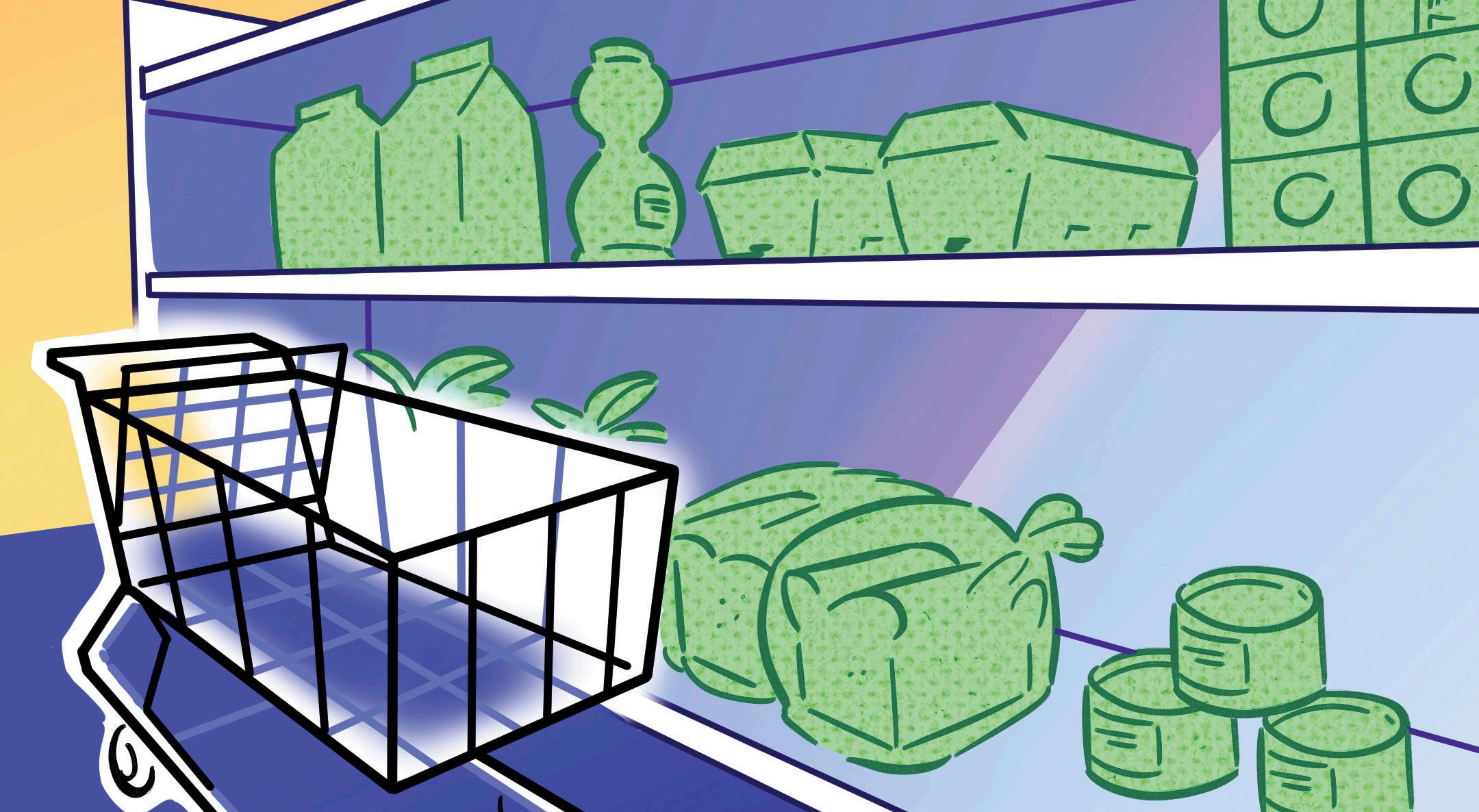
“It was convenient and food that I enjoy,” she wrote in a message to The Varsity
Emily Chang, a fourth-year student studying computer science, wrote to The Varsity about using the food coalitions’ programs. “I’ve been using the [programs] for a couple of weeks now. Being a student, it’s definitely been an extremely useful resource to save money while still getting a healthy meal.”
Chang also introduced the programs to Regis Zhao, a fourth-year student studying engineering science. “It’s a great way to save money without resorting to junk food,” he wrote to The Varsity
A need for institutional support
However, there is only so much that can be done by students, as U of T Food Coalition’s co-founder
Michael Lawler told The Varsity in an interview.
Lawler — a PhD candidate in the Department of Geography & Planning — said the university “has to actively acknowledge that their students are poor and that their students are food insecure.”
“You also have to have targeted action,” Lawler explained. “That could be financial aid, that could be funding initiatives such as ours. It could be opening up a food hamper on campus.”
The coalition started out of the 2023 zerowaste cafe. Students came together to envision the coalition as a way to create an alternative food space on campus and to generate programming that addressed our respective concerns.
Chang and Zhao commented on how the university could make it easier for students to find the available resources on campus.

Zhao wrote, “There’s lots of opportunities for free/affordable food on campus. [T]hey’re just hard to find[,] so you need to know where to look.”
“I believe that U of T has adequate resources if you know where to look for them. I think better marketing would definitely be helpful as it has taken [me] until my last year to discover what is available,” Chang wrote.
By leveraging its resources, Lawler believes U of T has both the capacity and responsibility to address student food insecurity in meaningful ways. “They’re an enormous employer. They operate their own ecosystem… We would like the university to engage with food as part of the ecosystem that they’ve developed.”
U of T Food Services includes a culinary team of campus chefs and provides food and beverages through catering, event, and conference services across each campus. In the past, students have criticized the Food Services at U of T for its high prices, limited nutritious food options, and dining hall conditions.
Kinderman shared the sentiment, writing “Many outlets of student-run food assistance have popped up[,] and they’re growing and are very popular. [I]f the University wants to equally contribute to solving the problem, they should lower the cost of their meals by wasting less food and pooling resources with these food pop-ups.”
Conversely, the organization’s co-founder Stephanie Chartrand, a PhD student studying adult education and community development, emphasized the equally valuable role of student initiative through actions such as protesting and
volunteering.
She told The Varsity in an interview, “I challenge students who may not be facing food insecurity [to] help their fellow students out in doing this organizing work.” Students interested in volunteering for the U of T Food Coalition can sign up to receive volunteer emails using the link in their Instagram bio.
“I also think there needs to be a lot more direct action in terms of organizing. We saw this with the [UofT Occupy for Palestine] encampment,” she added. “I think there was a lot of pressure put on the university, and when we have direct action, it demonstrates to the institution [that] there are enough students and people who are experiencing something… it [amplifies] their voices for the institution to listen.”
Notably, U of T students were able to pool together over $15,000 worth of leftover student funds to create a makeshift food bank in 2022.
In the statement to The Varsity, the U of T spokesperson added, “We strongly encourage any student who is experiencing financial challenges, including food insecurity, to contact their registrar’s office to explore the comprehensive range of resources and supports that are available to them.”
They included the U of T Advanced Planning for Students (UTAPS) program, Undergraduate Grants, and the School of Graduate Studies Emergency Grants.
When asked if the university is aware of student concerns about food insecurity, they did not respond.
With files from James Bullanoff.
Olga Fedossenko Assistant News Editor
The University of Toronto Mississauga Students’ Union (UTMSU) advocates for initiatives and runs programs that serve over 14,000 students at UTM. UTM students elected Joelle Salsa as President for the 2024–2025 academic year on a platform focused on increasing student representation on U of T governance committees, urging the university to adopt an “anti-genocide and anti-occupational” investment strategy, and expanding food options at UTM.
The Varsity sat down with Salsa to reflect on her time as president before president-elect Andrew Park takes office for the 2025–2026 academic year.
The Varsity: Coming into the role, what were your expectations and what limitations did you realize you had once you started the role? Joelle Salsa: When I was running, I felt like there were going to be limitations because of my own commitments to school, but because of how great the team is, we were able to navigate them very easily.
As for challenges, I’d say we were surprised by how much advocacy happens behind the scenes. For example, with the Credit/No Credit campaign, we had to bring together all five student unions. It’s wonderful that all of us are working together for this huge campaign, which, hopefully, we’ll see grow. We realized that advocacy requires patience, which was a challenge for us.
TV: Throughout this year, the union focused on pro-Palestine advocacy, including its Divest Now campaign. How has the union
navigated challenges from students or the administration at UTM regarding its advocacy?
JS: Most of the challenges happened last year, especially with the doxxing of the UTMSU executives. So I took it upon myself to schedule a meeting with the U of T ombudsperson to discuss what happened — particularly because last year’s team was doxxed at Queen’s Park by Minister Jill Dunlop, and U of T did nothing to protect the students or executives.
We did face a lot of setbacks. We felt there was a strain in our relationship with the administration, and we don’t know if it’s because of what happened last year, but we worked a lot to mend those relationships with the administration.
In terms of students, a lot of them didn’t know about why there was an encampment and why the university invests in genocide. So we created a divestment campaign to educate students on how it affects students and how it affects their tuition.
We held a lot of protests, with a huge turnout for most of them, so it has been successful.
It took a decade for U of T to divest from South African apartheid. So, it’s like planting a seed for the future — hopefully, future executives will continue working on divestment because it’s not something that can be accomplished in just a year.
[A university spokesperson told The Varsity that claims linking U of T to the Israeli military are baseless.]
TV: One of your goals in 2024 was to expand the range of food options on campus. What has the union done to achieve this?
JS: We collaborated with a company called Tre’dish, a subscription-based app that allows students to order food at lower prices with fresh
Moghadam on coalitions, base funding, and solidarity
insecurity. Could you talk about the food coalition and ongoing work to sustain and support the coalition and food security?
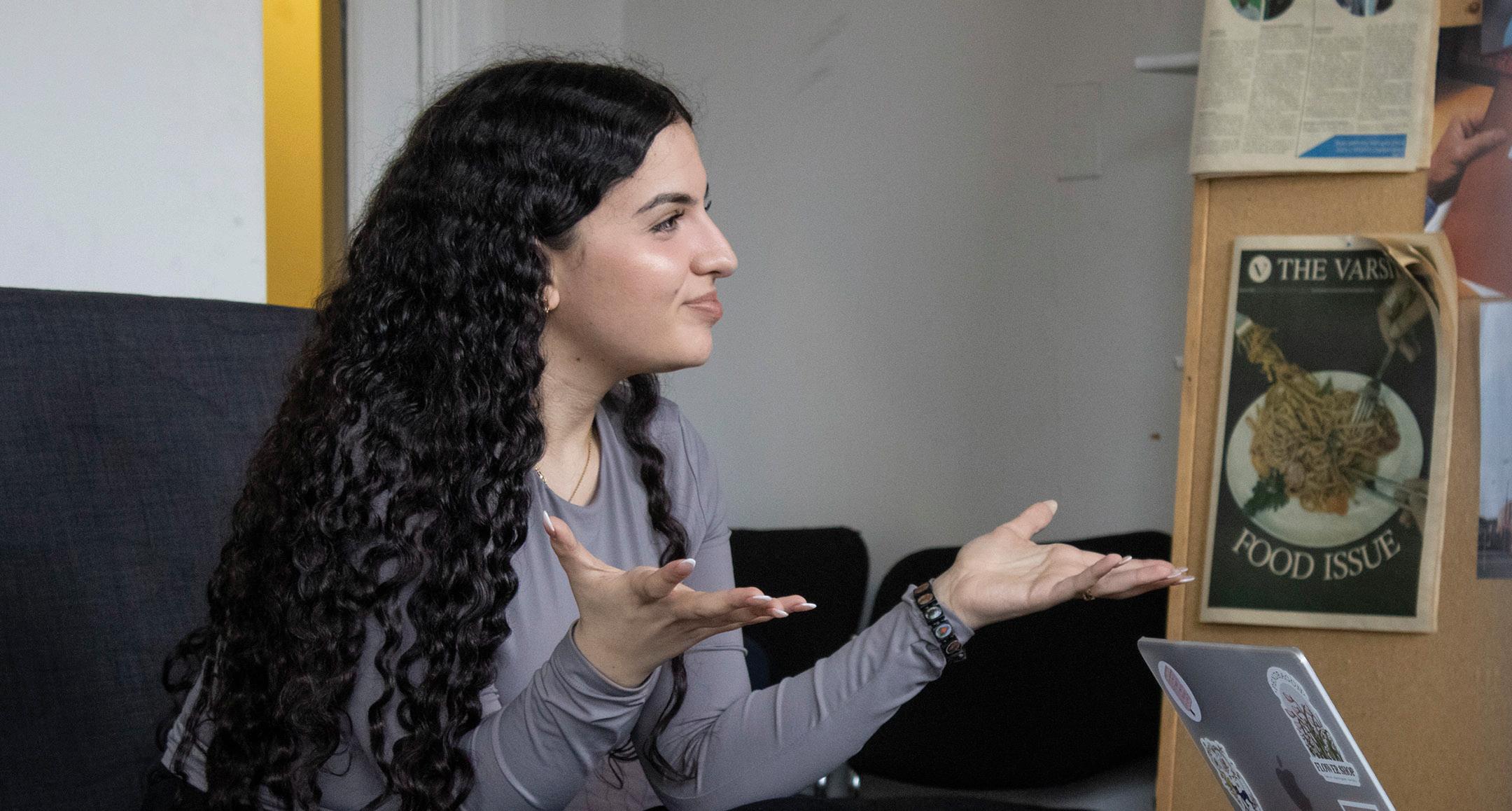
produce, which is then sent to the UTM Food Centre for pickup. We bought subscriptions and students have a discounted rate on them if they’re interested.
Another initiative was introducing All You Can Eat Buffets, which we’ve held multiple times throughout the year. Each buffet featured different cultural food options.
TV: The UTM Sexual Education Centre is slated to be moved to a smaller location. Has the union been in communication with the centre this year and how has it been involved?
JS: We have communicated with them since the beginning of the year. They were originally supposed to move back in December, but we negotiated to give them more time to figure out their plans. Now, they’re scheduled to move at the end of April, after a motion to keep their space was defeated at a February board meeting.
This has been discussed for years, and the SEC was aware of it. Previous executive teams informed the SEC that they needed to relocate due to inactivity in the space in past years.
There’s barely any space for students — we have over 150 clubs, and many don’t even have space in the Student Centre. So, it ultimately comes down to the utilization of the space.
TV: During the 2025 UTMSU election forum, Rajas Dhamija (InnovateUTM) mentioned
that the union had struck a deal with Metrolinx that would give students access to Ontario’s One Fare Program. What does this mean for students? Will this initiative be implemented during your term?
JS: We’re still in the process of signing an agreement between us, the UTM administration, and the City of Mississauga, but I can tell you that there will be a One Fare Program. It’s still pending whether it’ll be in May or the fall, but it’s going to happen.
We also negotiated with MiWay: initially, they planned to raise it by five per cent, with the Consumer Price Index, but we were able to get them to reduce the increase to three per cent.
The platform will also transition to e-voucher, instead of e-ticket, starting May. So, you can go on your digital wallet and scan your PRESTO card.
TV: What are your plans for the future?
JS: Many of the executives are exploring advocacy and want to continue in student-organizing spaces. I’m the constituency commissioner at the Canadian Federation of Students Ontario. I’m not graduating. I’m going to be here for another year, so I’m there to support the incoming executive team with any challenges they face. I would love to continue advocacy.
This interview has been edited for clarity and length.
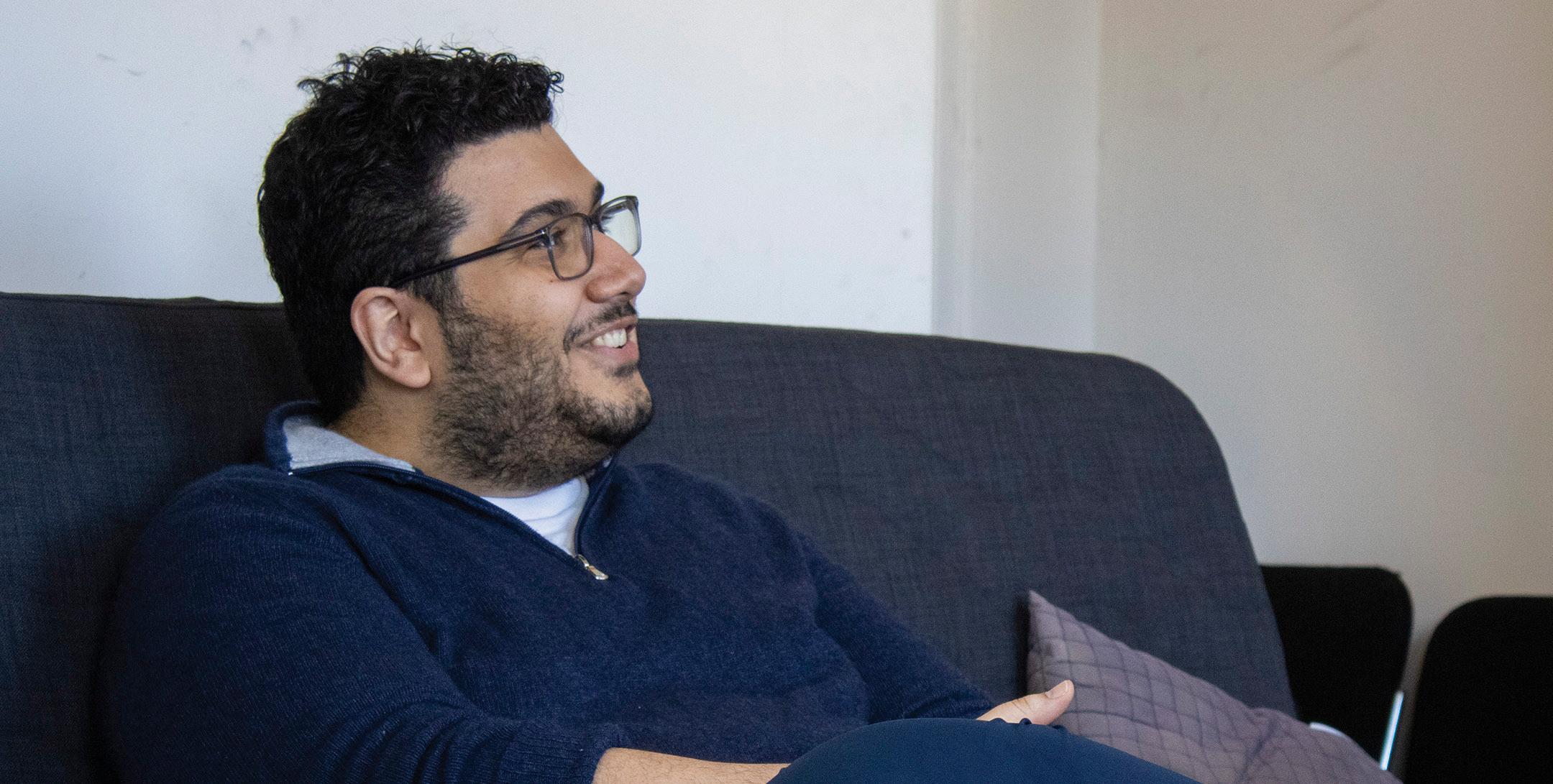
On March 21, The Varsity sat down with the University of Toronto Graduate Students’ Union (UTGSU) President Amir Moghadam to discuss the union’s accomplishments over the past year. This year, the UTGSU tackled food insecurity, transit, gaps in base funding, and informing students about a provincial election.
Moghadam is the uncontested UTGSU presidential candidate for the 2025–2026 academic year.
The Varsity: Coming into the role as UTGSU president, what were your expectations, and what limitations did you realize you had once you started the role?
Amir Moghadam: It’s a pretty serious job. As an executive, you cannot make all the decisions. You need to make sure that the staff are also on board with that decision, and you need to think about more long-term plans.
Your main focus is to make sure that in the next five years, the UTGSU is sustainable and you can operate and serve its membership in the best way that it can. That was something that I really enjoyed.
TV: Some of the most important actionables for your role have been related to food
AM: We always knew at the UTGSU that there is a food security issue among graduate students, and we didn’t have data. The only data that we had was from the University of Toronto Student Union (UTSU). They have a food bank, and they told us that the majority of people who go to their food bank are graduate students. So, that showed us that there is a need.
The first thing we did was collect survey data. We found that there is a diverse need, from needing the food bank to food boxes or just food security awareness. We found community partners that are already doing these food services very efficiently, and we try to support them to expand the services for graduate students. One of them was the U of T Food Coalition, led by graduate students who have professional work in the food industry.
We first had this plan of having a weekly free lunch program, which was a success. Now, we’re doing Lunch and Learn programs, so we have a community leader coming and giving speeches at those lunches. We are seeking more long-term collaboration with them.
To solve this food insecurity issue, you need to pay people better. You need to increase the funding. You need to have a more sustainable system; you need to have a levy fee for food security.
Our long-term plan is to have these initiatives show students that we are launching and running initiatives efficiently, and these services actually benefit them. We will also launch a food security levy fee, so we can have our own professional kitchen space.
We can also work with the UTSU Food Bank to create specific hours for graduate students to have access to the food bank.
TV: One of the major victories for graduate students this year was the base funding increase. Yet, there were concerns with international students and professional students not being included. Could you speak to the next steps for base funding for students coming?
AM: If you’re a master’s student — no matter if you’re international or domestic — you’re not gonna see an increase in funding, so that’s one of our main focuses for next year.
We will be focused on making sure that this $40,000 increase in funding applies to all students. For the master’s students who are not in the funding cohort, our focus should be on putting a cap on the tuition fee and not allowing the university to increase the tuition fee by much every year.
For Ontario students, there is a cap on tuition for the next year as well, but for international students, tuition can rise each year. So that’s one thing that we’re going to focus on for the unfunded cohort: control the tuition fee and monitor it.
TV: How has the UTGSU worked to develop and build trust external to the union? Specifically, how has the union worked through relations with students and the administration?
AM: The main step was opening up our physical spaces so students know there is a union for them. There are staff there, there are student executives who can answer questions, and we can talk about concerns.
We’re doing a lot of services, but prior to last year, our website was inaccessible. The next step was revising all of our communication strategies. We redid our website, and we hired a new Communications & Engagement Specialist. Since then, we’ve been seeing a significant increase in our social media engagement and our website. So, now students know about us, and that actually showed in increased participation in our events. We hold a lot of town halls for students on many different topics. They can come there, ask a question, and see where we’re going.
TV: During the snap provincial elections, the UTGSU conducted interviews and sent out interview requests for candidates running in University-Rosedale. How did the UTGSU use this to build political awareness among graduate students?
AM: Our focuses here were base funding, transit, and food security. For these focuses, you have different tools. One of them is to lobby with the government and to let the members know what the government thinks about these needs. So if the members don’t know who their MP and MPP are, or how they think about their needs, then how can they go and advocate for themselves? How can they demand things from these people?
We are regularly in contact with MPP University-Rosedale Jessica Bell, especially, and they’re also pretty receptive to our feedback. We meet with them, we discuss the student’s needs, and we keep the members updated about this as well. That’s how we are building this political awareness for the members.
TV: How has the union prioritized safety for students, especially for those who are from or conducting research in Palestine? How have questions on freedom of speech and assembly been discussed in UTGSU meetings?
AM: Our focus is on our members’ right to
Urooba Shaikh
UTSC Bureau Chief
On March 19, The Varsity sat down with the Scarborough Campus Students’ Union (SCSU) President Hunain Sindhu to discuss the challenges with his Palestine advocacy efforts, delivering his campaign promises, and issues he regrets not focusing on.
Sindhu was set to end his term as president in April; however, the SCSU did not ratify the results of its Spring General Election at its March Board of Directors (BOD) meeting, meaning the election results were not officially approved. As a result, his term will likely be extended until the Fall By-Election.
The Varsity: Coming into this role, what were some of the expectations that you had, and what limitations did you realize you had once you actually started the role?
Hunain Sindhu: I don’t think anything could have prepared me for the actual role itself, which was a lot more hands-on than I thought it would be.
The only limitation that I really observed — and that was a surprise to me — was that there are a lot of day-to-day parts of being an executive you don’t really think about, and those hit you once you start the role.
Meetings that occur on a weekly basis take up a lot of time, so initiatives that you want to implement sometimes don’t get prioritized.
TV: The SCSU has done a lot of work in regards to Palestine, being active at the pro-Palestine student encampment over the summer and protests since then. How has the union navigated any challenges you might have faced, either from students or from the administration?
HS: I was pleasantly surprised by how the union wasn’t really limited in advocating for Palestine and the issues we worked on. Looking back on the year, there’s nothing we weren’t able to do because the administration didn’t want us to.
The challenges we faced because of our advocacy weren’t always direct. The administration would tell us that something was okay, but then we would find out that they tried to stop a protest or sent Campus Safety to sit outside our office for two hours before it began. Things like that felt almost like subtle stabs in the back.
[The Varsity was unable to independently verify this]. In terms of pushback from students, there has been some.
At the Annual Members Meeting (AMM), motions were submitted that called out both [me] and the union for protesting in certain spaces, for statements I made during protests, and for doing too many events for Palestine and not much for other causes — something I would disagree with, as we’ve organized many different events throughout the year.
We try to meet with the students who bring up concerns, but often, it doesn’t seem like they want to have a discussion. The AMM motions were submitted, but the students didn’t show up to even move the motion at the meeting, so we couldn’t discuss them.
However, there’s also been an overwhelming amount of support from students for a lot of programming that we’ve done.
TV: Your advocacy for Palestine has been very visible this year. What efforts have you made to advocate for other issues this past year?
HS: One of the proudest initiatives we implemented this year was intertwining the Students for Global Action campaign with the Coffee House program, which provides free breakfast every last Wednesday of the month to raise awareness about what’s happening in different countries or distressed regions around the world.
When students were being attacked in Bangladesh last year, I had numerous meetings with Health and Wellness, as well as the Office of Student Experience & Wellbeing, to try and get them to release a statement.
We tried to advocate for any major problems that came up throughout the year. We also started a Trans Well-being Grant.
TV: What issues do you regret not paying more attention to?
HS: I feel that there’s been a lot of issues around sustainability, but it’s not something we touched on this year much at all.
We could have done a lot more for international students. The union uses phrases like, ‘We can’t let international students be the cash cows for the university,’ but do we take any actions on this?
We try and engage with the administration, but substantial work is needed to either freeze the fees or to make enough of a difference that’s felt by students.
This year, we had six campaigns that were chosen with little consideration or deliberation. There were a few discussions, but I feel the executives should review reports on the work done in previous years before deciding what to focus on. Campaigns need to be realistic, and that’s not something we didn’t fully consider at the beginning of the year. I wish we had that guidance.
TV: The changes to the UTSC Campus Farm, including the termination of the farm coordinator’s contract, were major events at UTSC this year that a lot of community members had concerns about. What efforts did the SCSU make to address this issue?
HS: I spoke with the Dean of Student Experience & Wellbeing, and then had a meeting with the Principal the following week, where I brought it up again. They mentioned that the farm is not going anywhere; they’re just planning to renovate certain parts of it to better serve the farm, rather than take away from it. At least, that’s what we were told.
We brought the suggestion of incorporating courses that’ll be taught at the farm itself, so that more students can benefit from them.
Obviously it wasn’t enough of a response to satisfy the community, but Linda Johnston said there will be no more discussion on that matter.
We could have done more to connect with the community, update them, address any ongoing concerns, and continue advocating to bring those issues up.
assemble and protest, and to make sure that if they do so they don’t face any backlash from the administration.
We knew that some of our members were protesting, and they were actually worried that there might be a backlash for their studies. So we made a form, and we sent it to all of the members to tell them, “If you’re facing any backlash, if you’re even worried that you might face something, reach out to us. With our legal and advocacy teams, we can support you and also get data about what’s happening.”
We’ve been supporting our members’ security to make sure they don’t face any backlash. We supported the ones who are… organizing and also made sure that our
members can express themselves and feel safe to express themselves, no matter what they believe in.
TV: What would you have done differently in your tenure? Do you have any regrets?
AM : I don’t have any regrets. I enjoyed every bit of this journey, and I learned a lot. I started the year focused on many different things and assets of advocacy. I think what I would have done differently was that I would pick one or two main issues and put 100 per cent focus on those, instead of putting my focus on 10 different things.
This interview has been edited for length and clarity.
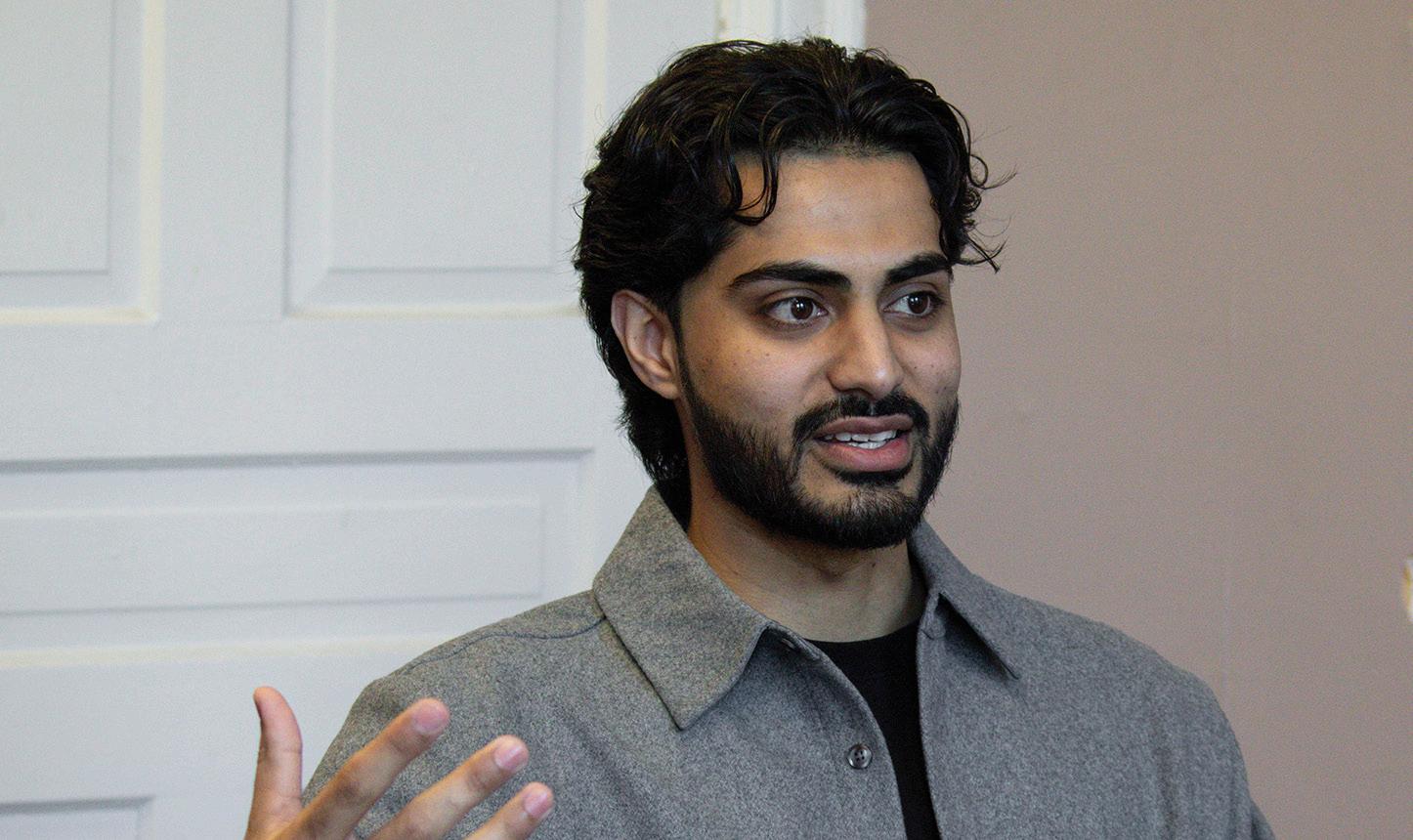
TV: During your election campaign in 2024, one of your main campaign points was establishing avenues of communication between the SCSU and students so that they could share their ideas and concerns about initiatives and operations. What have you done to increase communication with UTSC students during your term?
HS: One idea we had was to hold commission spaces for students to provide feedback on what the SCSU has done. I wanted to hold one every semester, but that was not encouraged within the union. We hadn’t done much over the summer, and the fall was too busy. For January, because of Campaigns Week, the date and time that were moved, and then availability got dispersed.
Something that I’ve personally done over the past year, anytime there are issues in any space I was in, is tell students to email me, because a lot of times, students have concerns, but won’t voice them. And I don’t blame the students. It’s more about creating these spaces to make students feel comfortable enough to talk to you.
Throughout the year, if a complaint was submitted to the [general] front desk email, it was just forwarded to me, and then I would bring it up in an executive meeting. I don’t think that’s sufficient for concerns about me.
One idea was for a Policy and By-law committee to handle complaints because they have BOD and at-large members present. It was supposed to be submitted for the Winter Members’ Meeting (WMM) to make it a formal system, but it’s also a recommendation that can go to the board, and that is something that they’re [can] establish this coming year.
One recommendation I’m putting forward to the next president or to the next year’s team is to make sure that board meeting times are advertised and students know when they’re happening, so that students come to hear about what SCSU is doing.
TV: The Varsity has had trouble communicating with the SCSU this past year, and there have been times when the SCSU has been unreachable. How would you evaluate your relationship with The Varsity this year, and what would you have improved on?
HS: This past year, there were many times when The Varsity would reach out with questions or clarifications about board meetings, and I would want to bring them up at an executive meeting. But they would end up getting delayed, and eventually fall off record, which is really, really bad.
I had my hands full at all times, but it’s not an excuse for not responding to any student who may have been waiting on me. I strongly feel that it’s a lot easier to communicate when there’s more of
an in-person connection, but, again, that’s not an excuse. In the future, I think being more responsive and being attentive to questions or concerns or clarifications required from The Varsity is really important.
TV: Voter turnout decreased slightly this year compared to when you were elected. What would you attribute this to? Is there anything you want to say about your efforts to increase student engagement this year?
HS: I personally felt that student engagement with the SCSU was really low this year. The SCSU represents 14,000 full-time undergraduate students, yet our events only had [about] 40 students.
Moving forward, I would really encourage SCSU to hold fewer events, but put more effort into making sure that students actually attend. That can only be done if the events align with what students actually want to see — something that requires actively seeking their feedback.
I feel the union could have done a lot more outreach for the elections. Because I was a candidate, I didn’t want to be the one pushing these efforts forward. For example, the allcandidates debate had only 10 to 15 people show up in person and was promoted with just one Instagram post about it.
For SCSU to do its part, I feel that there should have been outreach to different groups on campus to make them aware of the fact that elections are happening. I don’t think it’s the responsibility of the candidates to make students aware of where to vote. I think SCSU should be doing that.
TV: What are your plans for the future?
HS: I’ve been extremely grateful for the opportunity to serve this role and contribute to the work that’s needed on campus for our students. It’s been such a big learning experience for me, and I’ve had a lot of growth personally and professionally that I think will help me a lot in any endeavours that I take on in my near future.
I hope to be involved in advocacy work. Over the past four to four and a half years, I’ve been involved as a student leader on campus, and it’s been an extremely rewarding experience.
I will continue to serve as the Racialized Representative for the Canadian Federation of Students Ontario. I hope to leverage this role after my current position ends, allowing me to stay involved in student movement work.
There’s a lot of potential that I think I have, and I want to use that to benefit others, and I hope I can do that throughout my next endeavors.
This article has been edited for length and clarity.
㫐April 1, 2025
thevarsity.ca/category/arts-culture arts@thevarsity.ca
Thank you, and thank you
Divine Angubua Arts & Culture Editor
I’d like to thank the readers, our contributors, my associate editors Sofia Moniz and Chris Zdravko, and The Varsity’s editors at large who gave their time and energy to the Arts & Culture section this year. Thank you for gifting this section and The Varsity with your luxurious, curious, and deliciously furious minds.
In an age of mechanical reproduction, as the spectre of a future dominated by artificial intelligence draws close, writers, artists, academics, and lovers of beauty must take on the task of defending the rigour and ritual magic of our craft: our ‘aura.’
Over this past year, I have been most blessed by contributors
Mashiyat Ahmed Associate Science Editor
who fearlessly wrestled with their work in the production process, defended their voices, and took the initiative to find stories where they happened, as they happened. Thank you for writing pieces that struck us — even bruised us — and carried enough power to make us want to get up and do something.
In the grand picture, our cultural and academic community at U of T is not as big as it looks. Being allowed to represent what we do and think in the arts and humanities, and how we do and think it is no small assignment either. Thank you for making this great heap of work the greatest joy!
— Jonathan Divine Angubua, Arts & Culture Editor,
Volume CXLV
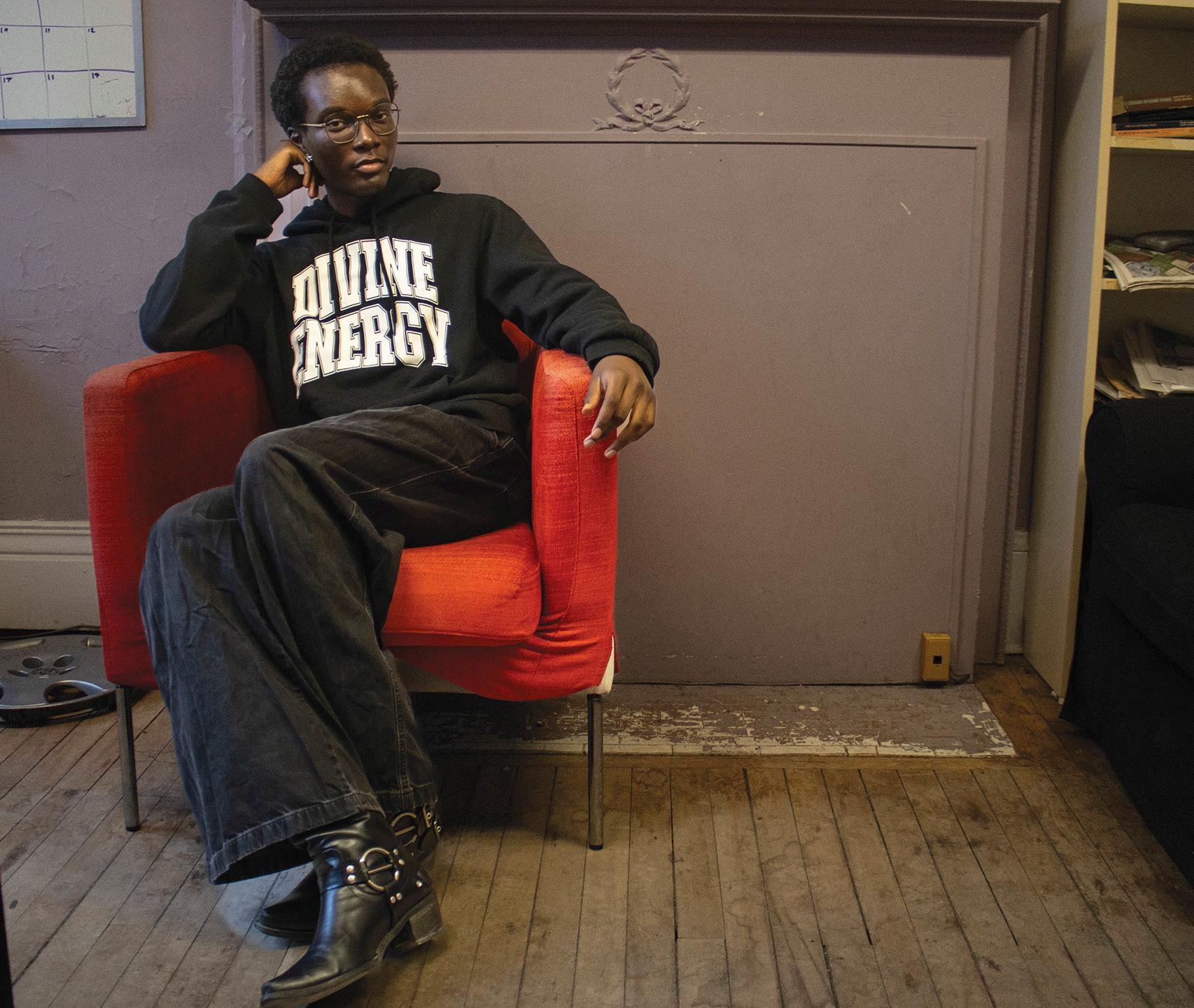
references the act of defecating, which was unapologetically communal and public in Ancient Rome.
more. Each expression is more personalized, intriguing, and enigmatic than the last.
In my first year of university, a friend and I stumbled into Sneaky Dee’s at the invitation of another friend who was hosting a show there. If you’ve ever been to this venue and restaurant — tucked quietly in the corner of College and Bathurst — you know how overstimulating its atmosphere can be. Under dim lights, visual noise blasts from all corners of the venue. The stickers on the seating tables aren’t shy either; they proudly showcase how beloved the space has been for Torontonians and tourists alike since 1987.
So, I should have known better than to walk into the bathroom expecting to escape the restaurant’s iconic claustrophobia — something that’s become a trademark feature of the venue over time.
To say that the bathroom at Sneaky Dee’s embodies defacement, graffiti, and latrinalia is a colossal understatement. Walking in, you’re greeted with several decades’ worth of hasty scrawlings and absurd drawings on walls, toilets, and sinks — everything from illustrations of pooping bunnies to pretentious Shakespeare quotes to occasional tidbits of tear-jerking wisdom. My friend and I tried to write our names on the wall above the toilet — ‘Mash Wuz Here’ — but we couldn’t. There was simply no room for us there.
And that’s exactly what latrinalia is! As the name suggests, latrinalia refers to any type of public writing, art, or graffiti that appears in bathroom stalls or latrines. But latrinalia is more than just writing on the walls of dingy spaces.
In fact, anyone who’s been to Sneaky Dee’s — or the countless other lesser-known, yet-to-begentrified spaces in Toronto — will tell you that experiencing latrinalia fills you with a sudden rush of excitement, contemplation, and a sense of connection to the world around you.
A brief history of the modern-day cave painting: latrinalia in intimate spaces
Despite popular opinion, latrinalia is not just a design choice, aesthetic movement, or something slapped onto walls to appear hip, trendy, or cool. It’s a statement of boldness — a cryptic yet jarring glimpse into the collective cultural psyche of countless people who have slipped in and out of the same stall over the years.
Initially coined by American folklorist Alan Dundes in his 1966 essay “Here I Sit — A Study of American Latrinalia,” writing on bathroom stalls, brothels, and other intimate spaces dates back to Ancient Rome. Funnily enough, scholars of latrinalia sift through layers of cryptic jokes, meanings, and musings from the ancient Romans.
According to University of Washington classics Professor Sarah Levin-Richardson, most — if not all — the latrinalia found in ancient Rome
But I assure you, the significance of bathroom latrinalia has evolved beyond mere poop jokes. So, what does the presence of latrinalia really signify? In preparation to write this article, I carefully explored certain areas of the UTSG campus and culturally vibrant areas of the city, not only to find examples of latrinalia but also to see if any underlying themes emerged.
While Sidney Smith Hall and Kensington Market didn’t disappoint — with the writing on the stall walls saying Trans Lives Matter and I love peeing in dead silence — I noticed no overarching theme in the latrinalia. Instead, it seemed to signal an uninhibited expression of the mind. No matter how radical, niche, profane, or unhinged the saying or opinion may be, you can speak freely, where you defecate freely.
Beyond the visual noise: what is latrinalia really trying to say?
Across Toronto, scrawlings range from political sayings to satirical drawings of US President Donald Trump kissing Elon Musk, to Russian poems, song lyrics from Jeff Buckley’s 1994 album Grace, and much
Being in Sneaky Dee’s was like being in a space of genuine free expression. Somehow, the bold red pen scrawl that read, “I just had sex for the first time and all I could think about was my midterm grade,” really spoke to my soul. Not because I was a fellow student, but because I understood how that undiluted, raw, and unique vulnerability could only manifest in a space like a public toilet.
The experience of latrinalia creates a reverse panopticon effect, where the inherent intimacy and uncontested anonymity of bathroom stalls encourages people to say exactly what’s on their mind, foregoing the need to be articulate, professional, or clean. I’ve also noticed that latrinalia often unfolds as an ongoing conversation between two or more anonymous authors or artists, who, over an extended period of time or even within just a few hours — depending on when and where one encounters the specific latrinalia — cultivate a unique dialogical space.
The uniquely gendered nature of some bathrooms also contributes to latrinalia’s distinct effect, exuding a raw type of intimacy uncharacteristic of most public spaces. When
an anonymous passer-by scrawls something on the yellow-tiled walls of a women’s bathroom, they do so through a personalized social and political lens, addressing themes of gender identity and womanhood — all chaotically conveyed through colourful scribbles.
At times, and weirdly enough, I’ve felt that peeing in a women’s bathroom is not unlike being in the collective psyche that all women share. “I want this leash off my neck,” wrote one anonymous person in all caps on the wall of a bathroom in a bar I have long forgotten the name and location of.
I’ll never know who wrote that, but I can relate, sadly. But knowing I am not alone in that feeling is the solace that latrinalia provides.
Across space, time, and cultures, latrinalia speaks to the deepest and most vulnerable parts of the human experience. In doing so, it becomes a uniquely radical facet of selfexpression. In a world where the status quo dictates narratives around acceptability and collective liberation, where gentrification threatens authenticity, the importance of speaking one’s mind cannot be understated. Latrinalia is a testament to that vital power.
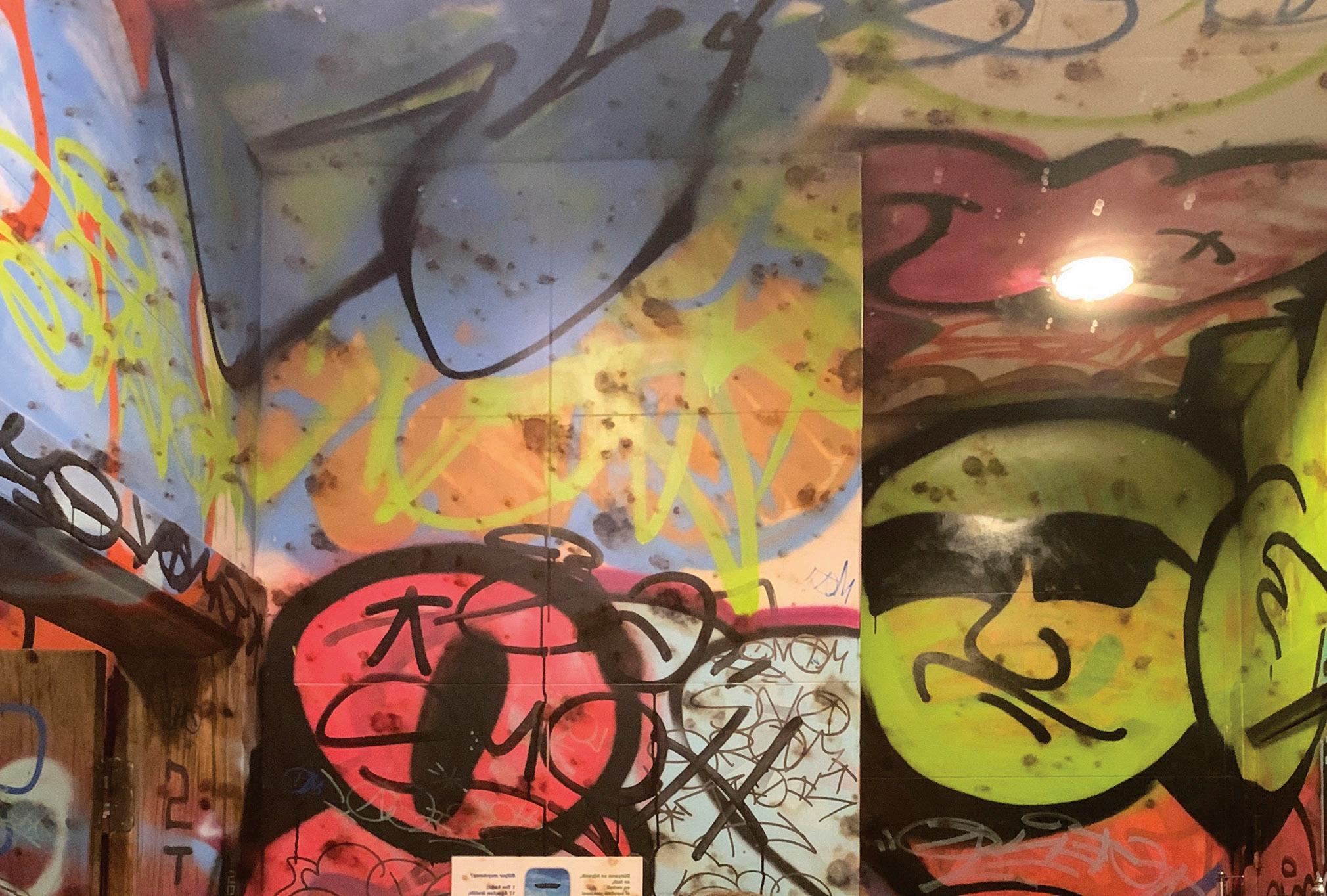
Olivia Mar Varsity Contributor
Nestled between UTSG and the Royal Ontario Museum (ROM) sits a curious dome-shaped structure once known as the McLaughlin Planetarium. A planetarium is a building that projects the night sky — the stars, moons, and planets — inside a dome, where the space is kept dark so they shine bright. The theatre space allows its audience to see the sky from anywhere and at any time.
Indigenous cultures worldwide have been star-gazing for centuries and would often do so for navigation, timekeeping, farming, and spiritual and religious practice. Thus, planetariums are an important cultural stakeholder as they create an immersive and educational experience around astronomy.
Tracing the Planetarium’s origins
In 1968, the then-president of General Motors Canada, R.S. McLaughlin, founded the planetarium, donating two million dollars toward its construction. The building looked to the stars using cutting-edge technology— including a mechanical Zeiss planetarium projector—to display stars, planets, and cosmology — the study of the universe by connecting theoretical models with observable effects. This requires mapping the stars and galaxies.
The Zeiss planetarium projector featured 150 individual projectors dedicated to the Sun, planets, stars, moons, comets, and the Northern Lights. The new and improved technology constituted azimuth rotation and a fourth axis, which expanded the display to simulate spaceflight experiences and other astronomical phenomena. Beyond this, the building itself had 198 displays providing introductions to astronomy and preparatory information for the light show.
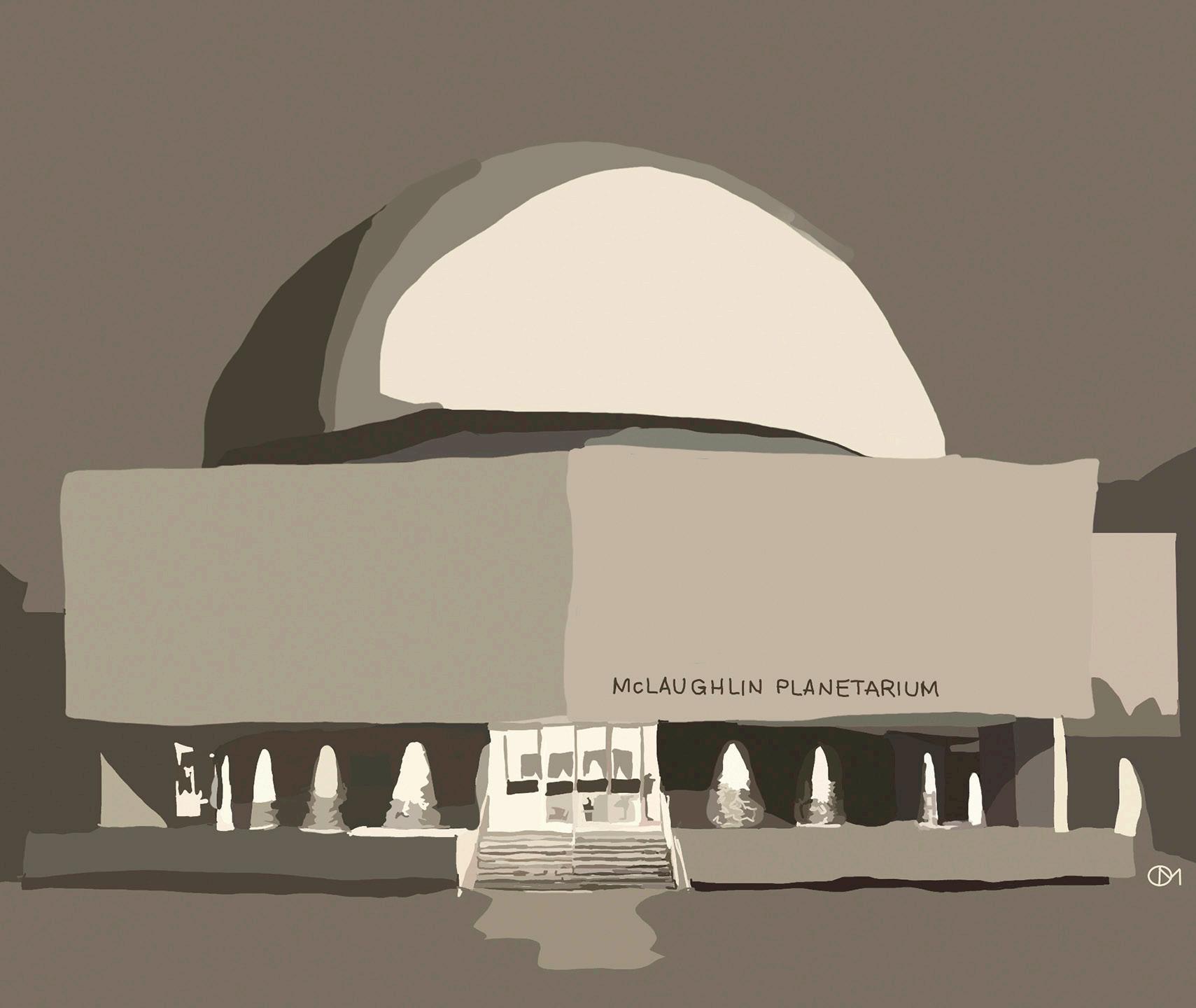
A fantastic magic For over 25 years, the planetarium invited guests to marvel at the wonders of space. It showed stories of space travel, constellations, myth, and astrology, as well as special features during the winter holidays. Some examples include The Story of Eclipses , a show about our solar eclipses, how they happen, how often they happen, what they look like, and their scientific significance. Another story, The Planet Venus , demonstrated several aspects of Venus, including its occurrence in Roman mythology as the deity of love and beauty, what the planet looks like in rotation, and
predictions of Venus.
The building had an exhibition space, a library, a lecture room, workshops, a lens grinding facility, and a theatre, which sat 361 people each show. The planetarium attracted many visitors, including University of North Carolina at Charlotte architecture professor Jeff Balmer, who grew up in Toronto.
In an interview with Global News, Balmer said, “It was magical. It was fantastic… coming into the theatre space and seeing all the rings of chairs and [I remember] just being blown away by what I saw on the ceiling and just the whole universe opened up to me.”
A call to change
In 1995, despite its popularity and profitability, the then-newly elected premier, Mike Harris, aimed to symbolically cut the ROM’s budget. As part of his “Common Sense Revolution” against Ontario’s significant budget deficit at the time, Harris sought immediate and visible reductions in government expenditure. These provincial budget cuts unfortunately led to the closure of the McLaughlin Planetarium.
Although the building no longer exists as a planetarium, it still functions as an office space and storage facility for academic and institutional purposes for U of T and the ROM. While echoes of its former life remain, it’s hard not to reminisce about these spaces that once celebrated astronomy.
While the McLaughlin Planetarium is closed, Canadian planetariums — including the W.J. McCallion Planetarium in Hamilton, the Planétarium Rio Tinto Alcan in Montréal, and the British Columbia Institute of Technology (BCIT) Planetarium in Burnaby — remain open. Furthermore, the Worldwide Planetariums Database’s archival images of the McLaughlin Planetarium show the construction of the building, the Zeiss projector, and some behind-the-scenes photography of the theatre. The City of Toronto Archives also highlights historical photography, such as an exhibition space showing the moon and its lunar phases. Beloved landmarks with rich historic legacies, such as the McLaughlin Planetarium, deserve our attention and preservation. Through them, we’re offered opportunities to inspire future generations, educate young minds, and showcase the wonders of the cosmos. As a testament to this, Balmer started a petition in 2017 to preserve the McLaughlin Planetarium since its closing. The City of Toronto and the GTA thrive the most when we honour and celebrate these institutions that connect us to the stars.
Journal-style writings give actors a strong foundation for developing character
Luca Locanto-Mazzoli
Varsity Contributor
As a theatre major, I know that being an actor means being a reader. You read the room, interpret human behaviour, study a script, hone your technique, and bear emotion as intimately as a journal. Whether you are a theatre and performance major at U of T, a student with a passion for acting, or anything in between, everyone starts somewhere. Independent work could be one of the most cost-effective and straightforward ways to begin.
With that in mind, here are four book recommendations that align with some of the most essential tools for an actor’s training.
Audition by Michael Shurtleff
American Broadway casting director and writer Michael Shurtleff’s Audition is a staple in an actor’s training. He established 12 guideposts that are now widely recommended to actors in the stage performance industry. These guideposts provide a solid foundation for acting, incorporating key elements such as relationships, humour, and opposites.
This book serves as a theatrical acting guide, filled with short anecdotal stories, audition do’s and don’ts, and practical techniques. Its journal-style guidance — detailing what to do, how to do it, and supported by real-life examples — makes it a credible, empathetic, and invaluable logical tool for every actor. Forgive me for describing it as the ‘bible of acting,’ with its verse-like stories and 12 commandments, but it certainly earns the title at its core.
Respect for Acting by Uta Hagen
Uta Hagen, a German-American actress, author, and esteemed teacher, guides actors toward sincere performances in her textbook, Respect for Acting.
Drawing from her extensive career, she shares valuable insights on how to achieve genuine performances, such as preparing well-developed characters and experiencing honest emotions. Hagen explores authenticity by posing nine thought-provoking questions to ask yourself about your character’s desires and needs, including the timeless question, “Who am I?” These questions help cover all the respective corners of a character, making them ideal for both a quick breakdown or a deep dive into a role.
An Actor Prepares by Konstantin Stanislavski Russian actor, director, and producer Konstantin Stanislavski is famous for having developed an immersive acting technique that gave way to what is now referred to as ‘method acting.’
This technique, which Stanislavski explains in his book An Actor Prepares , is arguably the most introspective approach to acting. It involves drawing from personal life experiences to fully embody a character, placing yourself within the character’s mindset, and translating their emotions and desires as your own.
This book is considered a classic in the acting world for its focus on the actor’s psychology and state of mind, exploring the emotional depth required for a strong performance and the techniques necessary to achieve it.
Actions: The Actors’ Thesaurus by Marina Caldarone and Maggie Lloyd-Williams Theatre director, teacher, and writer Marina Caldarone, along with actress and writer Maggie Lloyd-Williams, created a thesaurus of action verbs for actors to attribute to their performances.
Script breakdown is the archeology of building a scene, and this book serves as a valuable tool in that process. By assigning actions to dialogue, the actor uncovers a scene’s subtext — the unspoken drama behind the lines and understands how actions can be used to realize these unspoken objectives. The thesaurus’ action words and synonyms are meant to help actors subtly articulate what they are fighting for in each scene.
Altogether, these books offer essential wisdom from certified acting heroes. Even Marlon Brando studied Stanislavski’s acting techniques to give credence to the voice of Vito Corleone in The Godfather , embodying the belief that an actor who doesn’t dedicate time to their craft can never truly be a great actor. By engaging with these books and getting involved with our university’s theatre scene, such as at the Hart House theatre, any passionate student can set themselves on the path to becoming a skilled actor. These techniques implore performers to use their instrument to inspire genuine performances.
I hope that these books help you discover a technique that works for you, like they — my long-time nightstand companions — did for me.
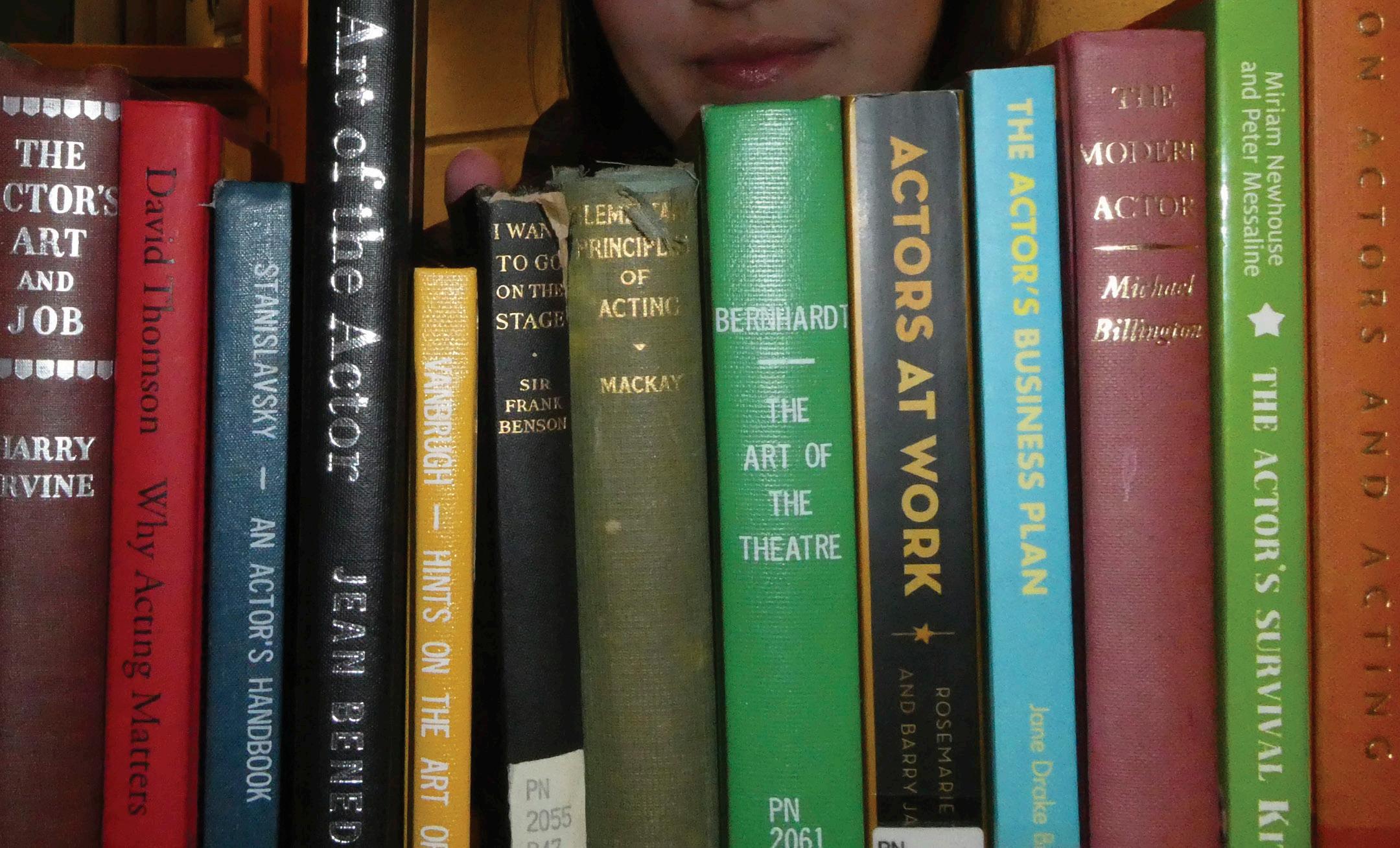
Photo April 1, 2025
thevarsity.ca/section/photo photo@thevarsity.ca
people, I love you Farewell, after two incredible years of photojournalism
Zeynep Poyanlı Photo Editor
Two years have passed since a series of coincidences brought me and my camera to The Varsity. Throughout this time, I have had the pleasure of seeing and publishing the works of incredible contributors, and learning so much — about myself, about emotions, and about photography.
I will admit that I had no knowledge about the importance of student journalism before I stepped into 21 Sussex avenue. Our coverage has shown me that photography can be resistance and history-making, regardless of the scale of the history created. Each frame evokes a different
emotion we have now etched into printed history.
As cliché as this may sound, none of this would be possible without the amazingly talented photographers who have contributed to The Varsity. Thank you so much for being a part of our history.
As I sit in New York’s Central Park while writing this letter on my phone, I realize that even though I am closing a prominent chapter of my university life, our work is permanent — an eternal documentation of so much that has happened in these two years.
Jason and Kate, my incredible Associate Photo Editors, I am so happy to have worked with you this year. Not only are you exceptional sports photographers, but you are exceptional

photographers and administrators — period. I hope that you continue to expand your horizons.
The lovely Design team of Aksaamai, Nicolas, Vicky, and Kaisa — our creative team is the prime example of how ‘maximizing shareholder
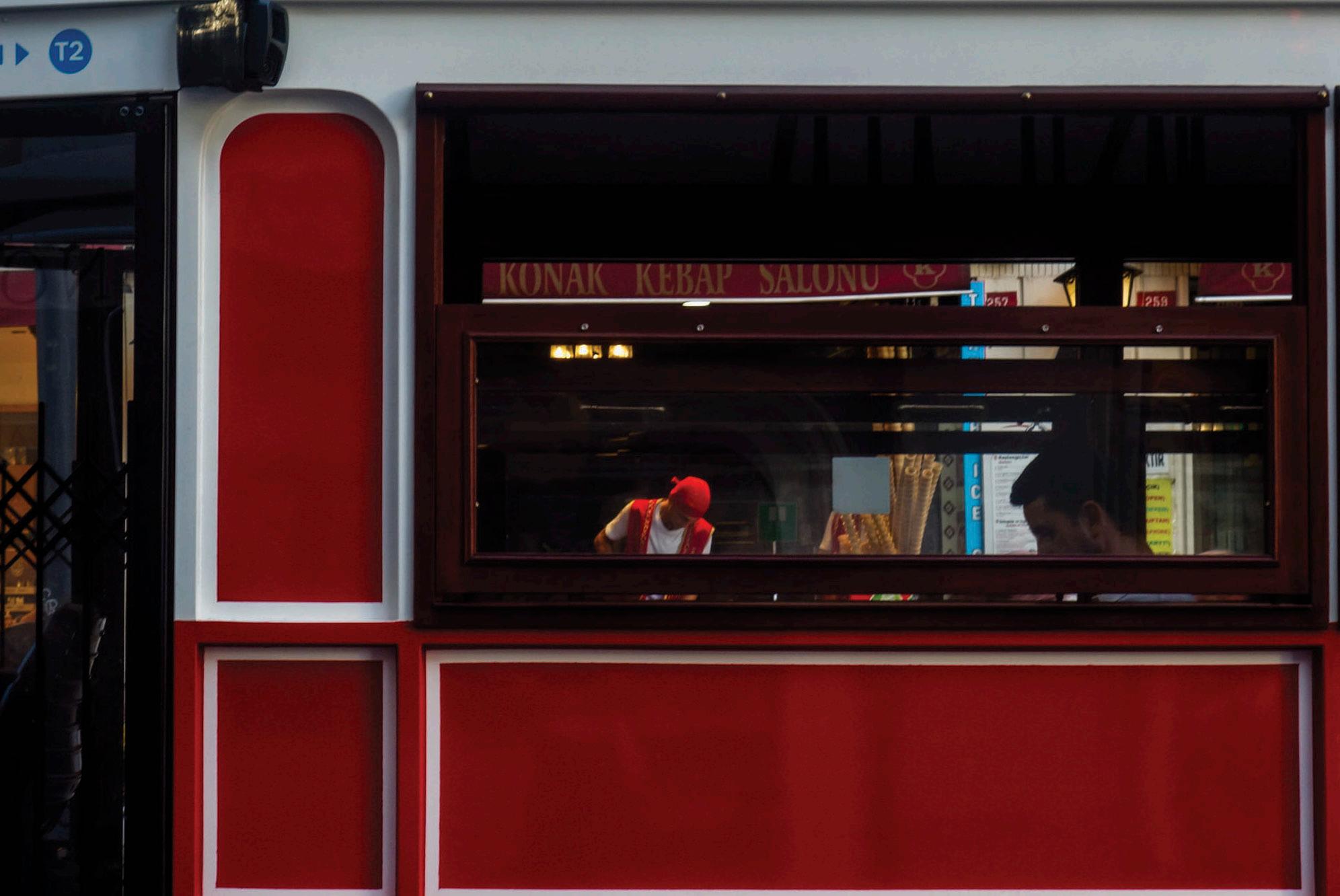
creativity’ leads to incredible results. I am proud to call you my coworkers.
Photographers, please continue taking photos so more people get to see how amazing you are. I truly love you.
U of T photographers share the favourite photos they’ve captured this school year A fleeting moment on the iconic Taksim tram in Istanbul.

As I was walking around in the garden, I couldn’t help but notice how much elegance and calmness this corner had. It felt like an oil painting
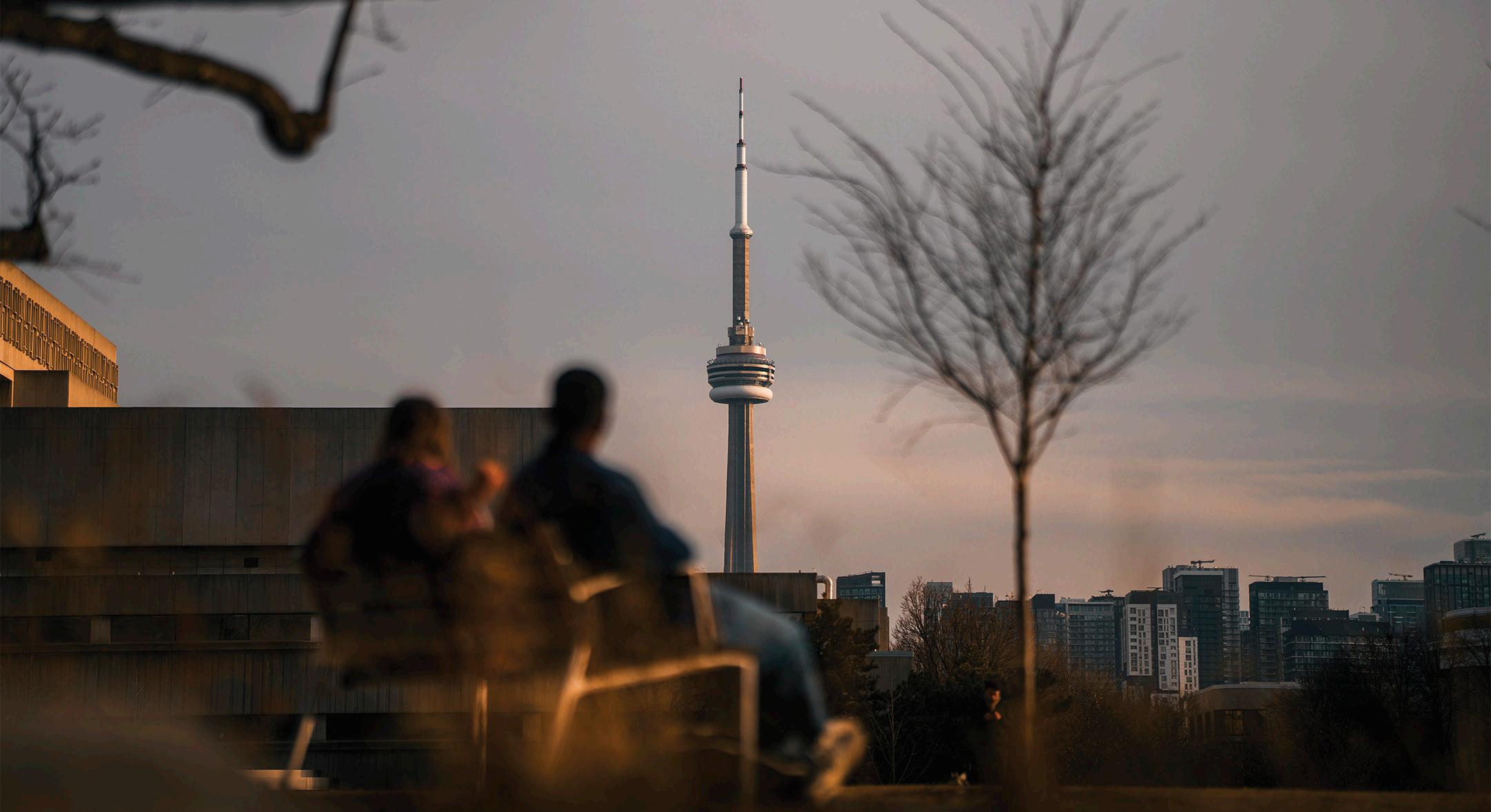
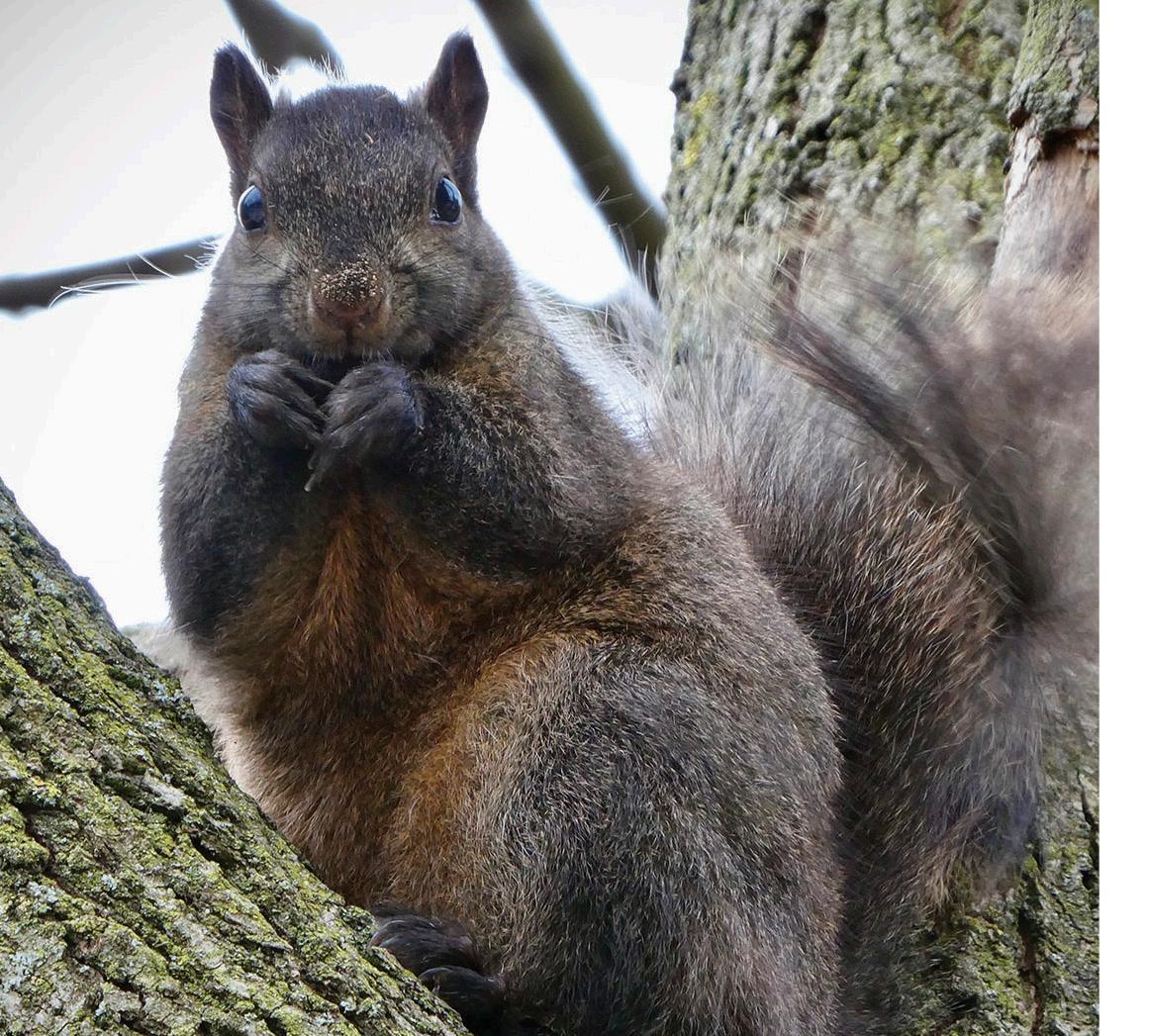
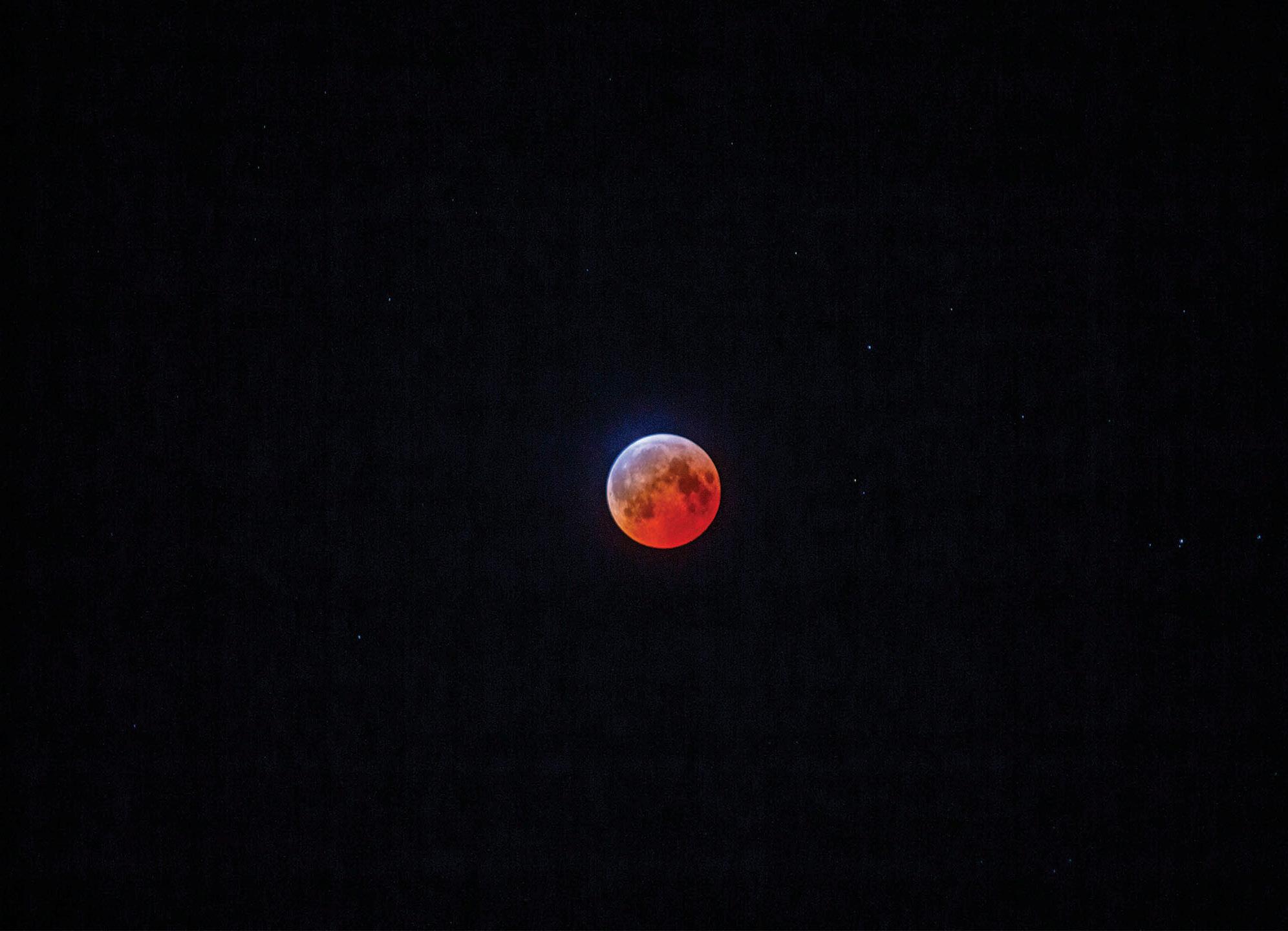
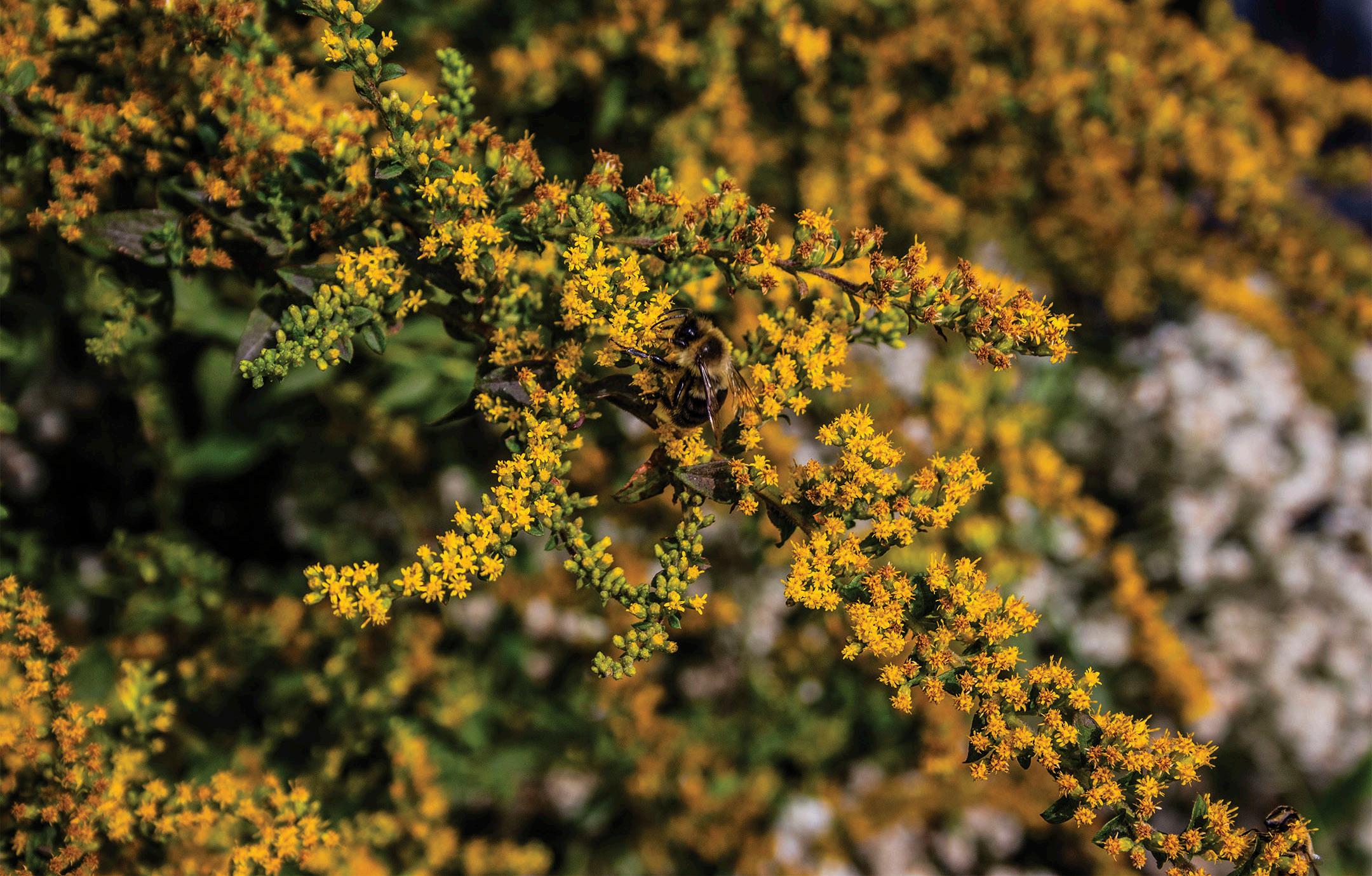
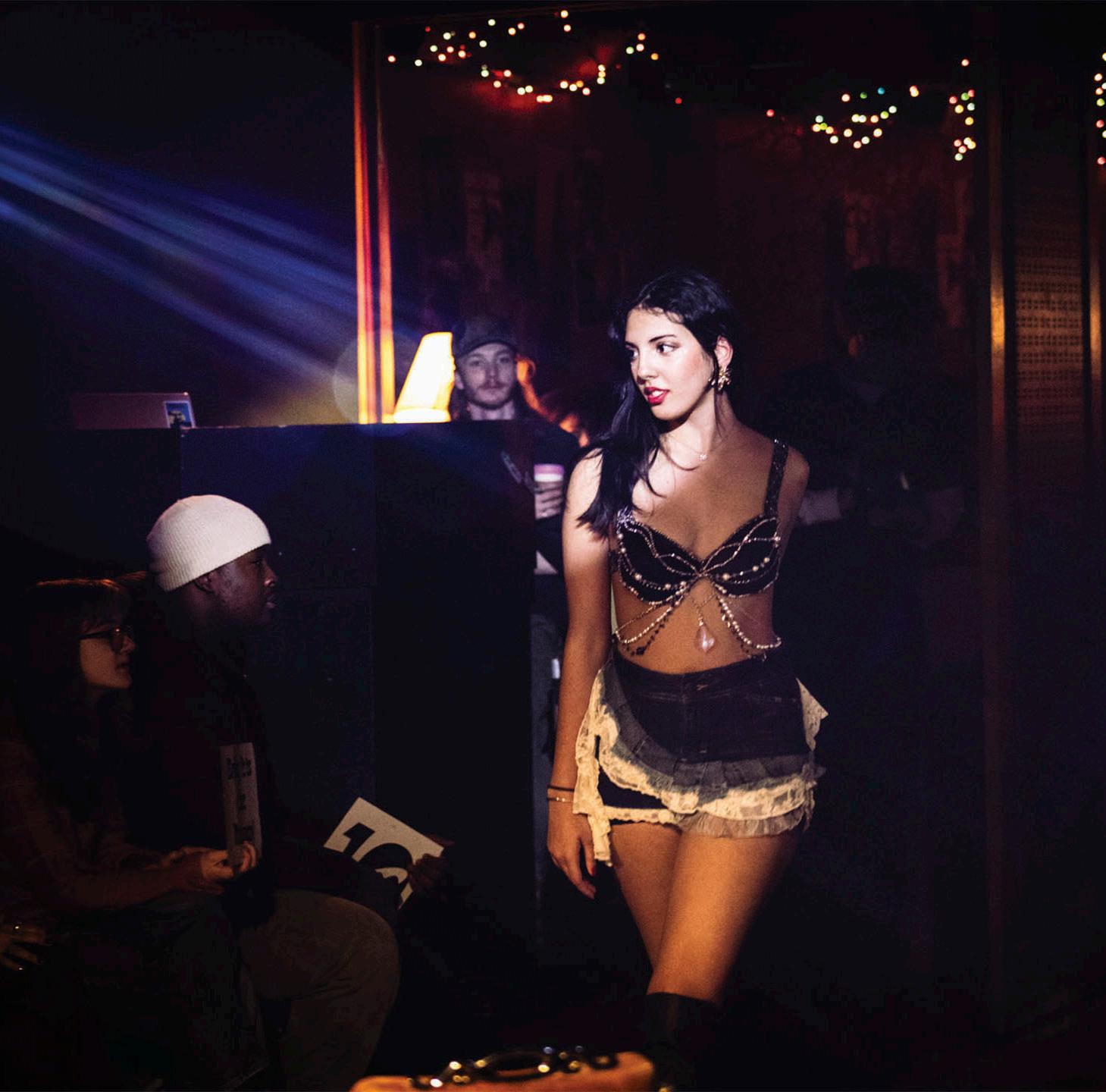
I captured this shot while crouched on the stage at the Victoria College Environmental Fashion Show, held in Kensington Market in March. This year’s theme — Underground — paid homage to underground club cultures, and inspired
sustainably sourced looks that were beyond stunning. The crowd certainly seemed to think so — cheering, whooping, and holding up signs that read “Work, queen” or “10s across the board, darling!” as models walked past.

April 1, 2025
thevarsity.ca/category/business biz@thevarsity.ca
Rubin Beshi Business & Labour Editor
It’s been a long, long year.
As editor, I set out to maintain my section’s role as the home for labour stories. Conflicts between workers and their employers are never-ending, and this year proved no different. Among others, we published a piece on USW 1998’s success in removing an attendance policy, and articles updating readers on CUPE 3902’s and USW 1998 Residence Don’s units’ ongoing efforts to
sign new collective agreements with the university.
My biggest goal for the section was to emphasize governance coverage. The university makes a lot of conventionally wise financial decisions using your tuition money, and I wanted to provide a watchful eye on that. We achieved this by publishing an article breaking down three separate lawsuits the university faced from construction companies, as well as a slew of articles updating readers on Business Board and Planning and Budget Committee meetings.
I’d like to thank my governance correspondent,
Jessie, for helping me make this volume happen. Your enthusiasm for attending Business Board meetings and initiative in finding reluctant interviewees for articles is inspiring.
A huge thank you goes out to my associate editors: Aunkita, who constantly ran around campus to cover entrepreneurship events; and Medha, who provided a careful eye to every article she edited.
Another well-deserved thank you goes to our hard-working senior copy editors, Ozair and Isabella — your ability to edit many articles on very
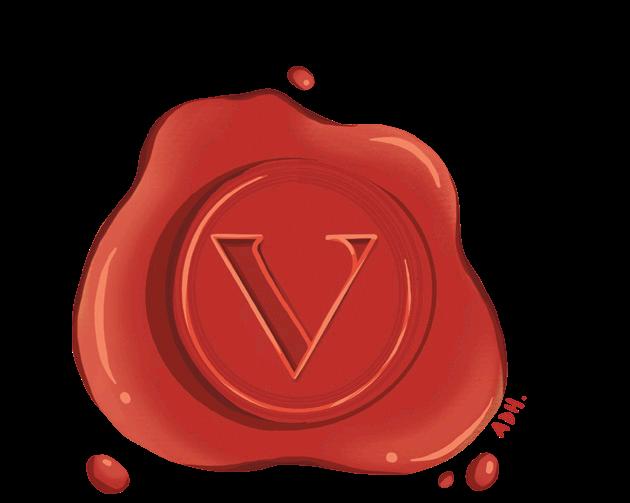
little sleep is terrifying, yet impressive.
Most importantly, I’d like to thank all of my contributors who have flavoured the section with thoughtful and intelligent articles. I have learned a ton from your takes on matters ranging from labubu dolls to the unionization of reality dating shows.
I had fun, and I look forward to seeing what’s next both for the section and my life.
— Rubin Beshi, Business & Labour Editor, Volume CXLV
The Varsity breaks down U of T’s $3.62 billion budget so you don’t have to
Jessie Schwalb Governance Correspondent
“The annual budget process is about making… strategic choices,” Vice-President, Operations and Real Estate Partnerships Scott Mabury told the Planning and Budget Committee on February 12.
On April 3, the Governing Council will decide whether to pass U of T’s proposed 2025–2026 budget of $3.62 billion. If approved, international undergraduate students in the Faculty of Arts & Science will face a three per cent tuition increase, some master’s programs will see tuition hikes as high as 7.5 per cent, and PhD students will receive guaranteed $40,000 in base funding.
U of T will allocate $405 million in financial aid, $5.7 million to invest more in securing research grants, and provide approximately $2.3 billion in compensation to faculty and staff.
“Revenue growth is slowing, there’s pressure on expenses, and there’s lots of geopolitical uncertainty,” Vice-President & Provost Trevor Young told the Business Board on March 12. However, the university continues to forecast a “strong” financial position, projecting a 3.8 per cent net income increase from 2023–2024.
Two-thirds from students’ pockets
Under the proposed budget, 66 per cent of U of T’s revenue — totaling $2.4 billion — will come from tuition and fees. Another 20 per cent will come from grants for general operations provided by the province, which increased funding by $27 million.
The 2024–2025 academic year marks the first time that U of T has enrolled more than 100,000 students. This coming year, the university plans to enroll 92,415 full-time equivalents, representing the number of full-time course loads.
Entering the seventh year of the Ontario government’s freeze on domestic in-province tuition the university’s revenue from domestic tuition will remain similar to what it received in 2018–2019, not accounting for inflation.
42 per cent of the university’s total revenue in 2024–2025 will come from international students, who make up 29.7 per cent of all students. Among the Faculty of Arts & Science undergraduates, international tuition will increase by three per cent, while non-Ontario domestic tuition will increase by five per cent.
This past school year, U of T enrolled 16 per cent fewer new international students than planned; this was a smaller decline than many other Canadian universities, some of which saw drops of 30–40 per cent.
Mabury attributed the decline in international enrolments to tighter federal immigration policies and geopolitical tensions. In September 2023, the Canadian government announced an investigation into links between the Indian government and Sikh leader Hardeep Singh Nijjar’s death in Canada, triggering a prolonged dramatic dispute. In 2024–2025, the university enrolled 9.62 per cent fewer international students from India.
Young told the board that some geopolitical

dynamics present opportunities for the university. Applications from US students for 2025–2026 increased by 16 per cent. The weakening Canadian dollar — which fell 0.5 per cent against the US dollar between January 20 and March 14 — makes Canada a more attractive destination for international students.
Over the next five years, the administration aims to increase graduate enrolment by 9.5 per cent.
On November 12, 2024, U of T announced that it would guarantee $40,000 in annual base funding for all PhD and Doctor of Juridical Science (SJD) students for their first four or five years — a decision Young expects will help attract more graduate students.
Although he applauded the new funding guarantee, University of Toronto Graduate Students’ Union (UTGSU) President Amir Moghadam told The Varsity that “wins” for PhD and SJD students should not come at the expense of master’s students, some of whom will face tuition hikes of up to 7.5 per cent this year.
Citing “decades of underfunding” from the provincial government, Moghadam said “universities are scrambling to make ends meet,” leading them to raise tuition. In response, the UTGSU has advocated for increased provincial and federal support. He pointed to the tri-council agencies’ 2024 decision to raise doctoral student awards to $40,000 — a change he credited to advocacy from graduate student unions across the country.
“Tuition fee increases are the short-term answer to the perfect storm that the decision makers — university and government — have created,” he said.
Spending: Salaries, research, and “efficiency”
In 2025–2026, U of T projects $3.62 billion in expenditures, with $2.38 billion allocated to faculty, librarians, and staff compensation, including pension contributions. The university plans to hire 15 new faculty — far fewer than the 40 to 50 hired in each of the past few years.
The university has budgeted $405 million for student aid, including $90 million for international scholarship programs. On average, U of T provides 69 per cent more financial support than other
Ontario universities.
According to Mabury, the university also plans to invest in improving “operational efficiency,” or its ability to optimize its use of resources. On March 12, it launched a new travel and expense claim system to make it easier to reimburse employees’ expenses, with this being expected to cost approximately $900,000 per year but save eight million dollars to $10 million per year. Additionally, U of T will consolidate various separate human resource processes into a centralized system.
U of T plans to invest $4.6 billion into 27 capital projects over the next five years. Mabury told the board that the university rents 832,000 square feet of space in downtown Toronto at a cost of just under $50 million a year. Future projects at UTSC include a new commerce building, an Indigenous House Project and a performance and arts building.
Each year, U of T allocates funds to specific priorities. For 2025–2026, the university plans to distribute $21.8 million across three areas: doctoral funding and scholarships, support for researchers applying for grants, and new agreements with the federated colleges: St. Michael’s College, Victoria College, and Trinity College.
Young told the board that U of T’s funding from Canada’s tri-council agencies is “slipping” compared to other universities like the University of British Columbia and the University of Calgary. To encourage more grant applications, the budget includes $5.7 million to establish teams that will help researchers apply more successfully for domestic and international grants and support the direct costs of research.
Moghadam told The Varsity that investing in the grant process is “really important.” More grant funding attracts talented graduate students, who in turn, bring in more funding as their talent attracts more money, creating a positive feedback loop. Additionally, increased funding helps students and faculty produce “higher quality research in a shorter amount of time.”
However, Moghadam worries that these investments, along with the new $40,000 base funding commitment, may come with expectations that the already overworked graduate students should put in more hours. He said that the UTGSU has raised this concern in meetings with the
administration.
“There haven’t been any answers so far,” he said. When The Varsity asked the university about these issues, a spokesperson from the university directed us to U of T’s draft budget report for 2025–2026.
Risks of inflation and student enrolment Members of the Business Board raised concerns about U of T’s reliance on international student tuition, which, in Mabury’s words, “filled the funding gap not fillable from any other source.”
Mabury assured the board that the university had enough provincial attestation letters to enroll the number of international students it desired, which are letters provided by the province to international students to confirm they have a spot to study in the province. However, U of T will be $54 million under budget if it doesn’t increase international student intake in 2025–2026.
Mabury said that U of T’s lack of student housing also poses a risk, as one way to ensure international students enroll is by providing them with housing. He highlighted that the university is in the process of constructing 1,250 new housing units across the three campuses and plans to add up to 5,000 more beds in UTSG student housing over the next decade.
In the 2018–2019 school year, 65 per cent of U of T’s international undergraduates were from China. For 2024–2025, U of T registered more than 40 new international students from 16 countries, and no single country now contributes more than half of the university’s international students. “We believe that diversifies or mitigates risk,” Mabury said.
Young told the board that the recently appointed Associate Vice-President and Vice-Provost, International Student Experience Mariana Mota Prado, has focused on recruiting students from Latin America who may feel hesitant to enroll in the US. The university also aims to increase domestic student enrolments, including by offering microcredentials, or rapid training programs provided to upskill students with the necessary abilities for employers.
“I don’t think any division is not thinking carefully about this,” Young said.
Cooling inflation in recent years helped U of T negotiate lower wage increases. However, economists have expressed concerns that inflation could rise due to the US–Canada trade war. The Consumer Price Index — which measures the cost of a standardized basket of goods used to calculate inflation — rose 2.6 per cent from February 2024 to 2025, up from the 1.9 per cent inflation rate in January.
The university expects higher inflation on utilities, software, and construction, which will increase its expenses. “I’m most worried on the capital side,” Mabury told the board. He said that the rest of U of T’s spending, including on food and compensation, has “relatively low exposure” to tariffs.
“We are well placed to tackle the challenges ahead,” Young told the board.
April 1, 2025
thevarsity.ca/category/science science@thevarsity.ca
Medha Surajpal Science Editor
Hello science readers, I hope you’re well!
I have had the pleasure of working with so many amazing people in the last year, including writers, columnists, and associates.
One of my goals as the Science Editor was to increase our mental health coverage to provide more accessible information to the student body. Some of my favourite pieces to review in this volume were explainers on things like the biological basis of depression, or summaries of what mental health apps work best. I am very happy with what we have accomplished together.
This is also a special thank you to Mash and Ridhi for being such dedicated associates. I would also like to thank my columnists: Santhija, Mehar, Jeanine, Carolyn, and Charlie. I took a lot of pride in editing articles together, coordinating event coverage, and learning about all of your interests and ideas for pitches.
I could not have done this without you all.
To the readers, as this very long year comes to an end, I want to thank you for reading everything we have been working on since May. Whether it was through picking up a copy of our paper or clicking a link or two on the website, I hope you learned something from my section and that you stay tuned for what comes next.
Stay curious!
— Medha Surajpal, Science Editor, Volume CXLV
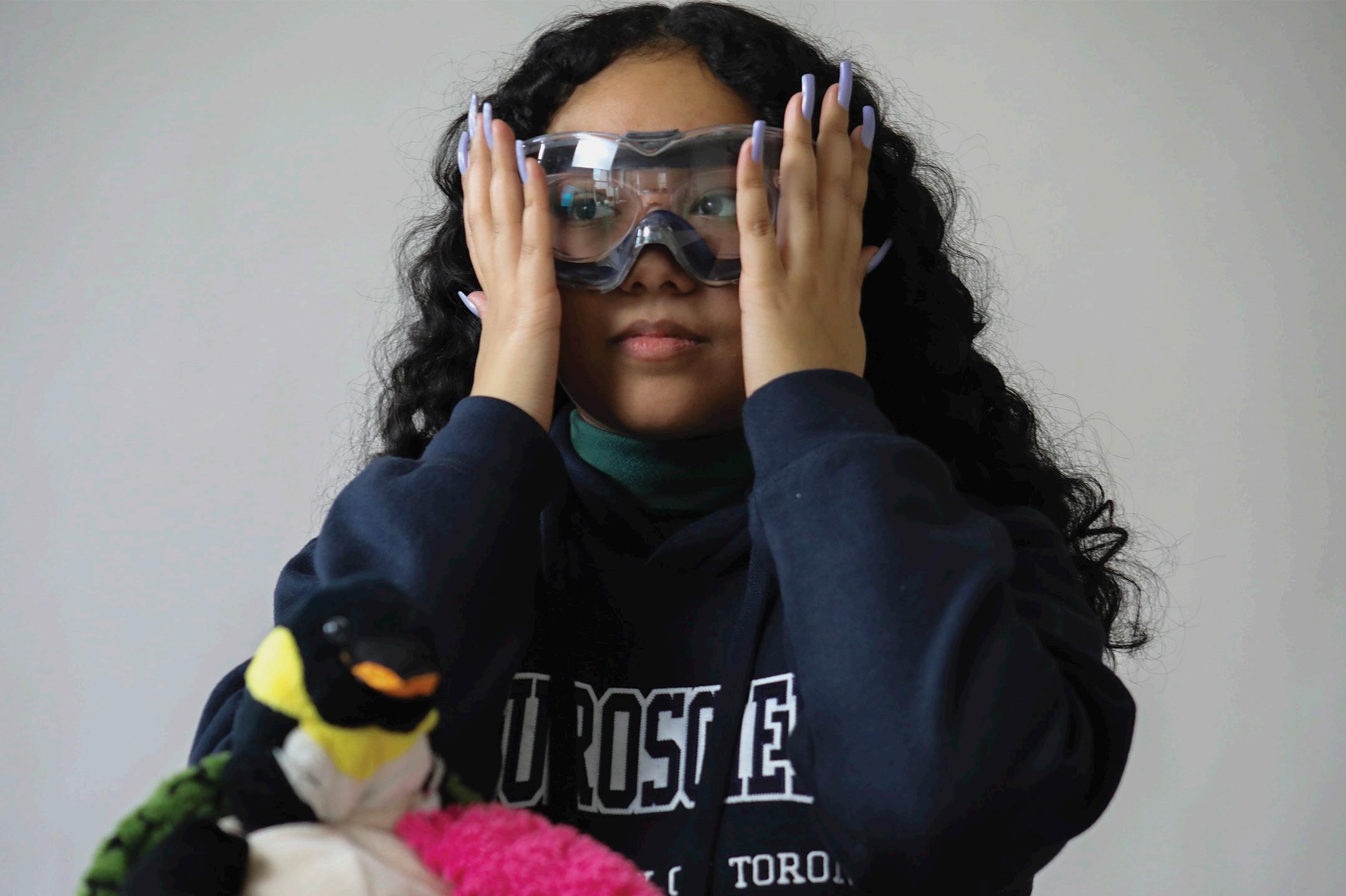
De cerebro is a testament to the power of physical spaces in scientific communication
Mehar Singh Arts and Science Columnist
Have you ever wondered what scientific buzzwords mean for you as a consumer? Or what about understanding concepts like ‘machine learning’ or ‘neural networks’ when everyone is telling you that artificial intelligence (AI) is threatening to take over your job?
Scientific literacy is how individuals use science to shape their understanding of the world and make significant decisions about their lives. Health literacy — a subset of scientific literacy — is when individuals are equipped to better understand the scientific literature on how their bodies work so they can improve health outcomes. A 2011 review published in Annals of Internal Medicine found that low health literacy is associated with poorer health outcomes. As the World Health Organization notes, an individual’s literacy status is a stronger predictor of health status than education level or ethnicity.
Scientific communication and literacy are essential components of a healthy and democratic society. With the aftermath of the COVID-19 pandemic, the growing popularity of biohacking — despite the dangers of certain biohacking methods — and even the commercialisation of the wellness industry, understanding what certain terms and concepts mean puts power back into our hands.
In an increasingly digitized world, in-person scientific education centers, pop-up exhibitions, and other public events are essential in facilitating scientific literacy and appreciation. In fact, data published by the Ontario Science Centre reveals that 90 per cent of Canadians view science centers as “being among the most trusted sources of accurate information.” Exhibitions that are curated by science educators can act as a way to combat misinformation and reach diverse audiences.
The power of physical media:
The De Cerebro exhibition
The De cerebro exhibition at the Thomas Fisher Rare Book Library is a testament to the relevance of physical spaces in a digital world. Created by Science and Medicine Librarian Alexandra K.

Carter, the exhibition draws upon the library’s collections of print and illustrative media from distinguished anatomists and philosophers is an excellent deep dive into the origins of modern-day neuroscience. It will continue to run until April 25.
Physical media displays allow science to outstretch its arms to people who might not typically be interested in the seemingly mundane and verbose nature of science.
Through the integration of various art forms — documentary film, collages, and even performance — scientific research and history can appeal to both those with a PhD behind their name and to those who don’t know what DNA stands for.
The De cerebro exhibition delicately balances technical vocabulary with detailed explanations of the historical and scientific wonders of the brain, making it an excellent option for learners of any level to engage with. For example, on delicate display was German humanist scholar Gregor Reisch’s 1512 text Margarita Philosophica , an early encyclopedia that conceptualized the brain as composed of three ventricles — each relating to a distinct cognitive faculty such as memory or imagination.
“I think a lot of things about physical books are just completely lost when you see them online. When we’re dealing with rare books each book is actually a unique copy,” Carter
explained in an interview with The Varsity Carter believes that physically experiencing materials by immersing oneself in an exhibition or library is distinct from simply accessing information online. The size and texture of materials, how they take up space, and what conditions they are in are all details that can aid the learning process but get lost in translation online.
Even for exhibitions with smaller budgets like De cerebro , the collection of different prints, texts, and other artifacts can still present a fresh approach compared to standard methods of teaching, such as textonly communication like reading a news article or learning in chronological order.
While traditional teaching modes often emphasize a one-size-fits-all approach, this shift in accessibility turns the pursuit of scientific knowledge into a stress-free and appealing endeavour, and compensates for different learning styles too.
Why does scientific literacy matter?
Diversifying how scientific research is presented enhances its accessibility by ensuring that resources and knowledge can be found in the communities that they’re meant to serve. This is critical to ethical knowledge distribution, especially for populations where technological skills and access aren’t as widespread. Having physical spaces to engage in scientific discourse and learn from each other is essential for ensuring that information reaches the local communities that it aims to target.
The opportunity to gather in-person is crucial for dispensing scientific knowledge to people who normally wouldn’t seek it out themselves, either due to ignorance or indifference. Deviating from wordy modes of presentation and instead turning towards visual media — postcards, phrenological busts, and posters — as seen in De cerebro can make people truly interested in science. Fostering wonder in how our bodies work is the first step in encouraging health literacy for all.
Santhija Jegatheeswaran Health Correspondent
Measles was once nearly wiped out in North America. Now it's making a comeback, spreading fast and dragging dangerous misinformation along with it.
From October 18, 2024, to March 26, 2025, Ontario has reported 572 cases of measles. Last month, the US reported its first measles-related death since 2015. An unvaccinated child died during a measles outbreak in Texas that had infected over 120 people. Health officials confirmed the death and warned that such outcomes are entirely preventable with routine vaccination.
This was a tragic example of how misinformation can lead to preventable outcomes.
From parents hosting “measles parties” to US Secretary of Health and Human Services and vaccine conspiracy theorist Robert F. Kennedy Jr. downplaying the recent outbreak as “not unusual,” a flurry of controversies has arisen over vaccine safety.
Why measles spreads like wildfire Measles is an incredibly contagious disease caused by the measles virus (MeV). It’s a viral infection that mainly affects the respiratory system, causing fever, red skin rashes, coughing, and conjunctivitis, also known as pink eye. Measles can also suppress the immune system, making individuals more susceptible to other infections. In severe cases, the virus infects the lungs and causes pneumonia, a severe lung infection. Rarely, measles can cause encephalitis, which is the inflammation of the brain tissue.
If someone has the virus and breathes near an unvaccinated person, there’s a 90 per cent chance they’ll catch measles. On average, a person infected with measles can spread it to 12-18 others. For comparison, the flu has a spread rate of about one or two people, while early in the pandemic, COVID-19 had a spread rate of about two to three.
In the US, about one in five unvaccinated people who get measles end up in the hospital. Among every 1000 infected children, one to three die from pneumonia or associated neurologic complications. Even years after recovering, measles can still be deadly.
A rare and fatal brain disease called subacute sclerosing panencephalitis (SSPE) can develop
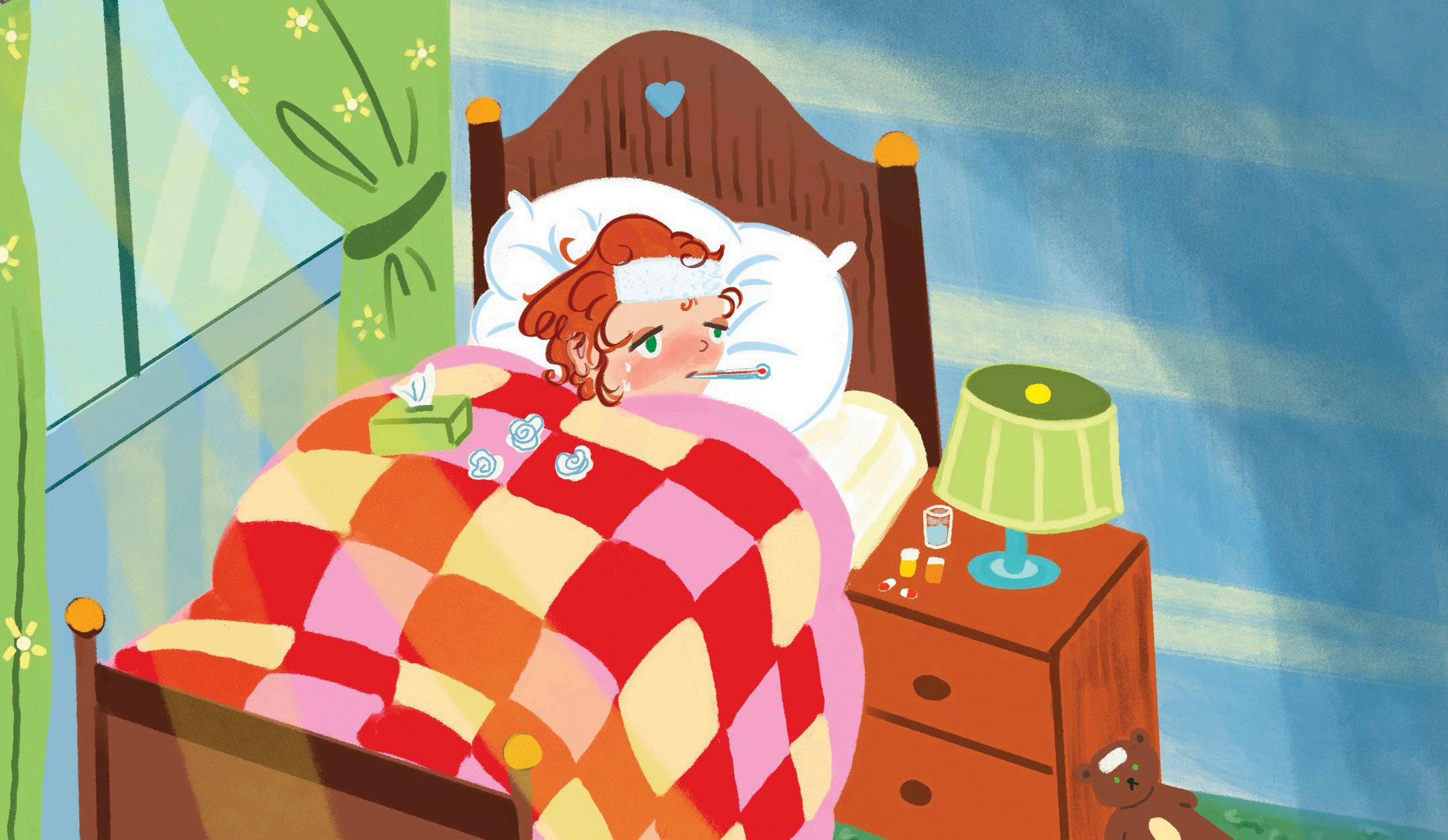
several years later in a person who recovered from measles. SSPE mostly affects children who contract the virus. Their underdeveloped immune systems can allow the measles virus to eventually invade the central nervous system and cause epilepsy, speech regression, and vision loss.
Measles’ reappearance in communities across Canada and the US is raising alarms among health professionals, especially as vaccination rates decline and immunity wanes.
Why is measles back? Declining vaccination rates and measles parties
Archchun Ariyarajah — a PhD candidate in epidemiology at the Dalla Lana School of Public Health — and Associate Professor Shelly Bolotin, who is researching waning measles immunity in Ontario, wrote to The Varsity in an email to help us understand why measles is coming back.
“The rise in measles cases is due to several factors,” Ariyarajah wrote. “Firstly, there have been barriers to accessing vaccination. The lockdowns during the COVID-19 pandemic disrupted childhood vaccination programs, causing vaccination rates to drop.” Missing out on key vaccination dates can be detrimental for infectious disease containment.
He also pointed out that measles vaccination rates have been declining for years. “This is partly because vaccines have been so effective that many people have never seen a measles case in
What are the bases
their lifetime and therefore, no longer see it as a threat.”
Ariyarajah and Bolotin went on to explain that the lack of visible cases, leading to the belief that measles is a non-issue, has led to parents skipping their child’s vaccines. The increase in uneducated online perspectives on the measles virus has contributed to a lower vaccination rate and higher numbers of people vulnerable to measles.
Until the late 1990s, eliminating measles seemed within reach thanks to the development of effective vaccines, including the combined measles, mumps, and rubella (MMR) vaccine. Ariyarajah and Bolotin shared that prior to the vaccine, Canada saw 50,000 cases of measles per year alongside hundreds of deaths. Vaccination keeps these numbers from happening today.
While this should have led to positive outcomes in vaccine research, false claims about the MMR vaccine causing autism began to spread mostly through a single study that was published in The Lancet in 1998 and retracted in 2010 for falsified information. The study’s claims have since been completely debunked by further scientific research, but its damage remains.
Some parents think it’s safer for their kids to catch measles ‘naturally’ by exposing them to the virus on purpose, hoping they’ll build up immunity. That’s the purpose of measles parties, where parents bring their children into contact with an infected person — ˇa terrible idea!
hope for
During the 2018–2019 measles outbreak in New York City, there were 649 confirmed cases. Nearly 42.8 per cent of the cases were children aged one to four, and 15.6 per cent were infants under one, who were too young to be vaccinated. Researchers found that a spike in infections followed increased contact between young children, possibly due to these parties. Without this rise in contact, the outbreak could have been four times smaller.
“Nearly three-quarters of measles cases in Canada during the recent outbreak occurred in people who were never vaccinated. This is the main driver of the outbreak, and it is particularly dangerous when individuals who are not vaccinated congregate together,” wrote Ariyarajah and Bolotin.
Measles on campus? It’s a real risk
Universities also have to contend with measles outbreaks. With thousands of students living, studying, and socializing in close quarters, one case can quickly spiral.
“Measles is extremely contagious — it can linger in the air for up to two hours after an infected person leaves a room,” wrote Ariyarajah and Bolotin. “This means someone could walk into a room after the infected person has left and still get infected. Since measles spreads so easily, measles outbreaks are hard to control.
The good news? Measles is entirely preventable, and U of T students have access to free resources to stay protected. Students can book free vaccinations for diphtheria, polio, tetanus, mumps, measles, rubella, and others through Health & Wellness Services, which are available on all three campuses.
Additionally, students planning international travel can access travel health clinics in Toronto for vaccinations. Campus nurses and doctors are also available to offer guidance on whether a booster shot or a blood test to confirm immunity is needed.
To protect against measles, it's crucial for students to take proactive steps. Ariyarajah and Bolotin emphasize, “I encourage all students to check their vaccination records to make sure they’ve received two doses of the measles vaccine. [...] Even if you have already been vaccinated, it is perfectly safe to be vaccinated again.”
With accessible resources at U of T, students can easily ensure they are fully protected against measles and other vaccine-preventable diseases.
U of T’s Social Justice Committee holds climate crisis workshop
Mishaal Sabir
Varsity
Contributor
On March 13, U of T’s Hart House Social Justice Committee hosted a collaborative climate crisis workshop in the Hart House Music Room with student groups Climate Justice U of T and Green Leading U of T, as well as the U of T NGO Science for Peace. The event, titled “The Climate Crisis: What is the basis for hope,” brought together students, academics, and activists with the aim of combating the sense of doom often surrounding the climate crisis.
The speakers were Professor Emeritus Richard Sandbrook and Professor Danny Harvey — from the political and environmental science departments, respectively. Each offered their expert analysis on the future trajectory of the climate crisis and reasons to remain optimistic.
A political problem with a technical solution
Sandbrook opened the workshop with a sombre but constructive assessment. “I would argue that climate change is a wicked political problem,” he said during his speech. Sandbrook also noted, in an interview with The Varsity, that although technical solutions to reduce carbon emissions exist, “to carry those through in a coordinated, long-term manner,
we need to have the political will to do so.”
Sandbrook stressed that the power of the fossil fuel economy — including oil companies, banks, insurers, and investors — poses a massive obstacle to political action. “If you didn’t have a government… saying outright that we’re phasing out fossil fuels over 10 or 15 years, what you would have is a collapse of the stock market because of the stranded assets,” he warned. In the context of the climate crisis, “stranded assets” means the depreciation of resources, impacting industries like oil, gas, and coal.
Despite this, Sandbrook sees a path forward through non-violent activism. “Attention to nonviolent action and civil disobedience is very important in the future for getting climate policies that will be effective,” he said. Currently, the importance of environmental activism has never been greater. The 2015 Paris Agreement set a goal to limit further global temperature rise to no more than 1.5 degrees Celsius. However, Sanbrook noted that many experts do not feel that 1.5 degrees Celsius is a realistic target given the current rate of warming. He stressed the importance of aiming for 1.6 degrees Celsius if 1.5 degrees Celsius is unattainable, and 1.7 degrees Celsius if necessary. “We [must] fight for every 10th of a degree… because every 10th degree makes an enormous difference in terms of the volatility of climate.”
Complementing Sandbrook’s political insight, Harvey offered an empirical overview of recent climate trends and why he remains “quite optimistic.” According to Harvey, the International Energy Agency (IEA) now predicts that global fossil fuel emissions will peak this decade and begin declining by 2030. “This is the first time ever a major energy organization is projecting that we’ve met peak emissions, and they’re going to be on the way down,” he said.
Harvey also pointed to demographic trends as a basis for hope; “70 per cent of the world’s population is now at or below replacementlevel fertility,” which means that the current birth rate does not surpass death rates. He added that lower population growth could ease future pressure on food systems and emissions. “If we only need to feed nine billion people instead of 11 billion… it [will] be a far easier task.”
Another hopeful indicator is that global meat consumption, a major source of greenhouse gases, has plateaued and even declined per capita. “That’s also ground for optimism, and a lot of the credit goes to the younger generation,” said Harvey, who noted the rise in plant-based diets and awareness of animal ethics among youth.
Perhaps what I found most striking was Harvey’s analysis of energy generation trends. “Fossil fuel plus nuclear [energy] has plateaued,” he said, noting an upward trend in clean energy (wind,
solar, and hydro), and that the manufacturing capacity is at 80 per cent of the level of fossil fuel and nuclear energy.
While storage and grid integration challenges remain, Harvey believes that renewable energy is becoming too economically viable to ignore. Since “China is going to have a lot of excess manufacturing capacity,” renewable energy is “now cheaper than fossil fuels just about everywhere in the world.”
A call to action — and to hope Lisanne Koehler is a fourth-year international relations, political science, and european affairs student, and co-chair of the Hart House Social Justice Committee. In an interview with The Varsity, she described the climate crisis workshop’s goal as providing hope through action. “We want to encourage students… to give them some hope [that] what you’re doing actually matters.”
For both Sandbrook and Harvey, the message is clear: while the climate crisis is serious, positive changes can still happen. It will require political courage and sustained collective action, but there is still much that is worth fighting for.
As Harvey told The Varsity, the transition to a carbon-free economy is happening and it is unstoppable. “The only question is how fast it will happen and who is going to benefit most along the way.” To Harvey, those who act accordingly will thrive, and, eventually, so will the whole world, from a stabilized climate.
April 1, 2025
thevarsity.ca/section/sports sports@thevarsity.ca
Jake Takeuchi Sports Editor
I have had an absolute blast this year as Sports Editor. Truly. It’s an incredible privilege to be able to write, let alone write sports — my absolute passion. My biggest goal coming in this year was to write diverse, engaging stories about the Varsity Blues, and our illustrious but often overlooked history. I think I’ve done a good job telling U of T, Varsity Blues, and Toronto stories in this volume. One of the biggest challenges of being a Sports Editor is figuring out ways to describe wins and losses. I’m not sure how many grabbing, clinching, securing, winning, taking home, and nabbing I’ve written this year, but I hope I was able to write grab, clinch, secure, win, take home, and nab your interest in sports. Thank you, sports readers and contributors, for taking your time to read sports. I hope you became a Blues fan.
I came in expecting to write about myself and the section in this letter, but it wouldn’t be true to what the sports section actually is — a collaborative, collective project. Please allow my Adrien Brody moment.
I would like to thank Caroline, my brilliant
associate editor, who has been with me since my first day at The Varsity. Not only a track and field star, an academic weapon, and a volunteer violin teacher, but also my prime time social media superstar. You will always be my favorite Blue. Thank you, Taimoore, for your incredible game reports and endless Toronto sports knowledge. Thank you, Lauren, for your first-reads and fact-checks. I would be lost without my brilliant associate editors and their support throughout the year.
Thank you to the copy team, led by the eversteady but hilarious duo of Ozair and Isabella. The copy team checks every single word you read on The Varsity, three times over, always with a smile, at any hour (usually in the early AM). Thank you for your first reads (checked), the banter (checked), and youthful energy (PROBLEM). What would sports be without our Peabody and Sherman. My GOATs.
Thank you to the design team, led by Aksaamai and Nicolas, who gave me endless laughs and fresh, hip vocabulary during my routine design room visits. You are absolute joys to work with and legends for mapping out the report cards. Thank you to the visual team of Zeynep and
Vicky for always accommodating my late visual requests and kooky illustration ideas. Y’all make me look good.
Thank you to the management team led by Eleanor, Ajeetha, and Kaisa. Always professional and full of wisdom. To Vol. 145, masthead and all my co-workers, thank you for all the laughter and jokes throughout the year. I’m constantly in awe of the talent, dedication, and integrity of the team here. Dealing with unimaginable stress,
tight turnarounds, and a U of T workload, on top of life, really — the passion of The Varsity staff is unmatched.
Last but not least, thank you, Varsity Blues. Without you, there is no sports section. Without you, I would not have found so many compelling stories to tell. You have a fan for life. Go watch the Blues!
— Jake Takeuchi, Sports Editor, Volume CXLV
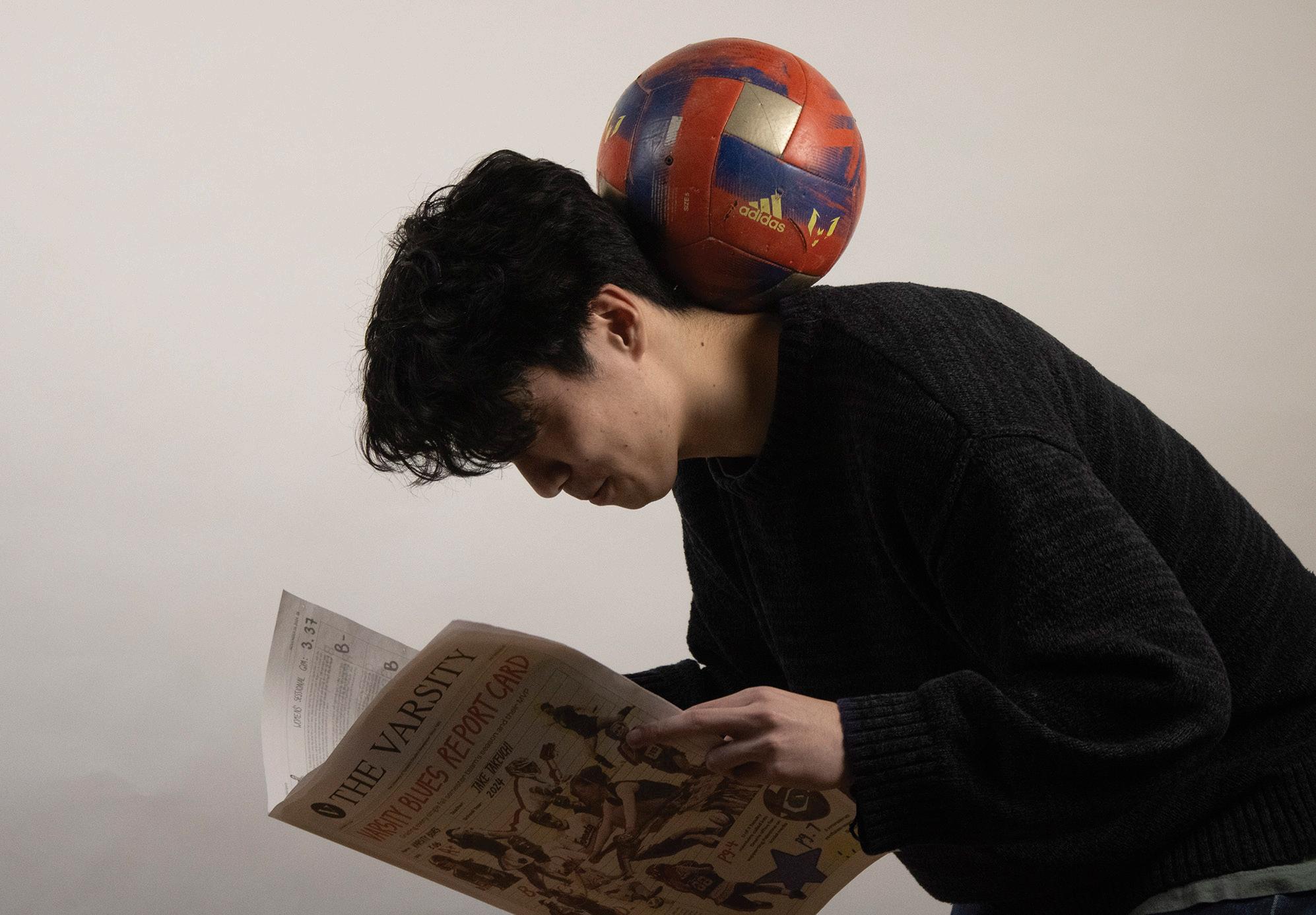
Jake Takeuchi & Caroline Ho Sports Editor & Associate Sports Editor
For the fifth consecutive year, The Varsity has selected its men’s and women’s Athletes of the Year, following another season of exciting Varsity Blues action. Several Varsity Blues teams achieved great success this season. Yet, the two athletes highlighted here helped their respective teams break new ground while also achieving a great individual season.
Men’s Athlete of the Year: Niklas Hallam First-year midfielder Niklas Hallam had an incredible breakout year, leading the Varsity Blues men’s soccer team that scored 48 goals in the regular season — the most this year in the Ontario University Athletics (OUA). Despite being a rookie, Hallam was featured in all 12 games and registered a remarkable 10 goals and two assists. His slew of goals this season was tied for the highest on the Blues and second highest in the OUA East.
Hallam’s season earned him OUA Rookie of the Year alongside an appearance on the second All-Star team. Nationally, the lethal finisher earned U Sports All-Rookie Team honours.
In recent years, the Blues have had a standout cohort of rookies. In fact, Hallam marks the third consecutive Blue to take a conference Rookie of the Year and U SPORTS All-Rookie. In 2023, forward Michael Maslanka nabbed these awards, while in 2022 midfielder Tadiji Vukas achieved the honours. However, Hallam’s 10 goals beat both Maslanka and Vukas’ debut seasons, making this year’s rookie season particularly memorable.
Hallam’s standout performance was picked up by professional scouts as well. During the Canadian Premier League (CPL) U SPORTS Draft, Hallam was selected fourth overall by Pacific FC. The Varsity is excited to see just how high Hallam can fly in what will be an undoubtedly illustrious career.
Women’s Athlete of the Year: Nina Mollin Nina Mollin had another sensational year, building on an already lengthy list of achievements. The third-year swimmer was named 2023 U of T women’s Rookie of the Year and 2024 T-Holder’s
women’s Athlete of the Year, in addition to her receiving the 2023 and 2024 Dr. Jeno Tihanyi Individual Medley Excellence Award.
In her rookie year, Mollin amassed an impressive haul of three OUA gold medals and a gold and two silver medals at U SPORTS. In 2024, Mollin secured four OUA golds as well as four golds and a bronze at nationals.
This year, she added five more OUA gold medals in the 200-metre fly, 200-metre breaststroke, 200-metre individual medley, 400-metre individual medley, and 400-metre free relay. She was named OUA women’s Swimmer of the Year after leading the Blues to their 11th consecutive provincial title. Mollin also won her third straight Dr. Jeno Tihanyi Individual Medley excellence award.
At the 2025 U SPORTS championships, Mollin took home three additional gold medals, a bronze, and a sixth-place finish. Unfortunately, the women’s swim team fell short of the U SPORTS podium; the team ended the season ranked fourth following three consecutive national
championships. Still, Mollin’s contributions are especially crucial in the midst of a team rebuild. In particular, the graduation of several key team members, such as Ainsley McMurray, left significant gaps in the roster to be filled.
Mollin’s continued and consistent dominance in the pool and significant contribution to the team put her just above the other candidates for The Varsity’s women’s athlete of the year. It’s hard to argue with the haul of silverware. It has been an incredible season from Mollin, who continues in the line of Varsity Blues swimming excellence.
Honourable mentions
It was difficult to single out just one athlete.
Honourable mentions for the men’s Athlete of the Year must also go to Rassam Yazdi in tennis, Owen Taylor in baseball, and Hugo Li in figure skating. Yazdi added to an already overflowing trophy cabinet by securing an OUA gold medal and his fourth career all-star honours in addition to a national bronze. Taylor
secured back-to-back OUA MVP awards while leading the baseball team to a second straight banner. As captain of the figure skating team, Li led the Blues to a provincial silver medal while grabbing two golds, a silver, and a bronze in his category events.
Among the women’s Varsity Blues athletes, we saw strong performances this year from the deadly goalkeeper duo of field hockey’s Deepi Gill and hockey’s Lyla McKinnon, and soccer captain Hannah Chown. Leading the team as captain, Gill had a phenomenal season, grabbing OUA Goalkeeper of the Year alongside a prestigious U SPORTS AllCanadian nomination.
Despite being a rookie, McKinnon led all goalies in the playoffs with a sensational .953 save percentage and grabbed Finals MVP. Chown continued to be the heart and soul of her team, rounding out her accolades by earning her fourth straight OUA All-Star nomination with a place on the First Team AllStars.


Dianna Ros: The architect of U of T women’s basketball’s next era In conversation with the Blues head coach after her inaugural season
Arianna
George Varsity Contributor
A coach’s first season is a blueprint for the empire they hope to build. For Dianna Ros, stepping up as U of T’s new bench boss is more than just coaching — it’s about crafting a new team identity.
A team’s identity mirrors the temperament and philosophy of its head coach. With Ros at the helm, U of T’s women’s basketball program is undergoing a transformation — one deeply rooted in resilience and a culture of growth. The Varsity sat down with Ros as she explained that her role isn’t just to be a coach, but to redefine what leadership looks like from the bench.
Finding clarity in leadership
As a basketball player at McGill University, Ros played with a fire that couldn’t be taught — a relentless hunger that inspired her teammates. More than a scorer, she was the floor general, setting the tone and making big plays.
Ros’s sparkling record throughout her fiveyear career consisted of winning réseau du sport étudiant du Québec (RSEQ) Rookie of the Year, U SPORTS All-Rookie selection, multiple all-star nods, and five straight conference titles.
Success, however, came at a price. Injuries mounted, pushing her body to its limits. In her final year, she played through a partial tibia fracture in the national finals. When the adrenaline wore off, the damage was worse than expected.
“It was really tough… my career just ended. I’m in a boot. I’m trying to find a pro contract — it wasn’t going well,” said Ros. Basketball had always been her identity, her escape, her validation. Now, sidelined indefinitely, she confronted a terrifying question: who was she without the game?
Basketball was her proving ground. She played to silence doubts — both her own and those of others. Her injury led her to confront reality all too soon: her playing days were over. The rhythm
of the game, the structure of practices, and the camaraderie disappeared overnight.
“I wasn’t really happy,” she admitted. “My best friend told me, ‘You’re not fun to be around. You need to go.’ ” An impromptu trip to Asia and distance from basketball gave her muchneeded clarity. The sport she loved remained an essential part of her life. When the Québec Basketball Federation called, she couldn’t ignore it. Ros led the U17 Québec provincial girls team to the 2023 national championship.
The transition from player to coach took time. It wasn’t the dream she had chased, but it was a doorway back into the sport that had shaped her. But as she worked with young athletes, something clicked. The fire she had as a player reignited — not for competition, but for mentorship.
Ros’s approach to coaching is a product of her playing career — she’s direct, demanding, but also deeply invested in her players. “You get the best out of them… when they know that you care,” she said. This isn’t about empty platitudes; her leadership is built on authenticity. She values transparency over sugarcoating, believing that a player who knows exactly where they stand is a player who can grow.
“If something doesn’t fit with [our] culture… it’s out the window,” she said. Culture is the backbone of her system — one where players don’t just perform but evolve, both as athletes and as people.
Building a culture of relentless growth
The season presented numerous challenges for the Varsity Blues, particularly in its early stages. The team faced a series of losses, including a 44–82 defeat against St. Francis Xavier University and a 34–85 loss to the University of British Columbia. Despite these setbacks, Coach Ros remained committed to her developmental approach, viewing each game as a growth opportunity.
For her, player development isn’t about shortterm gains — it’s about instilling a mindset that
serves her players beyond the court. “If I just teach them basketball, I would have failed them.”
Previous coaches, while effective in their own right, often adhered to conventional, structured models where strategy was largely dictated by a rigid understanding of roles and systems. This traditional coaching mindset placed a premium on conformity within the tactical framework, emphasizing structure over individuality.
In contrast, Coach Ros’s leadership is defined by a nuanced and player-centric approach that values adaptability. She believes that true success emerges from a balance between structure and individual agency, where players are given the freedom to assert themselves within a unified system.
“I make mistakes all the time, and I tell them… I apologize often… [That] sets the stage for them to own up to their mistakes,” she said. By emphasizing autonomy, she encouraged the development of a more versatile team — one that operates as a cohesive unit, yet thrives on the unique strengths of each player.
“I want our program to be recognized as one of the hardest-working programs… Nothing is given, you gotta earn it,” she emphasized. “Even if you lose, your work ethic [can’t] change.”
She displayed this mentality in their November 3, 2024 game against Algoma University, where the Varsity Blues secured their first victory with an 85–58 win. The game marked a turning point, showcasing the team’s improved competitive edge as they secured the win through team play and relentless energy.
Her philosophy also goes beyond hardnosed coaching — she understands that confidence is built over time. She makes the team understand that their work will translate, that their growth will show that every small battle won in practice builds toward something bigger.
That mindset was put to test in the Varsity Blues’ February 8 game against Lakehead
University, where the Blues clinched a narrow 61–60 victory, showcasing their developing resilience and determination.
Building a culture of support
Ros is quick to credit her coaching staff for shaping her experience. Her coaching staff — Kalina Alexander-Renaud, lead assistant coach; Clodagh Scannell, assistant coach; Ellen Ougrinov, graduate assistant; and Mathushan Srikannathasan, skills development coach and assistant coach — each bring a unique set of skills, forming the backbone of her leadership. Ros joked, “If Kali wasn’t here, I’d be confused like a lost puppy for sure,” and referred to Scannel as “the glue that holds everyone together.”
Ros appreciated the emotional support Ougrinov provides for the team, noting that it comes from Ougrinov once having played alongside the team. With Srikannathasan, she said, “The more we talk, the more we realize how close we are in terms of the way we think [about] basketball.” It’s clear that Ros’s revolution extends to the coaching staff.
Beyond the Xs and Os
Long-term, there’s no hesitation in Coach Ros’ vision: “I want us to be a playoff team every single year… It’s a competitive sport at the end of the day. This is the highest level of [collegiate] basketball.” But success, for her, isn’t just about banners. It’s about legacy.
“My biggest measure of success is knowing that my players walk out of here [with a] 100 per cent graduation rate and have had a really good experience. I can call them up in 10 years, see where [they’re at] in life,” she said.
“We’re gonna continue building until we’re consistently a contender in the OUA and nationally. That’ll always be the picture.”
As Ros closes out her first season as bench boss, the promise of what’s to come is unmistakable — her leadership has set the stage for a team destined to rise in the seasons ahead. Stay tuned for round two, Blues.
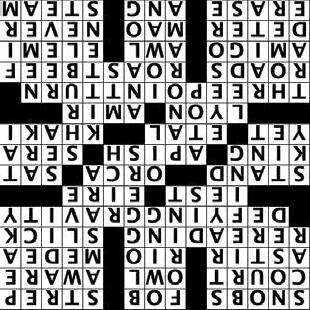
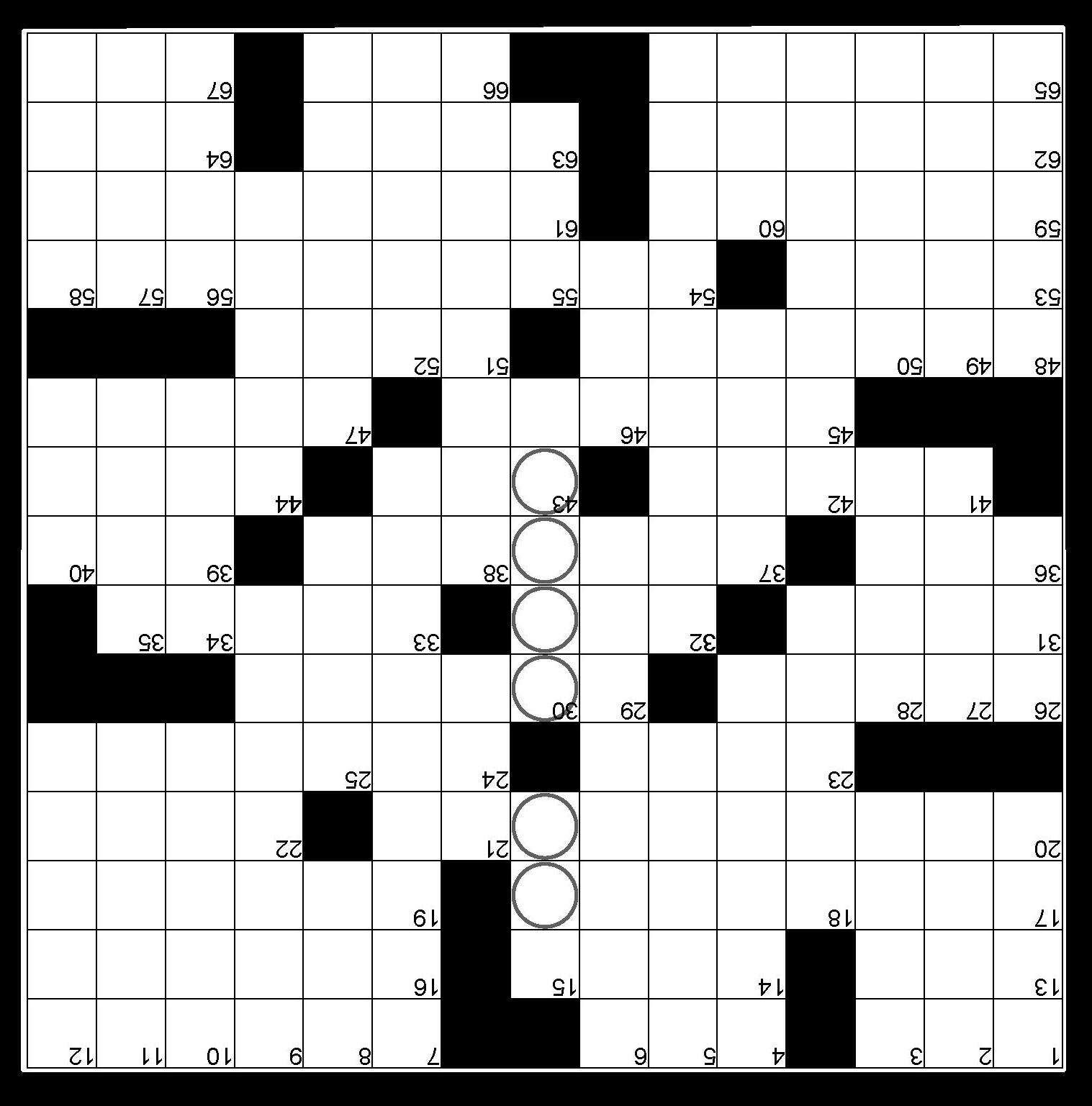
60 Young chap
58 Quality of a subatomic particle
55 Was the 56-Down of, maybe 56 Russian ruler 57 Bread in Brest?
Happen next 52 ___ chocolate (treat with a pistachio filling first marketed as "Can't Get Knafeh of It")
What a fancy coat and a garbage can both have
Refuse to let go
::::::
TTC ___ No. 1 (legislation prohibiting, among other things, rollerskating on TTC property)
Morrison Hall, e.g., informally
Varsity offerings (other than crosswords, of course)
67.Scientology founder L. ___ Hubbard
66."You just broke my toe, ___" (biology pun)
65.Capitalistic
64."When somebody says, ___, I think you've totally changed" ("Sympathy is a knife" remix lyric)
63."That's Amore" singer Martin
62.___ network (type of machine learning)
of an AirPod
within the Netherlands (that is sometimes used to refer to the whole country)
to hibernate
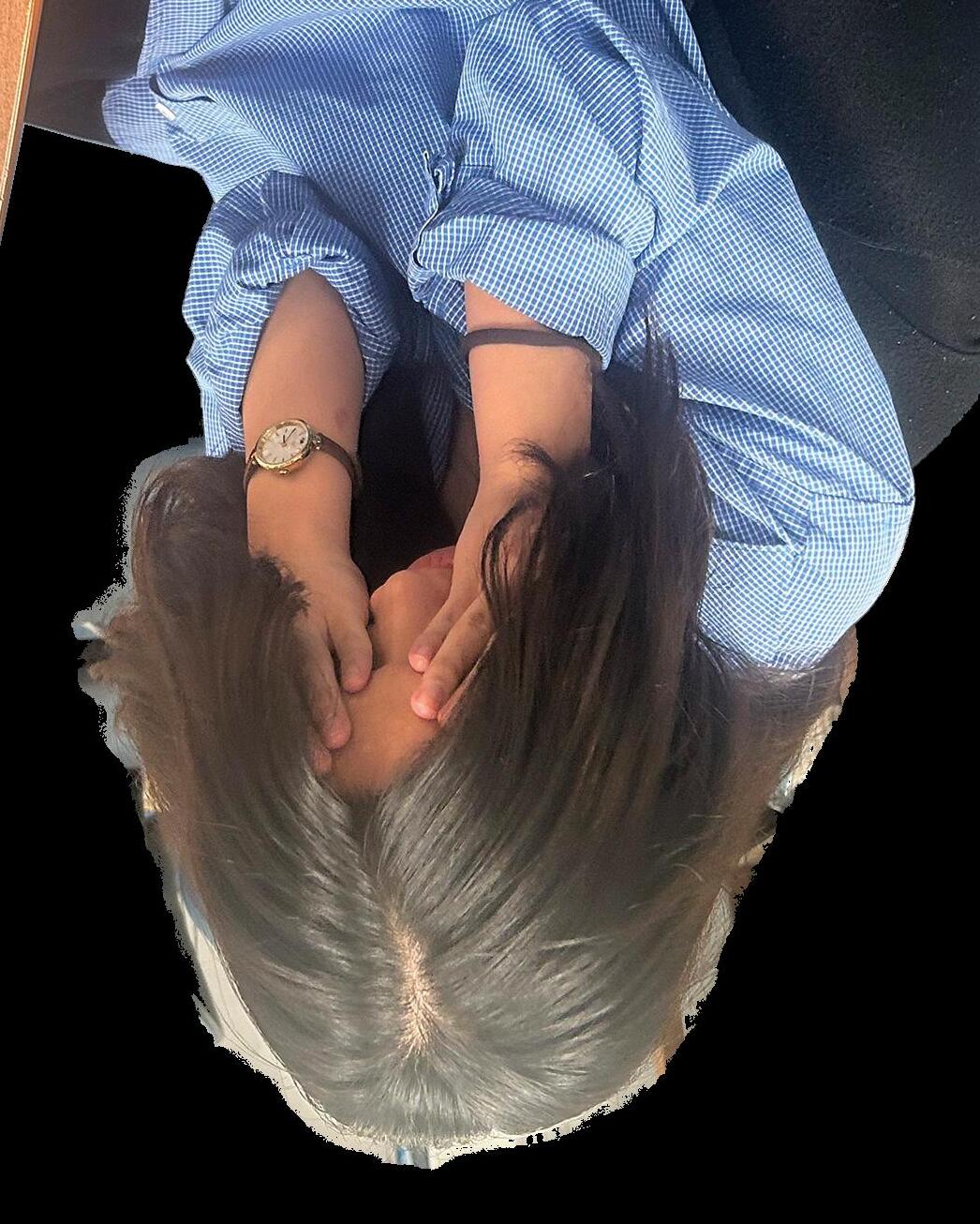

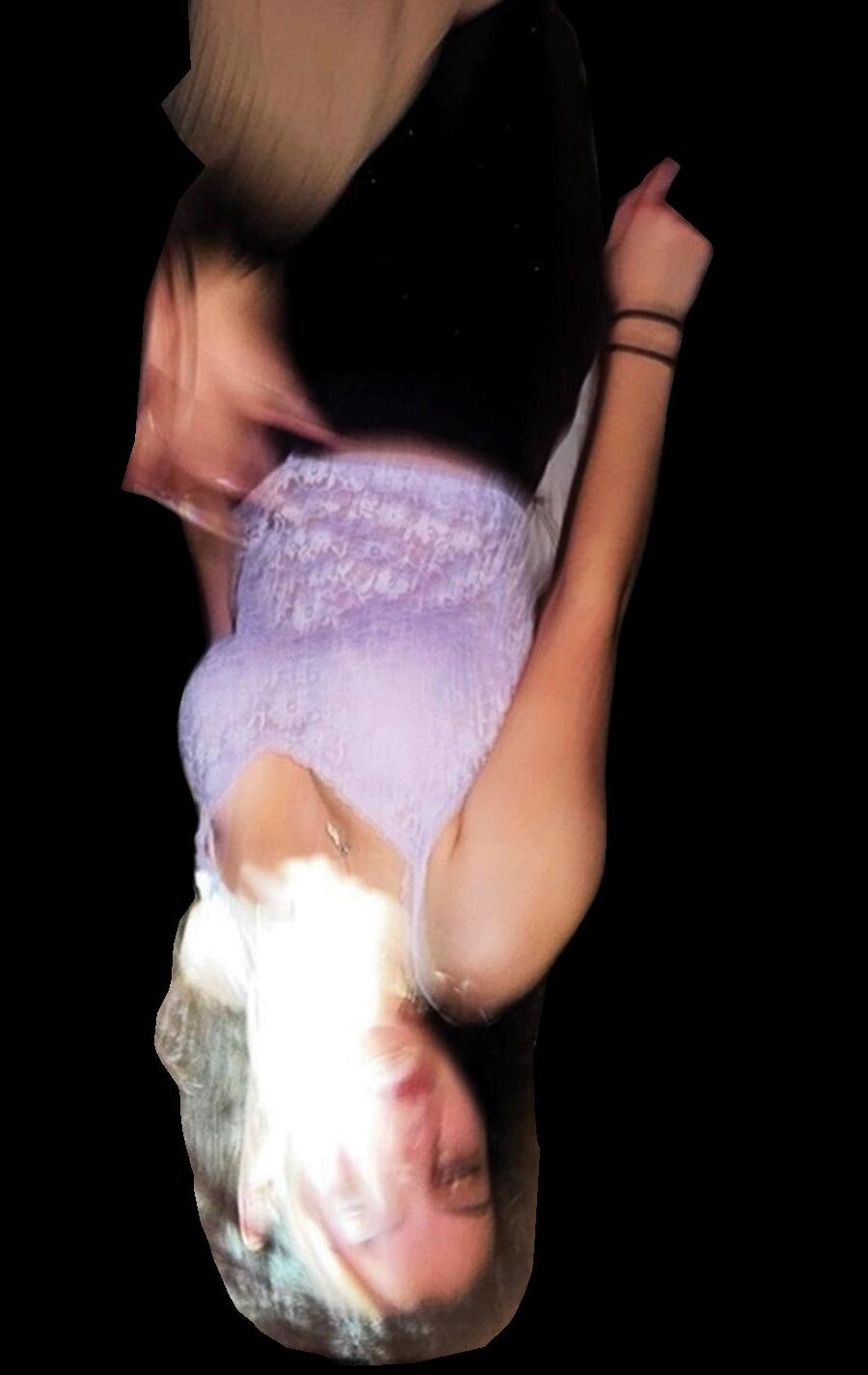
61.Rallying cry against American tariffs and annexation (hint to the circled letters)
59.Emotional jab
54.Crunches some numbers
53.Stuff produced by a dryer
51.Member of a K-pop group
48.Clorox, e.g.
47.Dermatological sacs
45."I'm going to annex your country," e.g.
44.Chemical with a high pH
43.Fraction of a joule
41.French film award
Sophie Go Sigarette-less believes that she had lost her “dignity”
The Farcity’s Token Redhead Diversity Hire, Specs — voted the hottest Varsitarian in a recent poll — quotes feeling “emasculated” and “humiliated” after losing an arm wrestling match.
Some Varsitarians lost things that went beyond the confines of the lost-and-found.
Miss Information anointed #VarsiPaparazzi as ‘a lifesaver,’ though #VarsiPaparazzi initially thought the keys were a part of her gift. The toothless babe, with sorrow, returned the keys to Miss Information.
Miss Information was exuberant when #VarsiPaparazzi found Miss Information’s keys in her Secret Santa gift.
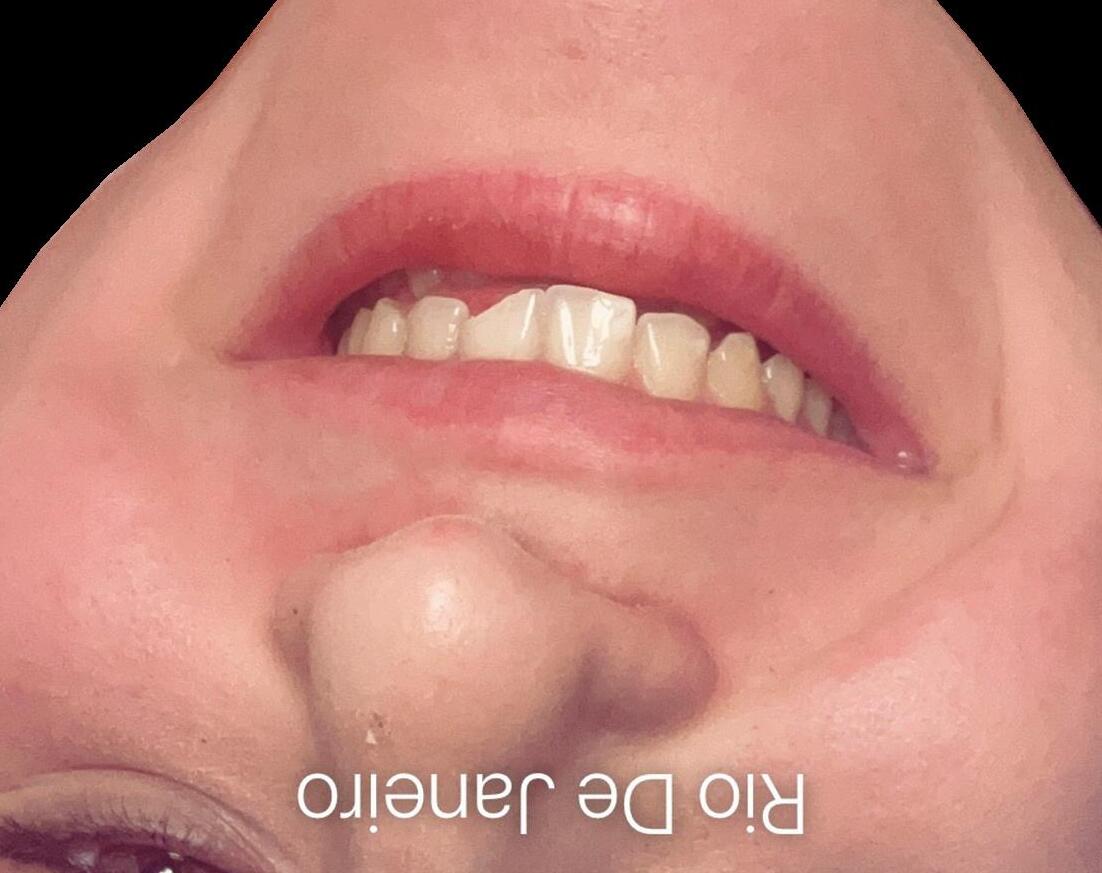

Other Varsitarians were luckier than her — not only because they were spared a hefty dentist bill, but because the lost-and-found was the friends they made along the way.
unable to pronounce the letter s, the toothless Turk returned to The Farthity offith to find her tooth — she had no luck.
half-toothless and
After spending 12 hours
“I wath wearing my thleeping bag coat, which rethricted my kneeth. I fell on my fathe thrying to thtand up! It ith NAWT my fault.”
BIT THE CURB. She blames external factors for the incident:
her half-tooth in the lost-and-found. Ultimately, she concluded that she somehow
photo evidence present. She recalls thlack’ing her coworkers and asking whether anyone had seen
matters worse, there was an unfortunate amount of
half of her front tooth was missing — to make
#VarsiPaparazzi woke up at 4:00 am and realized
With the assistance of our beloved lost-andfound, Varsitarians recall what they have lost during this year’s VarPar.
found that etches our secrets into Farcity history — looking through the contents, our woozy members are grounded back to the reality of all the sins they have committed the night before.
VarPar, because we have an incredible lost-and-
What happens at VarPar does, indeed, stay at
boozy drinks, ideally for one night only, is notorious for its aftermath.
VarPar, our beloved office party where our lovely news-heads replace their journalistic ethics with
Journalists gone wild in 21 Sussex Avenue!
“There is no such thing as truth — only stories of truth,” the Thought Police chimed in unprompted, but she said it very wisely, so it’s okay. “Language is an inherently unstable instrument,” she concluded before disappearing into the fog.
“We wanted to build the wall so badly,” Selia’s Sandwich-maker added, “that we forgot that News writers will inevitably also bring in their own biases into supposedly ‘objective’ articles and that no piece of evidence is truly neutral due to the natural processes of dissemination and framing.”
“I’m sorry the News section took so long to recognize that the Opinion section was right the entire time. Opinion pieces undergo a tedious process of fact-checking, equal or perhaps even more scrutinous than News articles due to pre-conceived notions of skepticism against Opinion articles.”
Miss Information, still recovering from the axe wound that the Thought Police put on her arm during the infamous Battle of Truths, said, “I forgive the Thought Police for nearly amputating my arm.” She conceded that,
While clutching her blood-soaked arm, Miss Information stated that, “Opinion articles also draw from a wide scope of evidence and heavily examine various perspectives. Precise consideration of logic and flow of argument is what makes Opinion articles not only compelling to read, but also valuable in uncovering connections between the obvious and not-so-obvious, making the invisible visible.”
The Associate News Editors declined to
Associate Opinion Editor, cried out, “I’m so glad the warring sections stopped fighting.” The Pinterest Whisperer took a deep breath before she continued, “It was so scary to come into the office and see blood splattered across the common room, not knowing whether it was from your section or the other’s.”
“People died,” Pinterest Whisperer, the other
connected to a defamation lawsuit that is soon to be publicized. More details to come.
Though he did suggest that this figure could be
When asked exactly about who the Bro is referring to by “they,” he said — “no comment.”
Feminist Finance Bro’s tears welled up as he recalled his memories.
comment when The Farcity reached out for an interview. Breaking bread
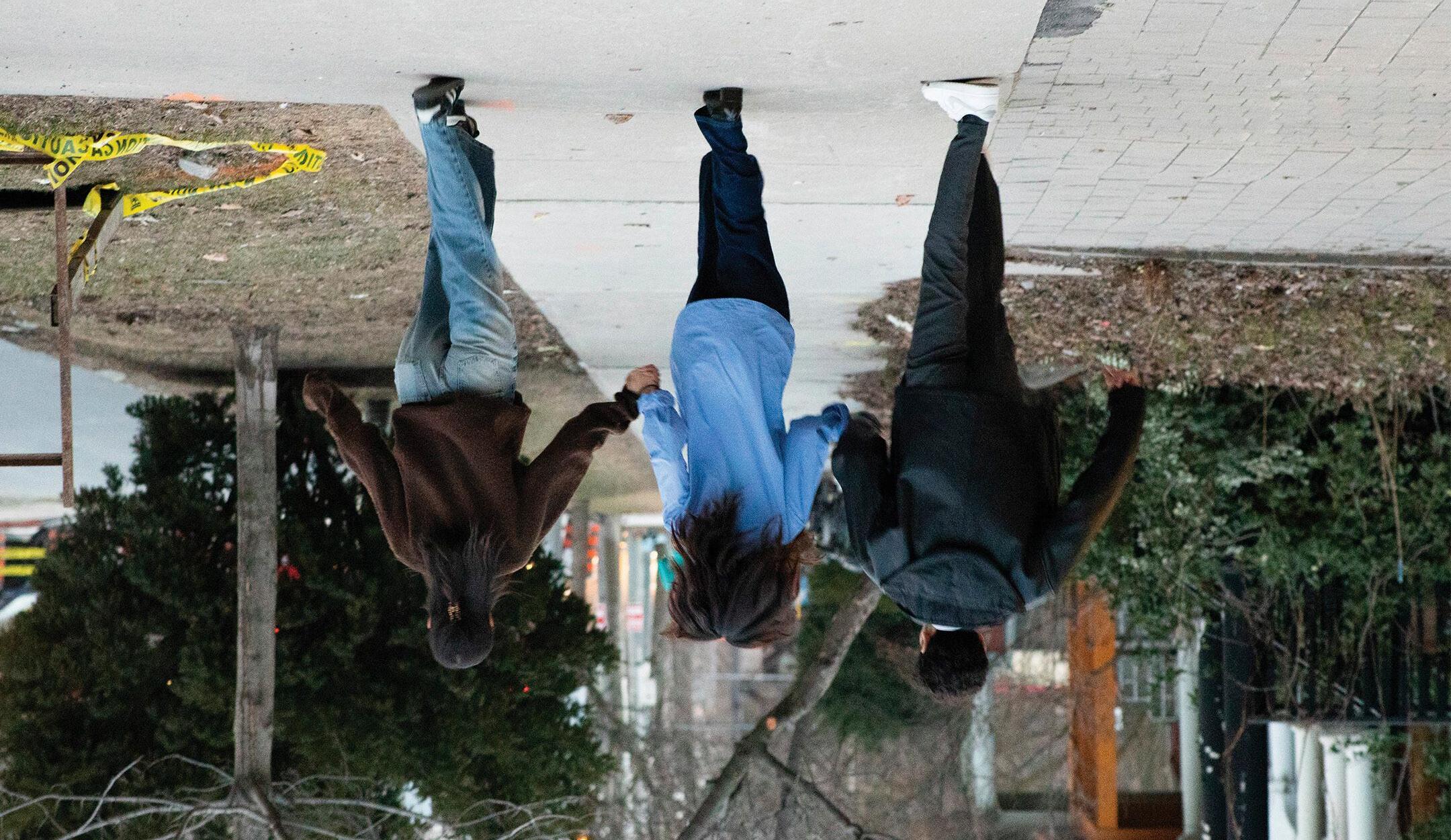
This story is currently still developing.
When asked about her next steps, Libeleanor threatened the public: “Oh, I’m getting out.”
She believes “select people” in the office don’t deserve rights and freedoms, namely everyone interviewed for this article.
When asked if she believed she was the dictator of The Farcity, Libeleanor said, “Yes, of course. I have very Machiavellian values.”
“I don’t know if you’ve noticed, but The Farcity is not a democratic system,” she shared. “It’s actually more like a dictatorship.”
When asked about the several allegations against her, she said, “They had it coming,” refusing to deny the allegations.
While in custody, The Farcity secured an interview with Libeleanor.
Libeleanor’s imprisonment
When asked about her betrayal, Iron Goddess (30 per cent less sugar) said, “I guess the insurgency takeover is the friends you make along the way.”
The Farcity was able to confirm that Iron Goddess (30 per cent less sugar) had been the one to call the police on Libeleanor.
The arrest On March 25, Libeleanor was arrested by the University of Toronto Police Service at The Varsity building in the middle of the masthead’s weekly meeting at approximately 7:30 pm.
When asked about the several “allegations” against Libeleanor, Iron Goddess (30 per cent less sugar) stated, “I do think there’s some sort of insurgency takeover right now at the end of this year.”
However, The Farcity has since debunked Iron Goddess (30 per cent less sugar)’s claims.
“I think there’s a certain other person on our masthead who’s been defaming others,” she claimed.
Aged-Editor defended Libeleanor’s actions.
In a statement to The Farcity, Iron Goddess (30 per cent less sugar) and Park apologist Man-I’ve-
“Just because she’s my [NFLEIC] doesn’t mean she’s immune to criticism,” the Under-Age Editor remarked, adding that Libeleanor should be imprisoned for her actions.
this but stated that “Unfortunately, I think the similarities are undeniable from the short stature to the bob.”
Currently Under-Age drinkediting denied saying
“Lord Farquaad,” from the cult classic Shrek franchise.
Currently Under-Age drinkediting called Libeleanor
On February 8, Libeleanor claimed that the
“Really, really hard.”
“[Libeleanor] needs to be punished,” she added.
Rizzamai told The Farcity that Libeleanor “made her feel like a criminal” for something she wasn’t liable for.
think it was me who clogged the toilet because I didn’t even flush the toilet.”
On March 20, Libeleanor defamed Toilet Flusher, Rizzamai, as well, publishing that she said, “I don’t
When asked about her thoughts on Libeleanor sharing this defamatory statement, Sigarette-less noted, “It’s just typical Libeleanor. She thinks that just because she’s NFLEIC, she can misquote us and that her quotes have inherent truth to them as head of this journalistic body.”
“I loathe soggy things,” she said. “I have never eaten a friend in my life.”
In an interview with The Farcity, Sophie Go Sigarette-less denied these claims.
On February 2, Libeleanor falsely quoted Sophie Go Sigarette-less, she Hears, as saying, “I like soggy things. When I was in elementary school, I used to always eat my friends.”
Varsity Party Whip believes Libeleanor should starve as punishment.
She noted that the libel made her feel “really alone, sad, angry, and denied.”
On March 21, Libeleanor claimed that the Whip said, “I’m pro-starvation,” in response to another masthead member stating they hadn’t eaten that day. Whip denied the claim, stating, “Misquote. Detrimental.”
She then broke down Libeleanor’s rationale: “She drives off of the fuel that comes with a misquote. She breathes it in and that gets her through her evenings.”
When asked about her thoughts on Alberta, Whip told The Farcity, “Never said that. Never been. Never will.”
Masthead members reflect on their trauma
“Really alone, sad, angry, and denied”:
construct and all of them are just sheep,” the
oft-demanded ideal of neutrality is just a social
previously written for News. “The Farcity sat me in a cold, dark room and forced me to pick a side then and there. They even yelled at me when I initially refused, arguing that the
Now an Associate Opinion Editor, he had only
“It was awful,” said Feminist Finance Bro.
“Opinion and News writers shall never be divided again!” the three yelled in unison as they skipped down Sussex avenue.
Miss Information and Selia’s Sandwich-maker surrendered their weapons and held each other’s hands.
Until today. The Battle of Truths — in which constant hostilities and combat ensued from both sides between May 2024 to March 2025 — had finally come to an end. After years of public calls for a truce, Opinion’s Thought Police, and News’
Many readers and writers in the past have voiced their concern over this divide, calling for the end to the paper curtain. The court of public opinion has been loud and clear. But The Farcity’s history has shown that opinions have never been their priority.
For as long as any living soul can remember, The Farcity has been divided by a News–Opinion policy, which prevents writers from consistently contributing to the News and Opinion sections at the same time. According to The Farcity’s document on Editorial Practices, “This is done to mitigate both the optics and practice of journalistic bias.”
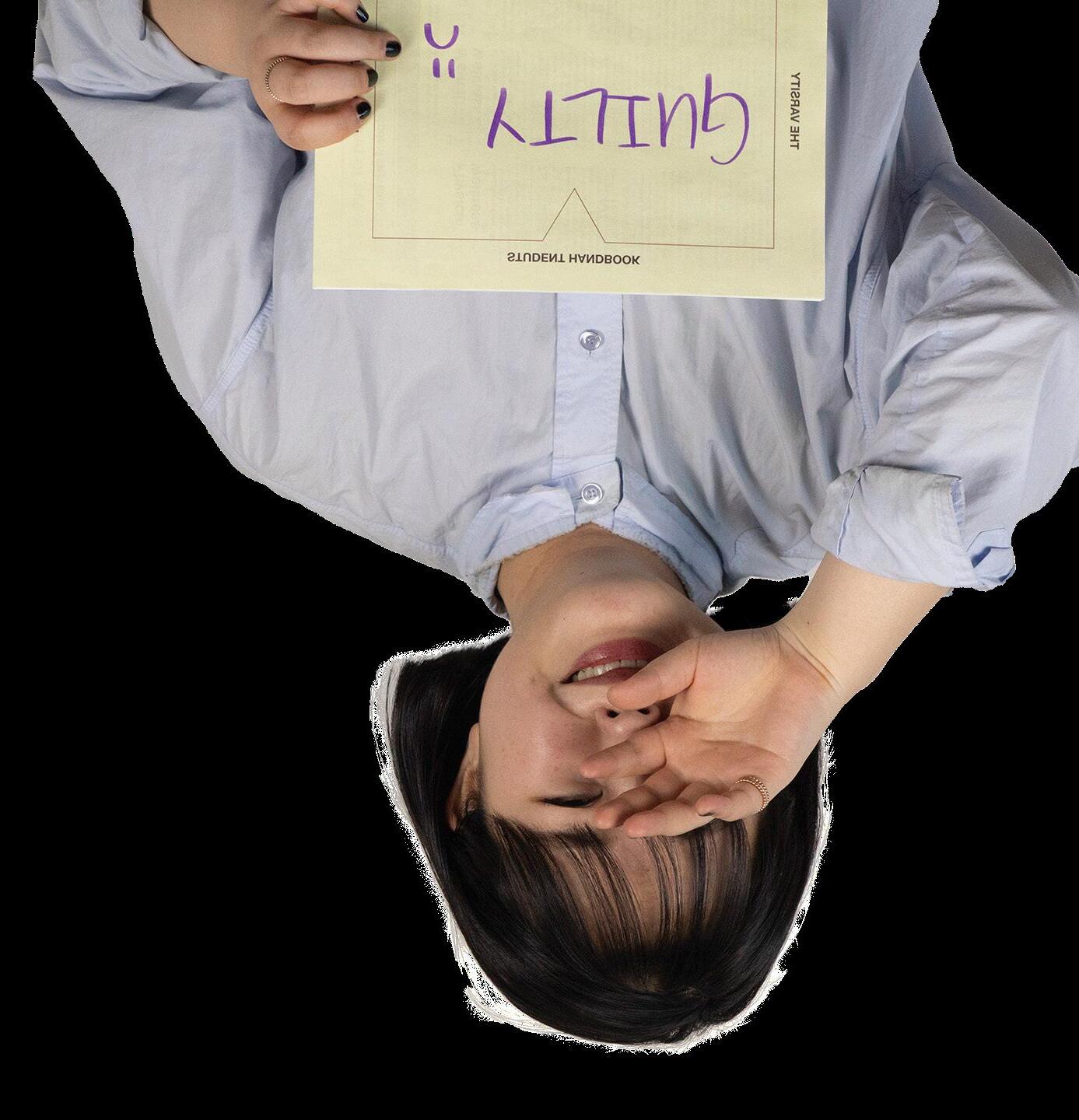
After clarifying that the BTS ARMY referred to the group’s fanbase, rather than the South Korean military, Specs said, “I apologize to them too, I guess.”
When asked if she would like to issue an apology to the BTS ARMY, Specs said, “To the South Korean army, I hope that you can forgive everything that was said. Your bravest men, fighting and protecting your country with their full hearts. I hope the men of BTS can understand my perspective.”
The Farcity reacts On January 26, Libeleanor libellously quoted beloved Token Redhead Diversity Hire, Specs, as stating, “BTS was imported onto me.” Specs denied the statement.
Since May 2024, the beginning of The Farcity’s 145th volume, the NFLEIC had been “allegedly” publishing defamatory statements about The Farcity’s masthead team on their “quotes” Slack channel. In light of the “allegations,” The Farcity sat down with masthead members affected by Libeleanor’s rampage.
On March 25, during The Farcity’s final masthead meeting of the volume, The Farcity’s not feeling like editing-in-chief (NFLEIC) Libeleanor was arrested on charges of defamatory libel.

The Varsity is pushing the sleepmaxxing agenda, and I will not take it lying down.
For the typical sleep-deprived student, these are absurd numbers. As my fellow STEM soldiers will agree, due tomorrow means do tomorrow. What good is a deadline if not for a burst of motivation just long enough to bang out a paper or lab report? Sleep is a huge waste of time. It’s fine to stay up all night, just as long as you make it to class the next day. Why else would your professor set the deadline for a minute before the lecture begins? Obviously, they expect you to use the night to create a masterpiece, like so many of us do.
anonymous Varsity staff member disclosed to me.
If they’re already averaging seven hours of sleep per night, it’s only a matter of time before they start getting eight, or 14, which is the same number an
improving the quantity of sleep. Like looksmaxxing, however, is it also a slippery slope? Can The Varsity ever sleep enough?
Sleepmaxxing is an internet term used to describe
The Varsity is sleepmaxxing
It seems that the sandwich-maker, at a whopping eight hours per night, is unaware of the people’s problems. Perhaps the excess sleep is getting to his head.
When we reached out to The Varsity for some explanation of this unprecedented behaviour, their suspiciously attractive anchorman 2, Selia’s sandwich-maker, said, “Fix yourself. I’m not for the people.”
Upon learning that The Varsity was so indulgent with their post-sunset hours, a colleague commented, “What could they possibly need nine hours of sleep for? It’s not like they’re working.”
In an encrypted communication forum, The Farcity asked Varsity staff members about the average number of hours they sleep per night. Of 32 responses, 28 per cent of staff slept six hours per night, and 25 per cent slept five hours. 34 per cent of respondents slept eight or more hours per night, and a few who were too afraid of lurking chatbots disclosed numbers below four.
Is too much sleep an issue?
The Varsity, U of T’s tri-campus student publication, is run by many such individuals. You may be wondering, are they ok? Where do they find the time? This Farcity journalist took the liberty to investigate what really keeps The Varsity running.
Being a student is hard. We juggle lectures, tutorials, commuting, and overpriced matcha lattes, but for the average student journalist, taking on a near full-time extracurricular is a piece of cake.




Miss Micromanagement, The Farcity’s extremely attractive resident yarn hooker, was able to manufacture Shringle a new arm that has brought him back to full health.
Libeleanor did not comment on why she could not get her facts right.
defamatory liable for misquoting The Varsity’s staff in a quotes Slack channel — also stated that Miss Information is lying and that they were together at King’s College Circle during last summer’s pro-Palestinian encampment. However, the encampment ended in July.
In response to these pretty reasonable allegations, Libeleanor denied any involvement in the crime and referred to Shringle as an “inanimate object.” Libeleanor — who is facing one count of
“I was in the office the day that Shringle’s arm was taken off, and I saw somebody flee with a guilty look on their face and in distress, and that person was Libeleanor.”
Miss Information, The Farcity’s hairclipped propaganda spreader, told The Farcity in an exclusive interview the real culprit behind this crime.
removed. When asked where he was the night of the crime, Slow-zair refused to answer and told The Farcity he didn’t have an alibi.
Hire, was the first person to find Shringle. She told The Farcity how much this crime impacted her.
Specs, The Farcity’s Token Redhead Diversity
When asked multiple times to confirm the names of potential suspects, Libeleanor told The Farcity to stop asking questions.
“I personally wasn’t too heavily impacted by the incident, because I felt like Shringle has earned some woes from some people throughout this past couple years,” said Libeleanor. “I firmly believe that it was from the previous masthead. And I can’t name names, but I have some in mind.”
(NFLEIC) Libeleanor spoke about how this crime affected her.
In an interview, Not Feeling Like Editing-in-Chief
In an extremely exclusive statement given to no other outlet, UofTPS wrote that they were pretty sure this was a targeted attack.
The University of Toronto Police Service (UofTPS) confirmed to The Farcity that his arm was taken late at night between 12:00am and 6:00 am.
On August 31, 2024, Shringle — The Varsity’s beloved mascot — was found maimed in The Varsity’s office. It is alleged that a suspect entered The Varsity office while Shringle was asleep and tore off his arm, leaving him lying on the floor.
Content warning: This article discusses a graphic and shocking crime.
Anchorman 2
Selia’s sandwich maker
“The investigation is ongoing, but we believe a suspect will emerge. This is an isolated attack; however, we don’t know who took the arm.” As of reporting, where the arm was, who took it, or what weird things someone may do with it. When asked why seven months of investigating have led to nothing, UofTPS told since 2008 and is at least 17 years old. Originally known as “Animal Monster,” members of Varsity have mixed feelings about a crime right in their newsroom.
’sVarsity mascot Shringle


Once these burdens are lifted at the squatty potty, I become unstoppable, un-toppable, and I am, in fact, the shit.
Unlike Miss Swan, my ordeal is a solitary one, but the result is the same. The effect feels like a complete cosmetic comeback; I’m talking full facial reconstruction, liposuction, and a BBL. I am reborn, made new, snatched for the gods and cleaner than the heart of a priest — allegedly.
the stove on. She is the rising cost of living as an international student, and the anxiety of finding work after graduation; she is every bad decision I make when I’m lonely in the dark, everything that I eat, everything that I regret, and everyone that I allegedly don’t give a shit about; she is what I feel when I think about my home country; she is corruption and evil, and human nature itself. But when I look at my soft chocolate child, my beautiful butt baby Dumpelina, after our ordeal, I also see what I survived, and what I am returning constipated, and then by my friends when I was heartbroken.
This baby is my fear of returning from a long day to find my apartment on fire because I left
always arrive when everything else is falling apart, because everything is always falling apart. And that means something.
I also cannot help that while I download my deadly brown load, I must place it in the larger context of the overarching shit of things, the poop of it all, and the general shitty state of my shitty little life. Like Bella’s baby, mine seems to
“BOMBOCLARTT!” as the monster departs from your body; it’s all a bit too much for someone as tender as me.
Like our mousy teenage vampire bride, there’s the looming possibility that I may not survive the birth. The sweating and puffing. The shame of holding your hands on your knees like the Angelina Jolie of Lana Del Rey’s mythical memory, spreading your bum and ripping a shart so phenomenally loud that you fear your roommate must think your cheeks are lined with velcro, the final great push that makes you shout,


